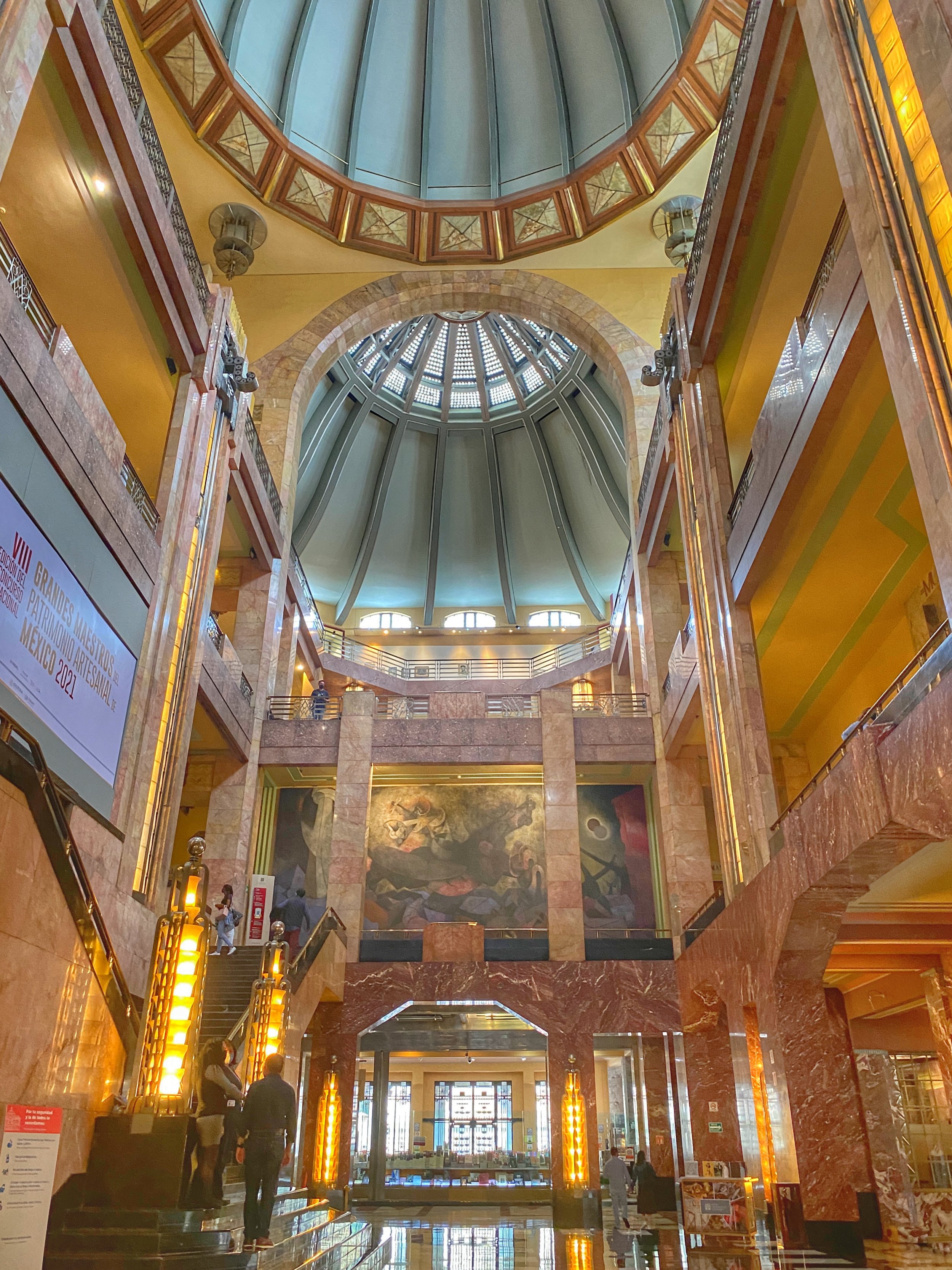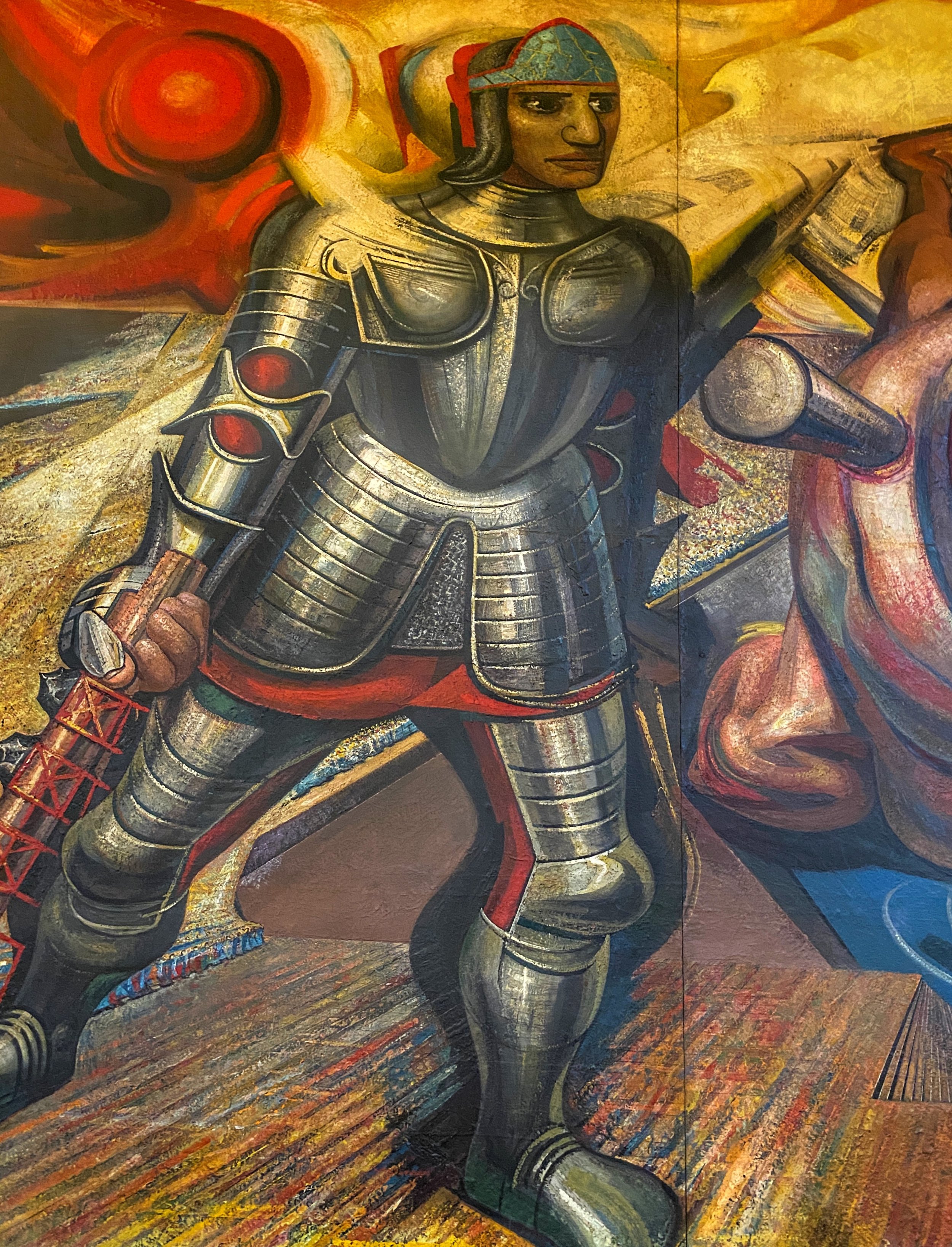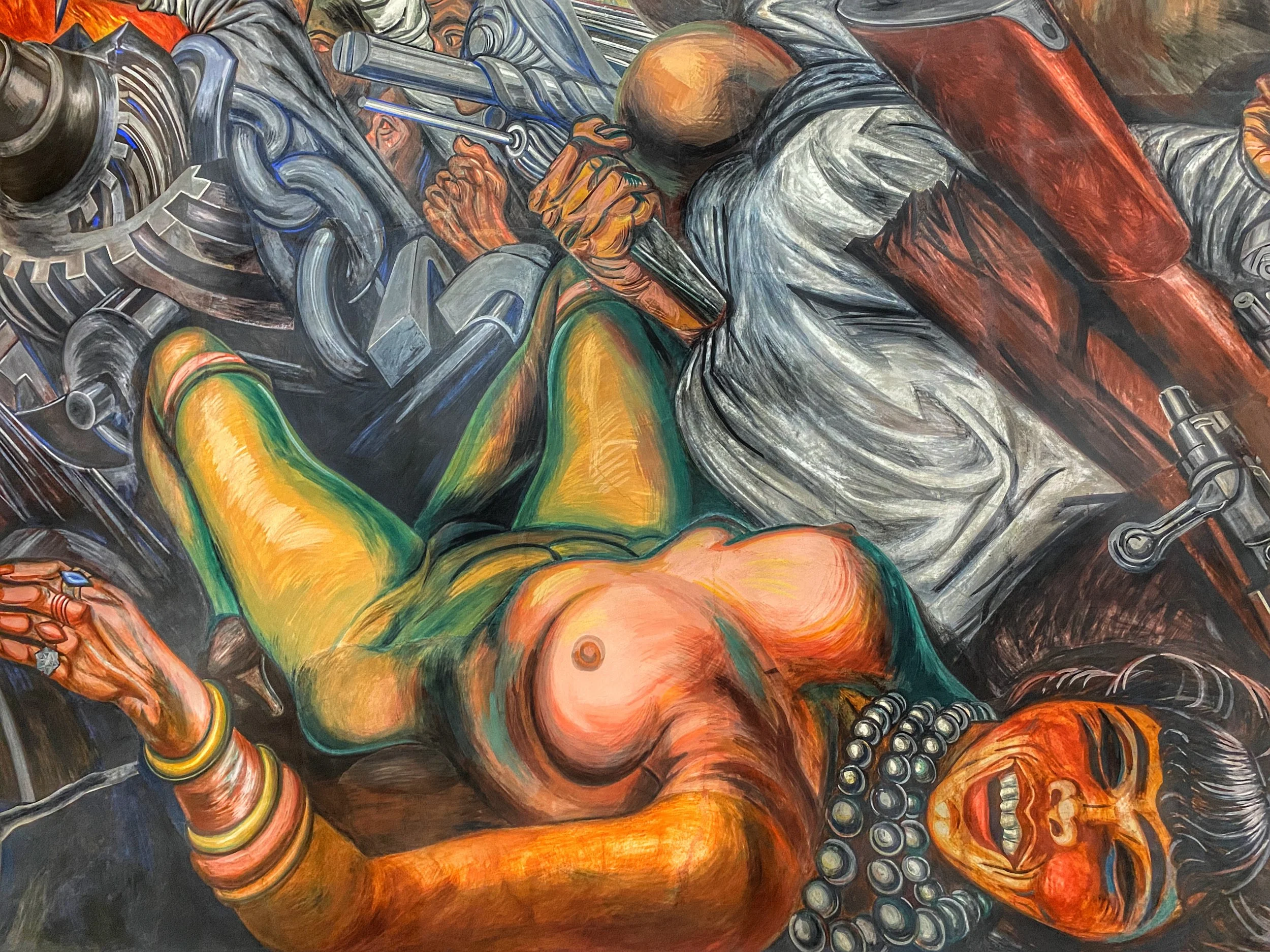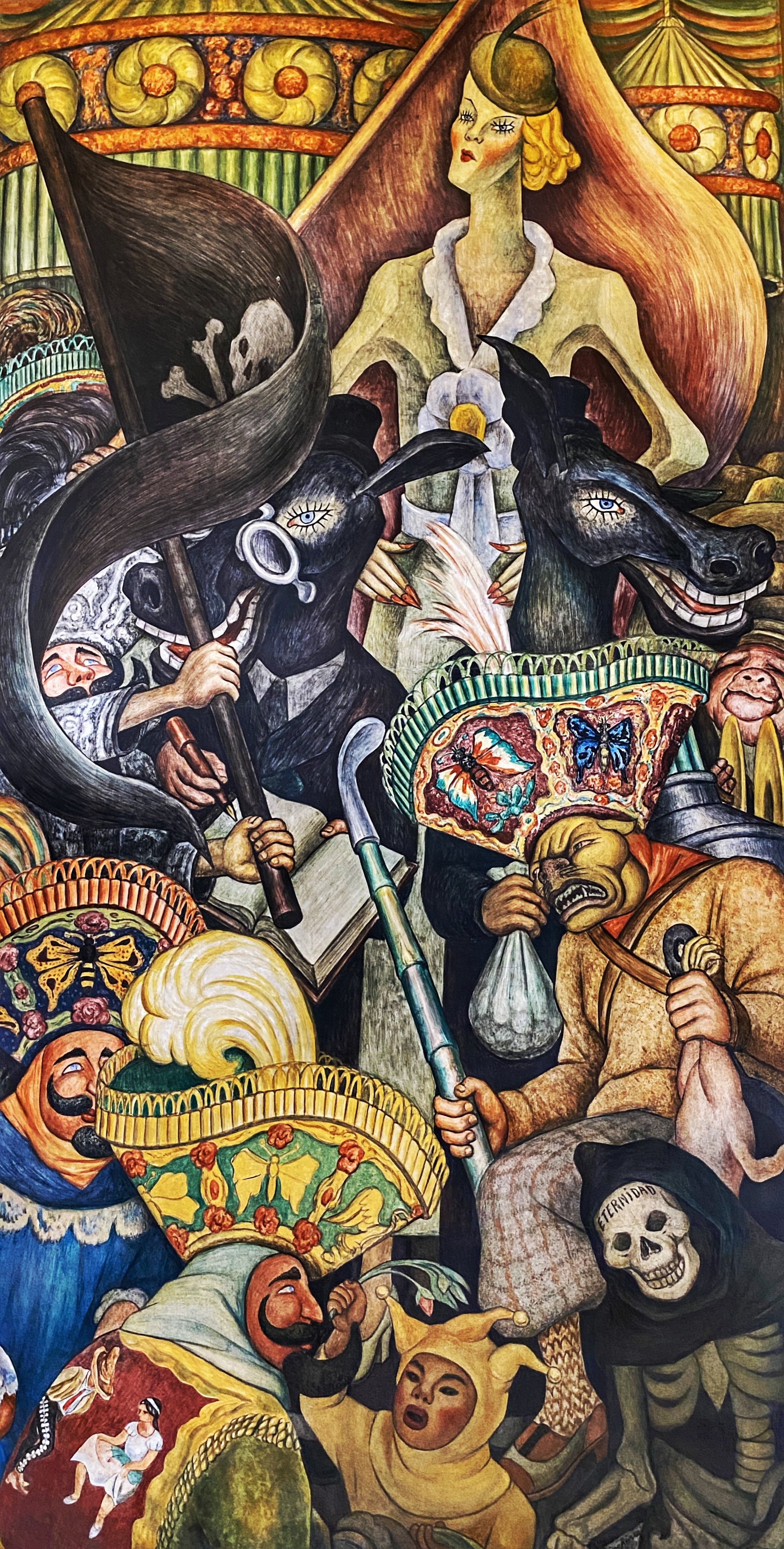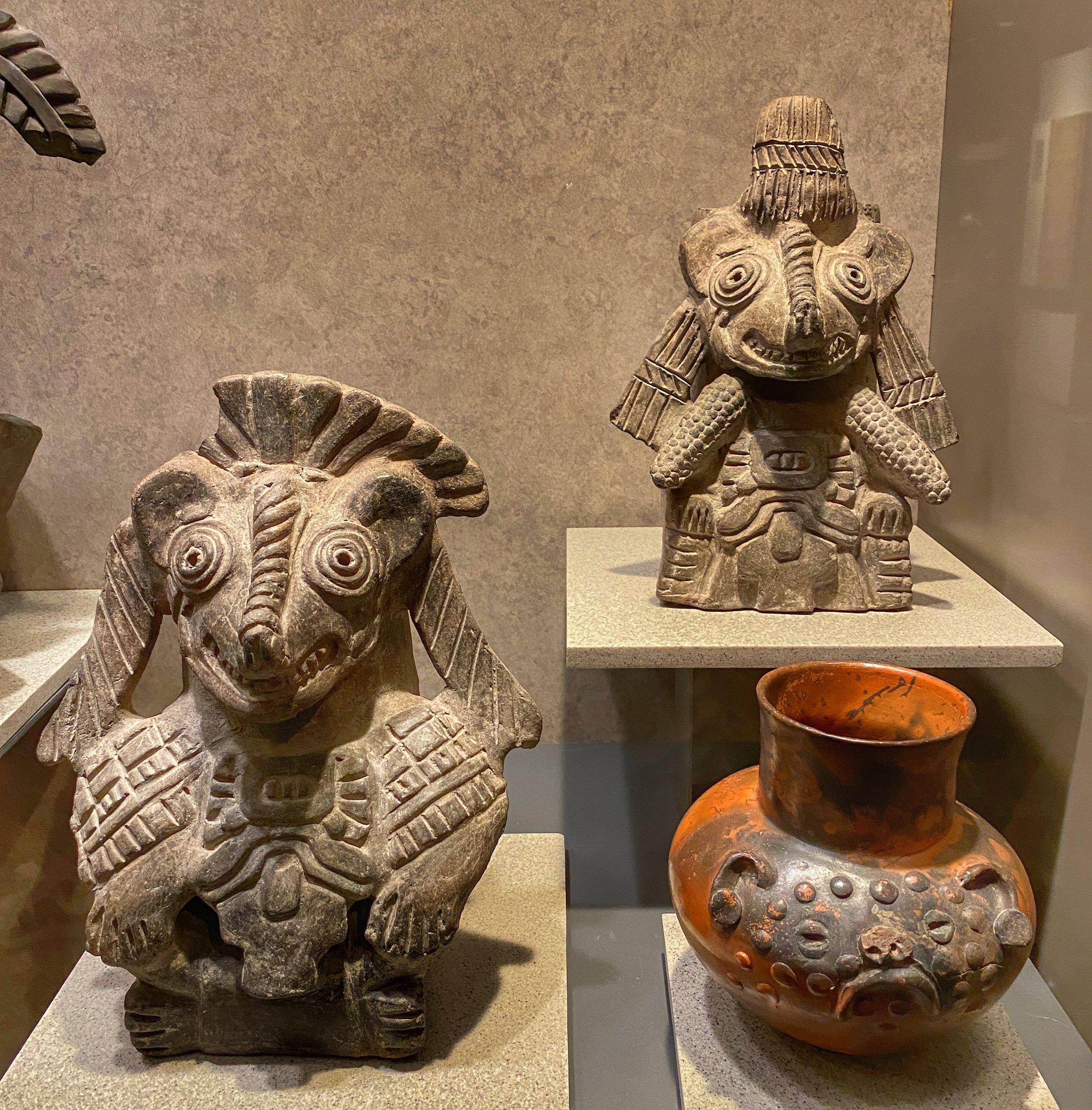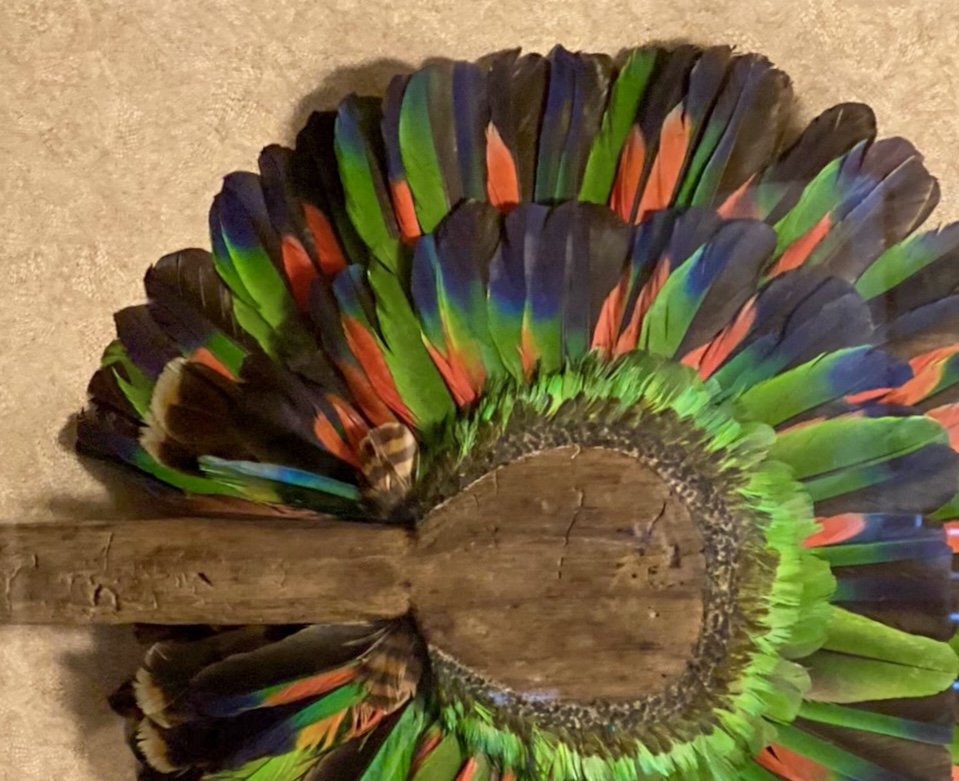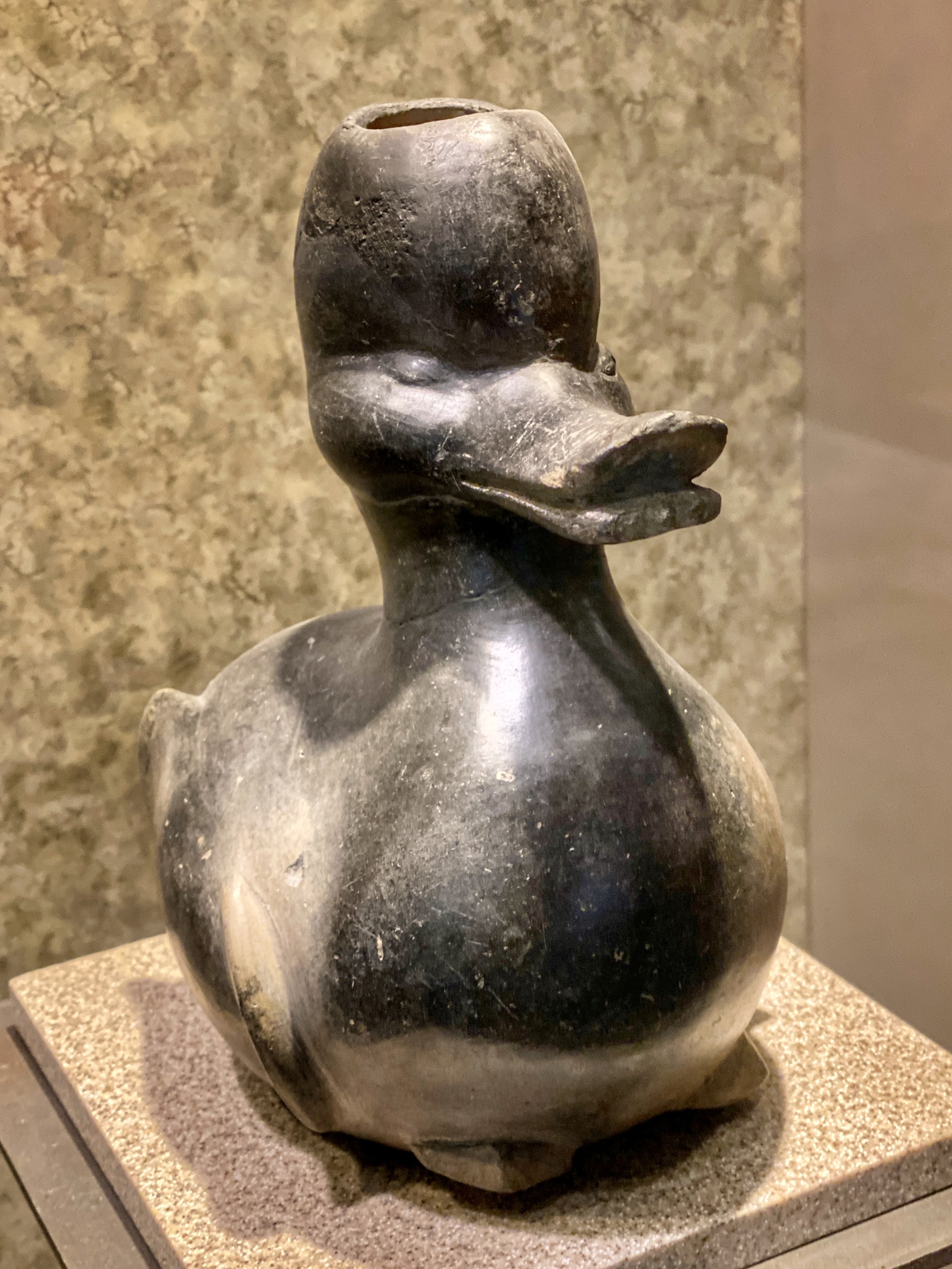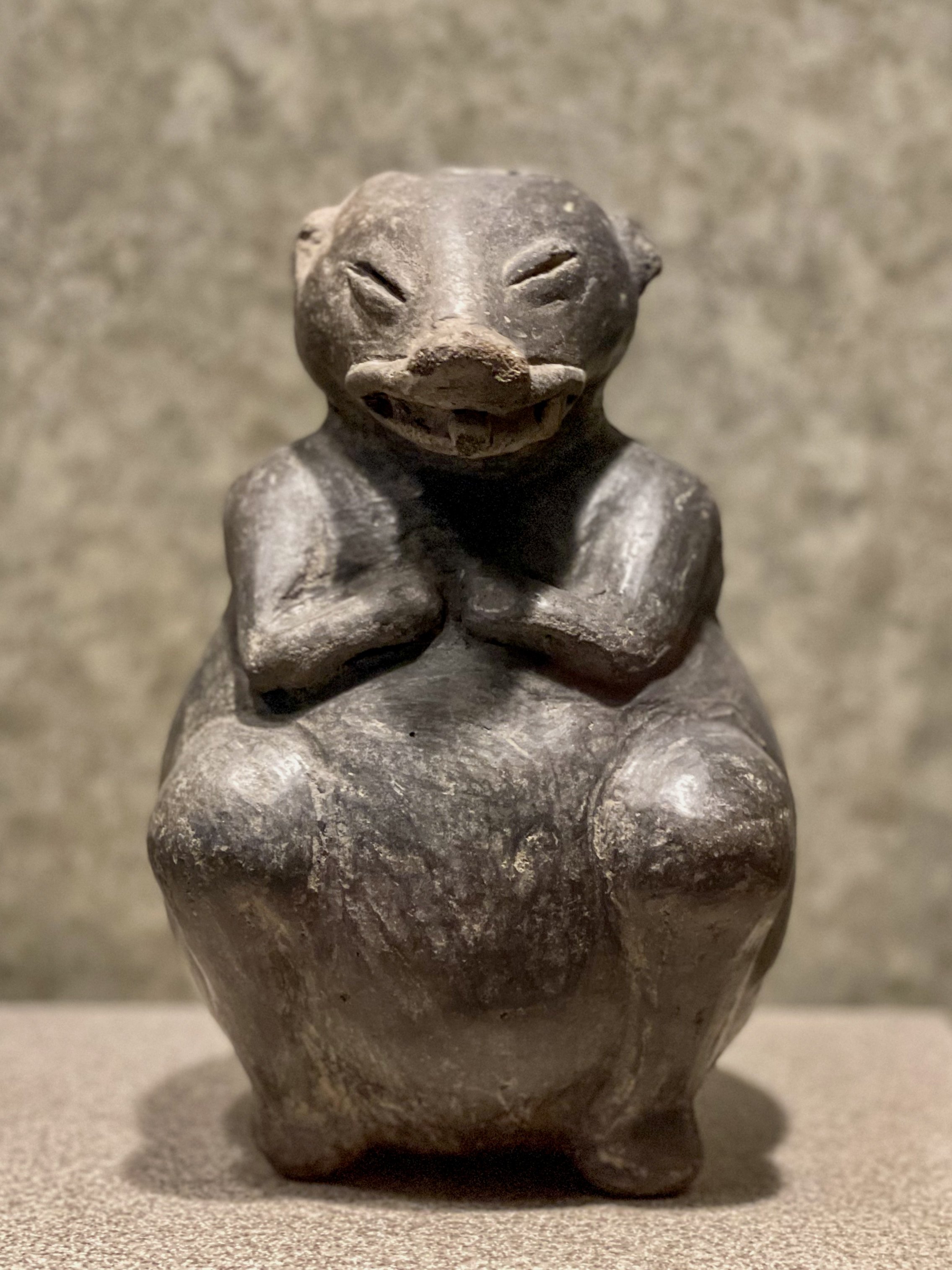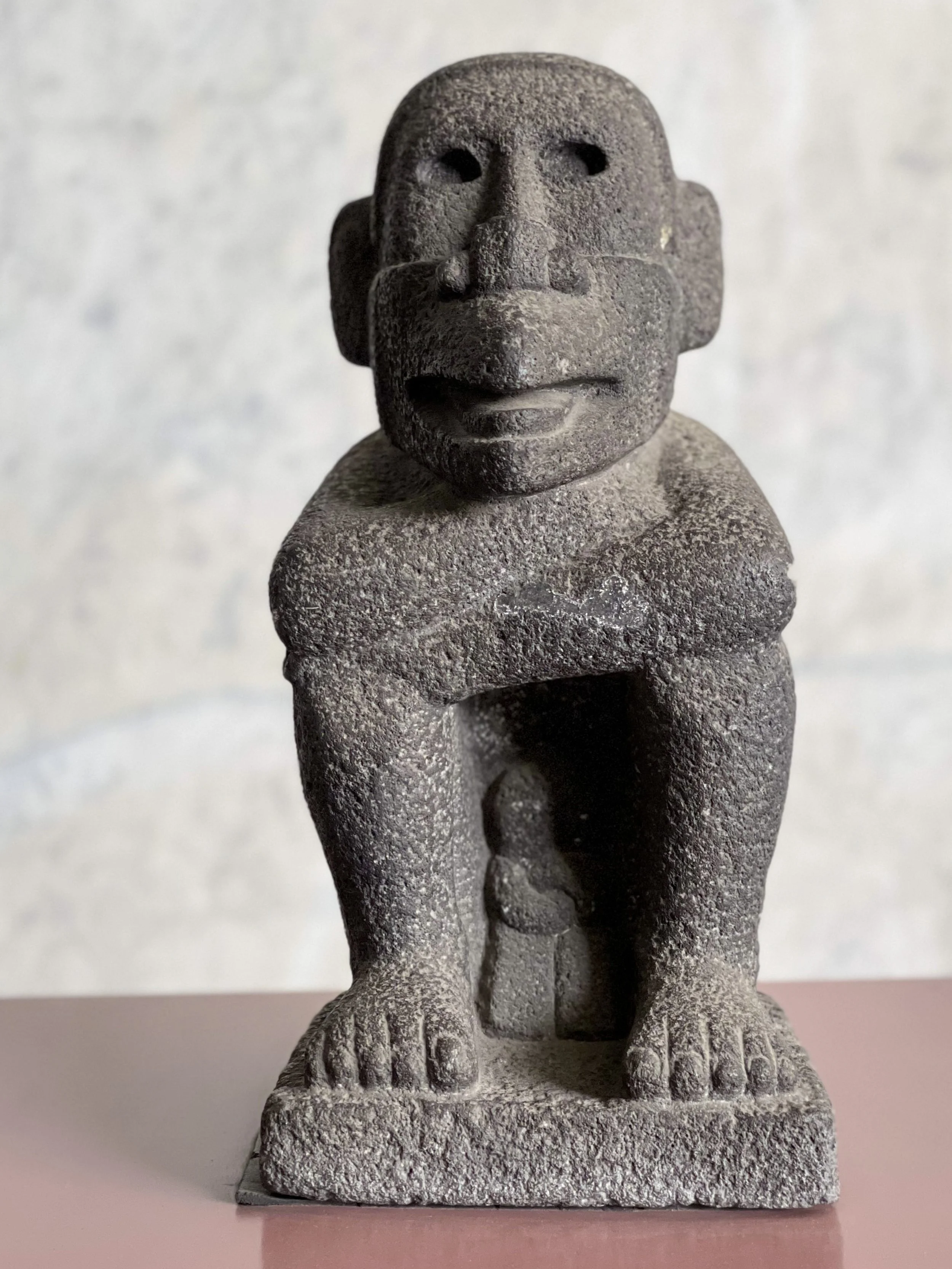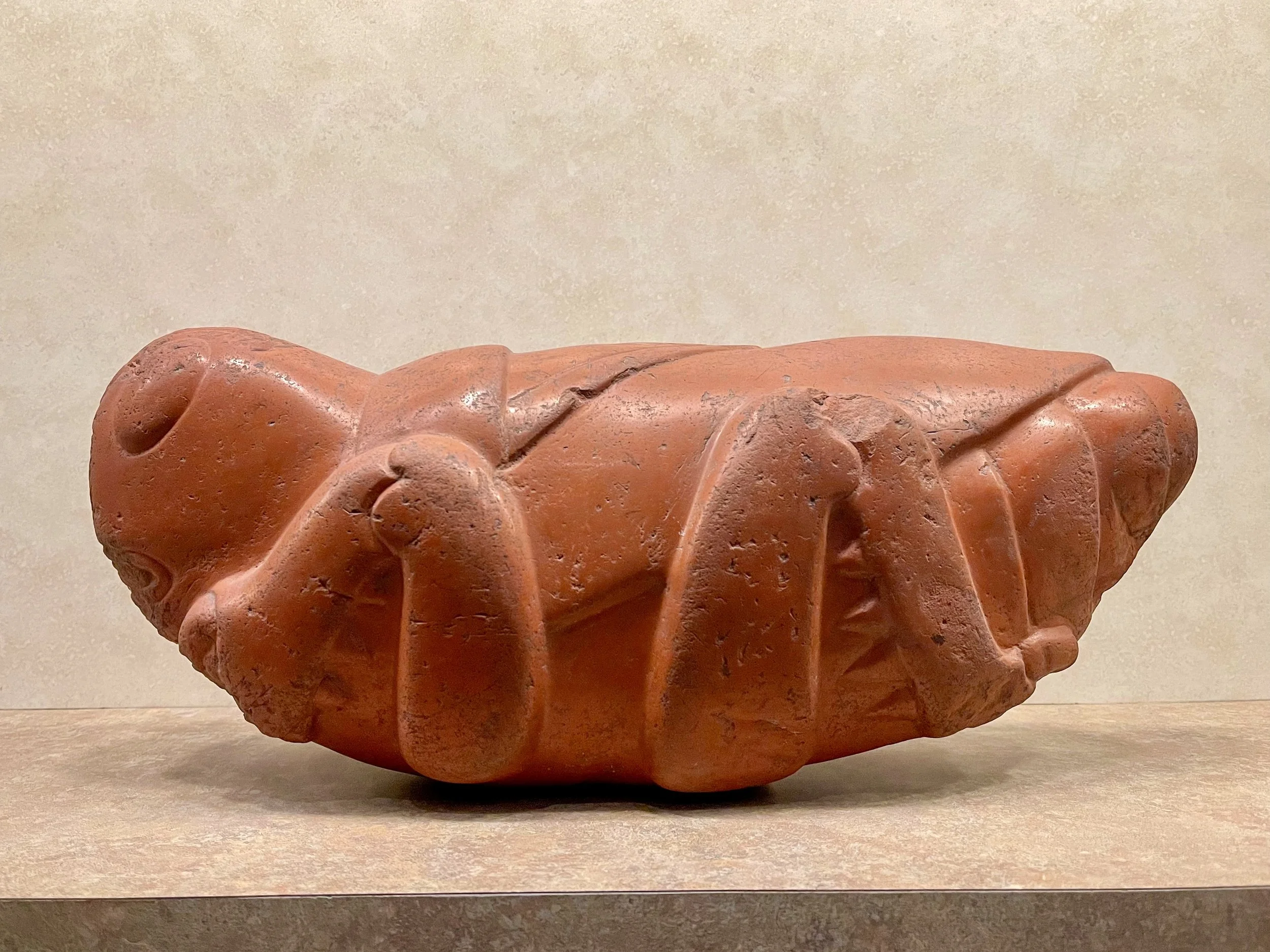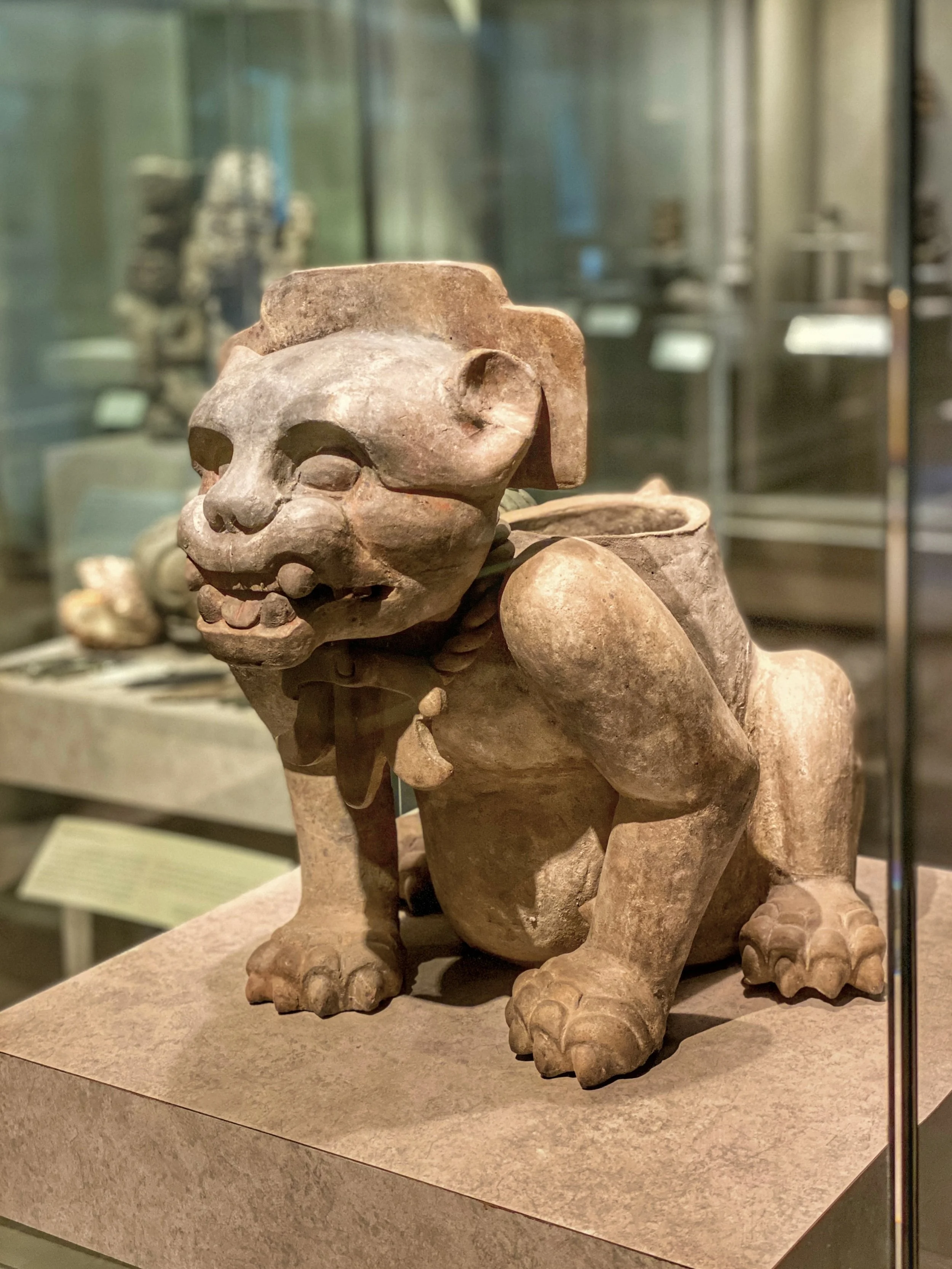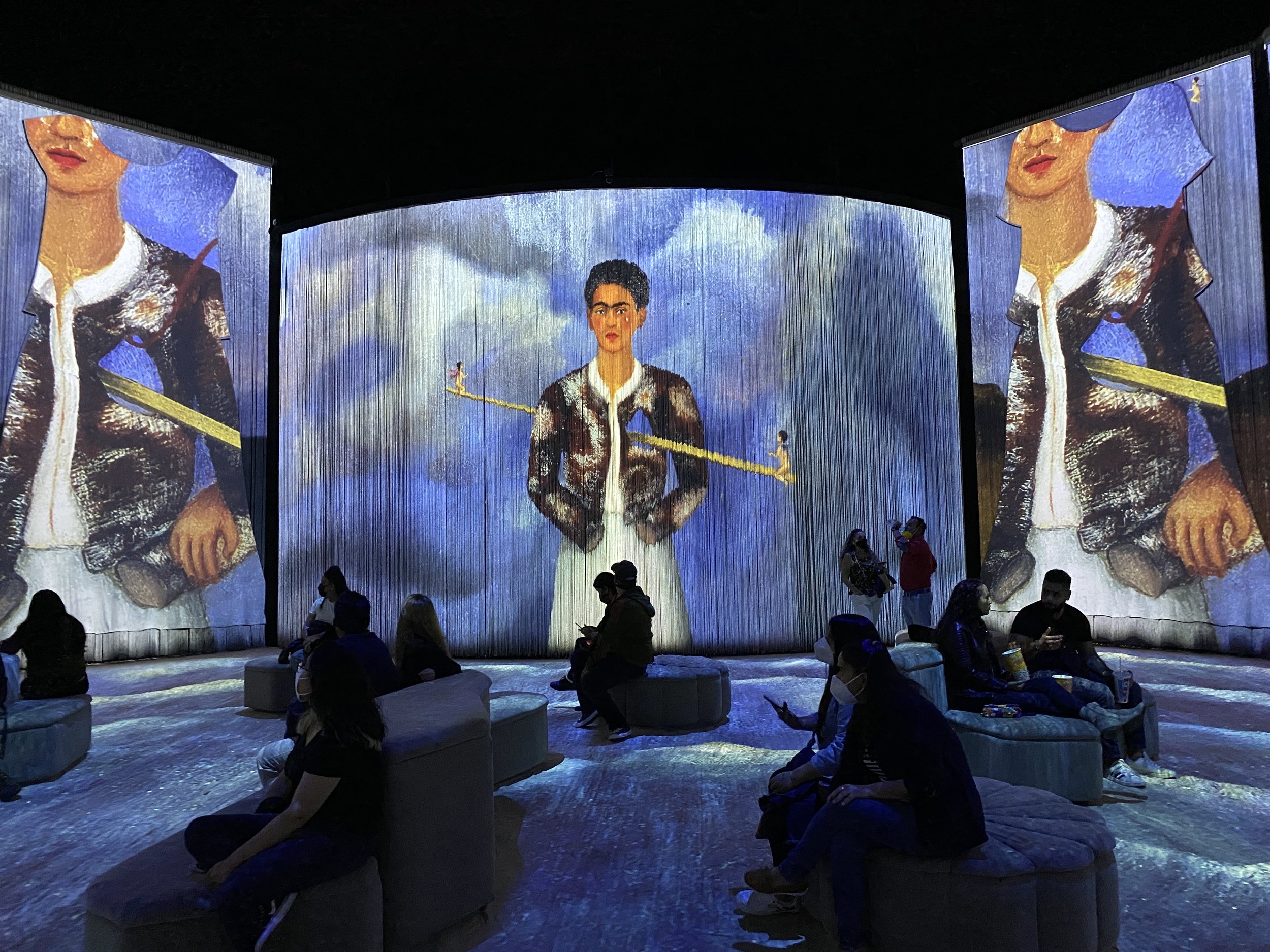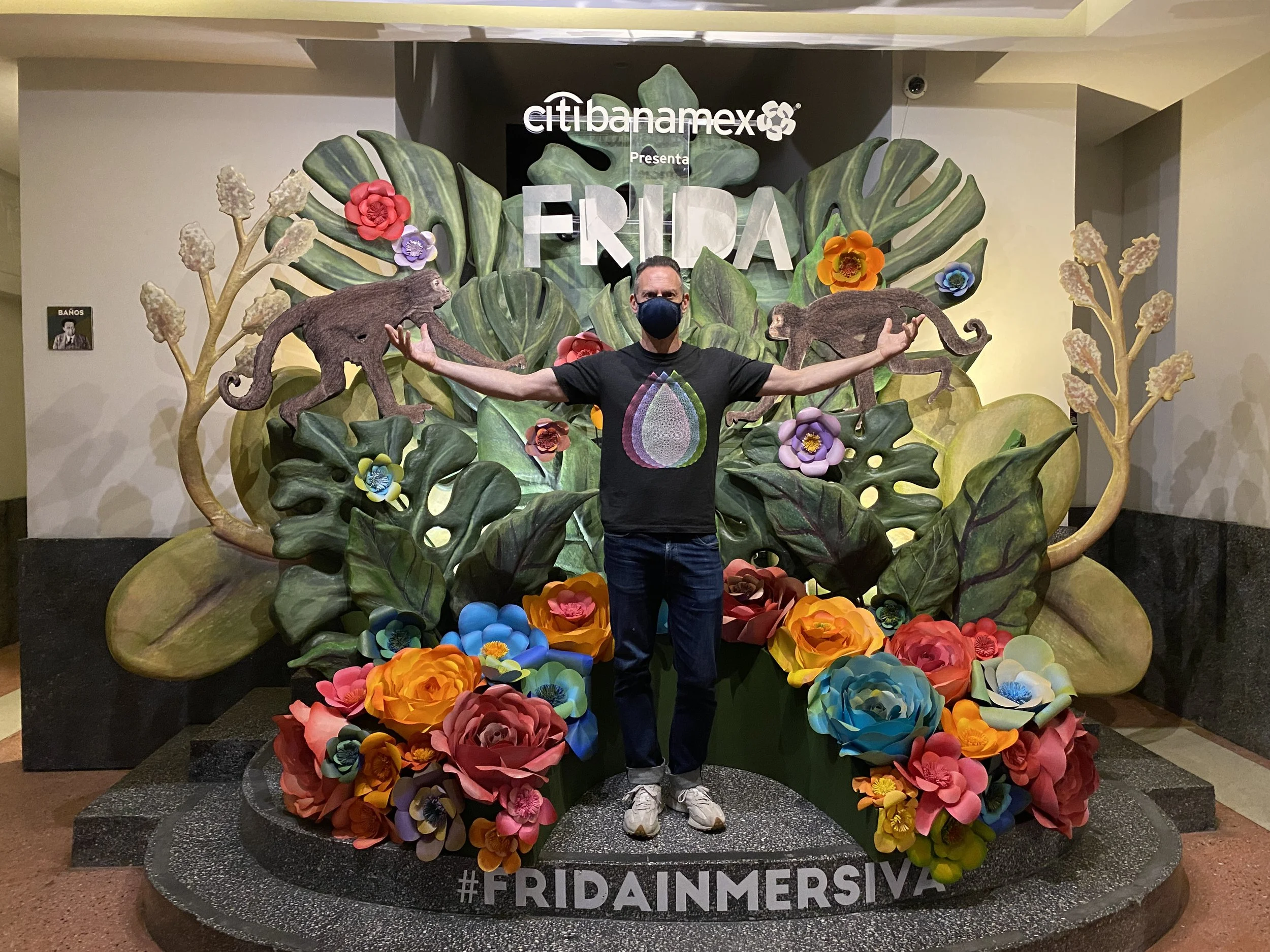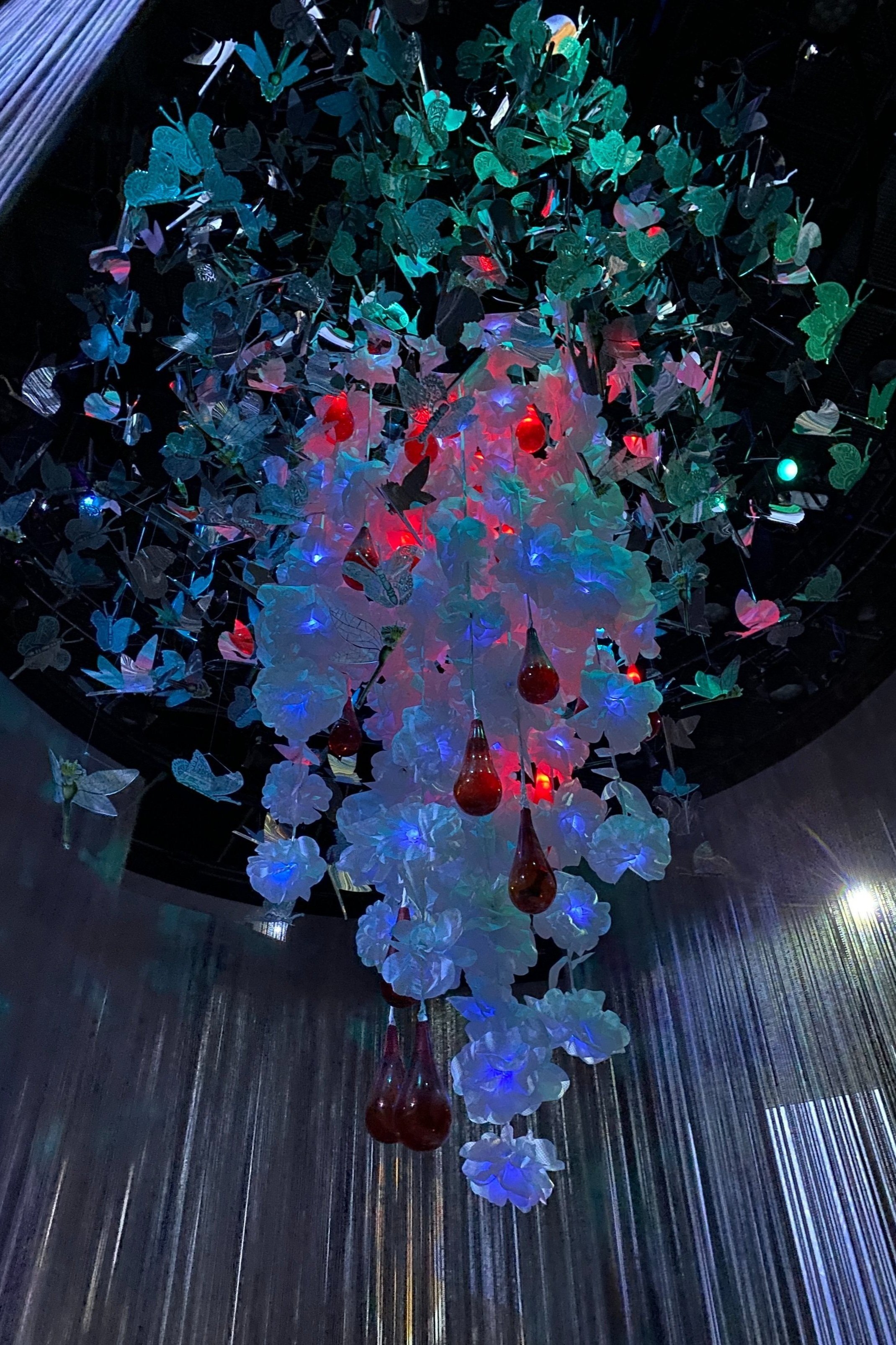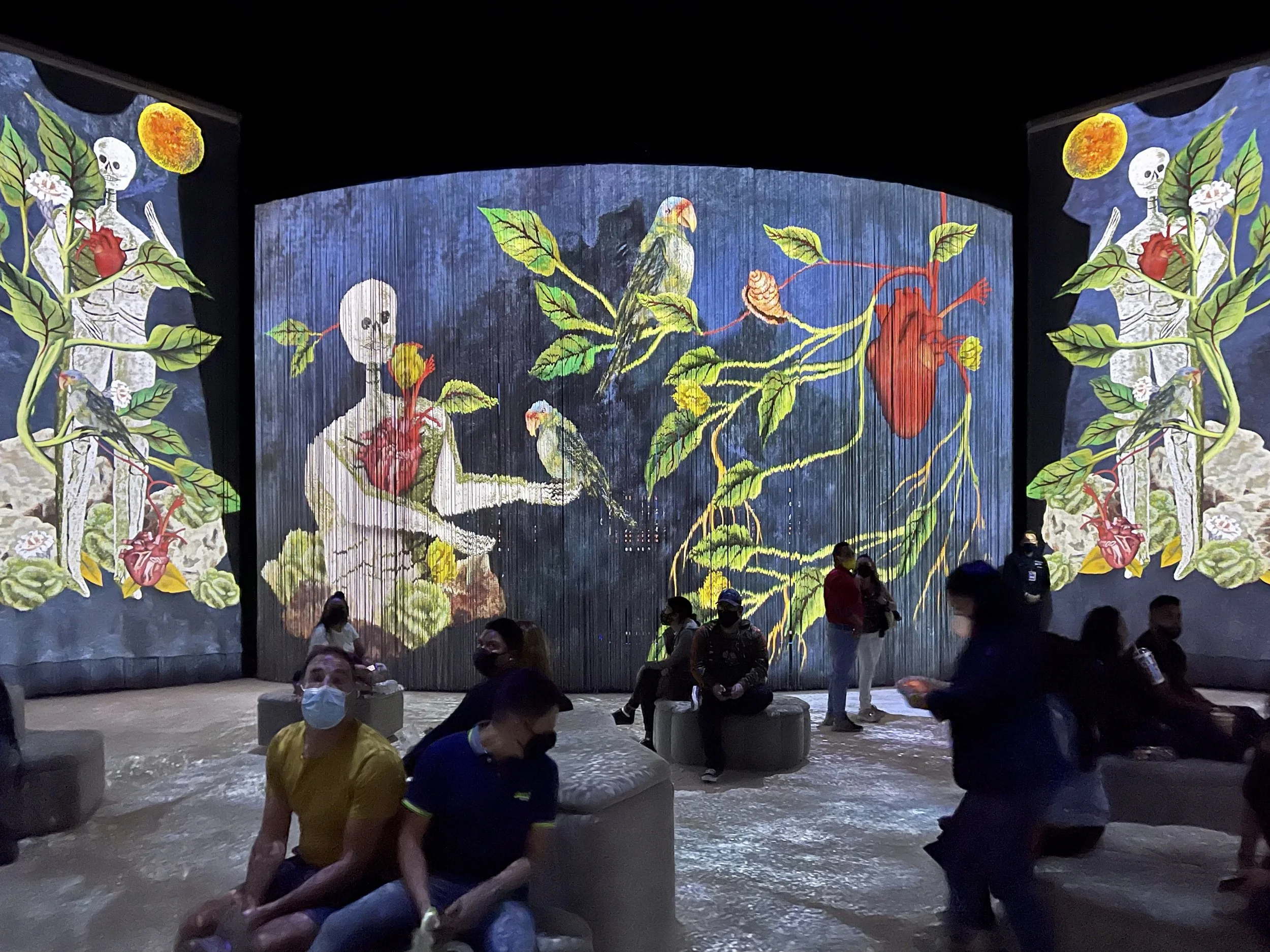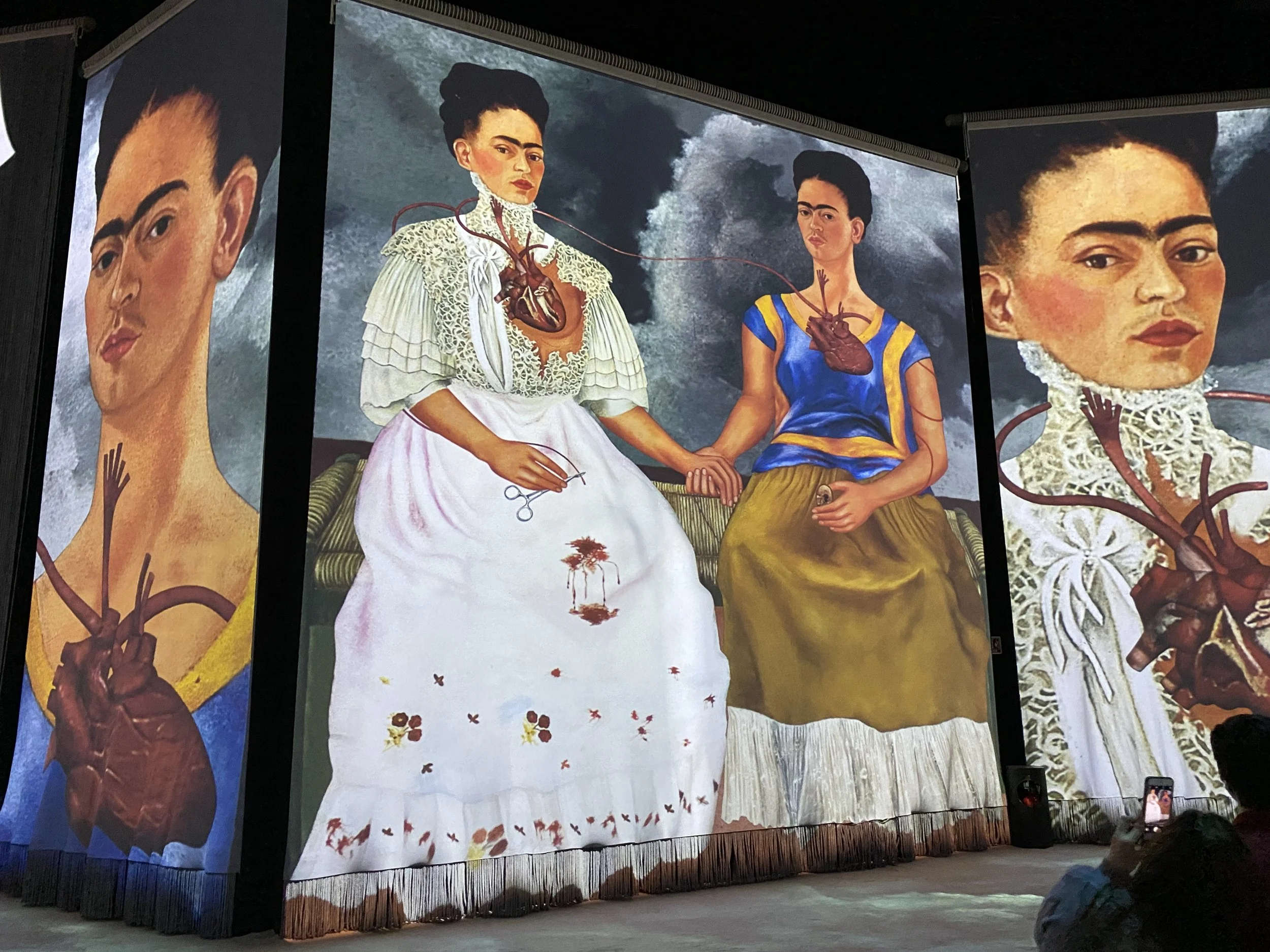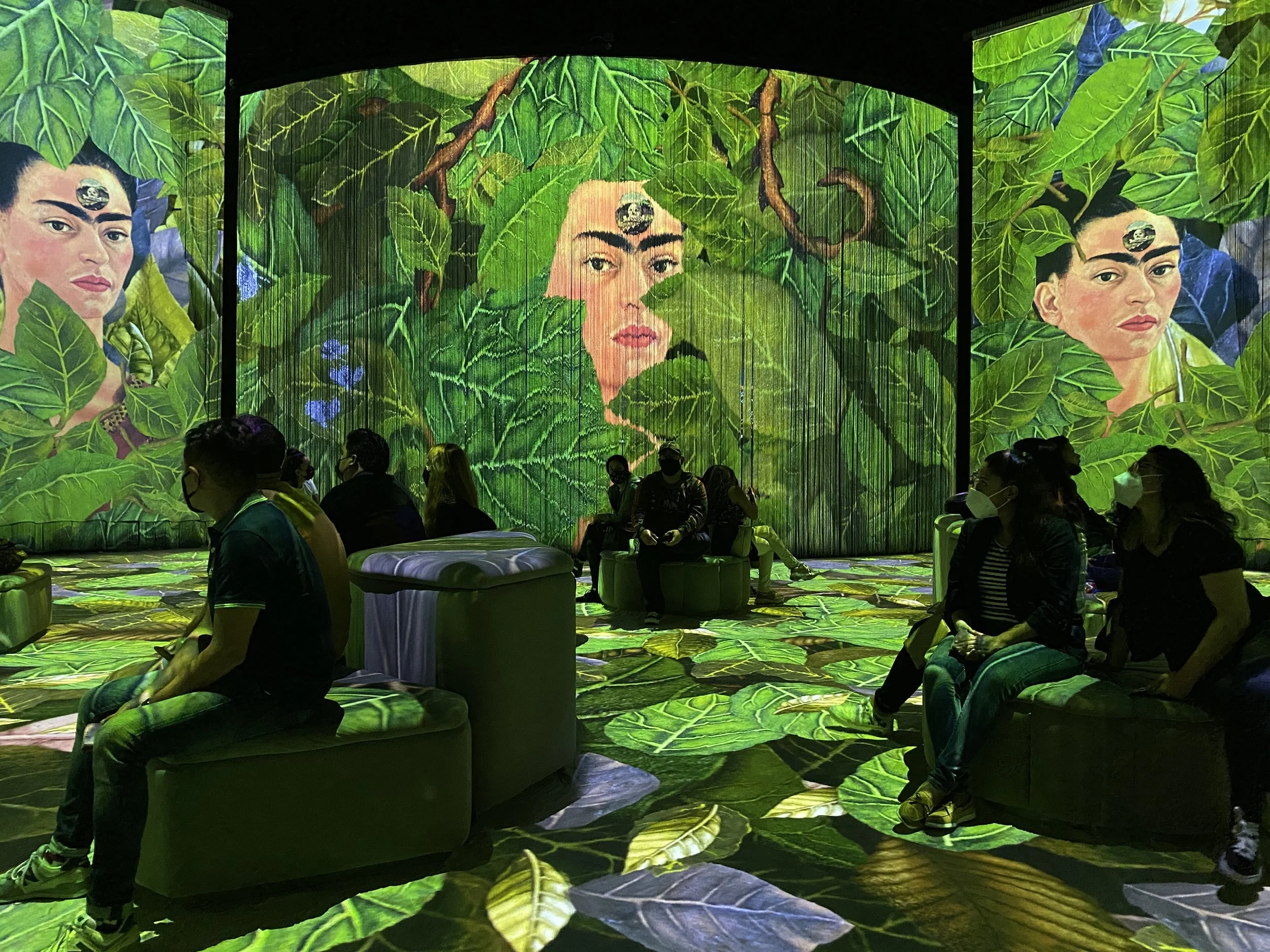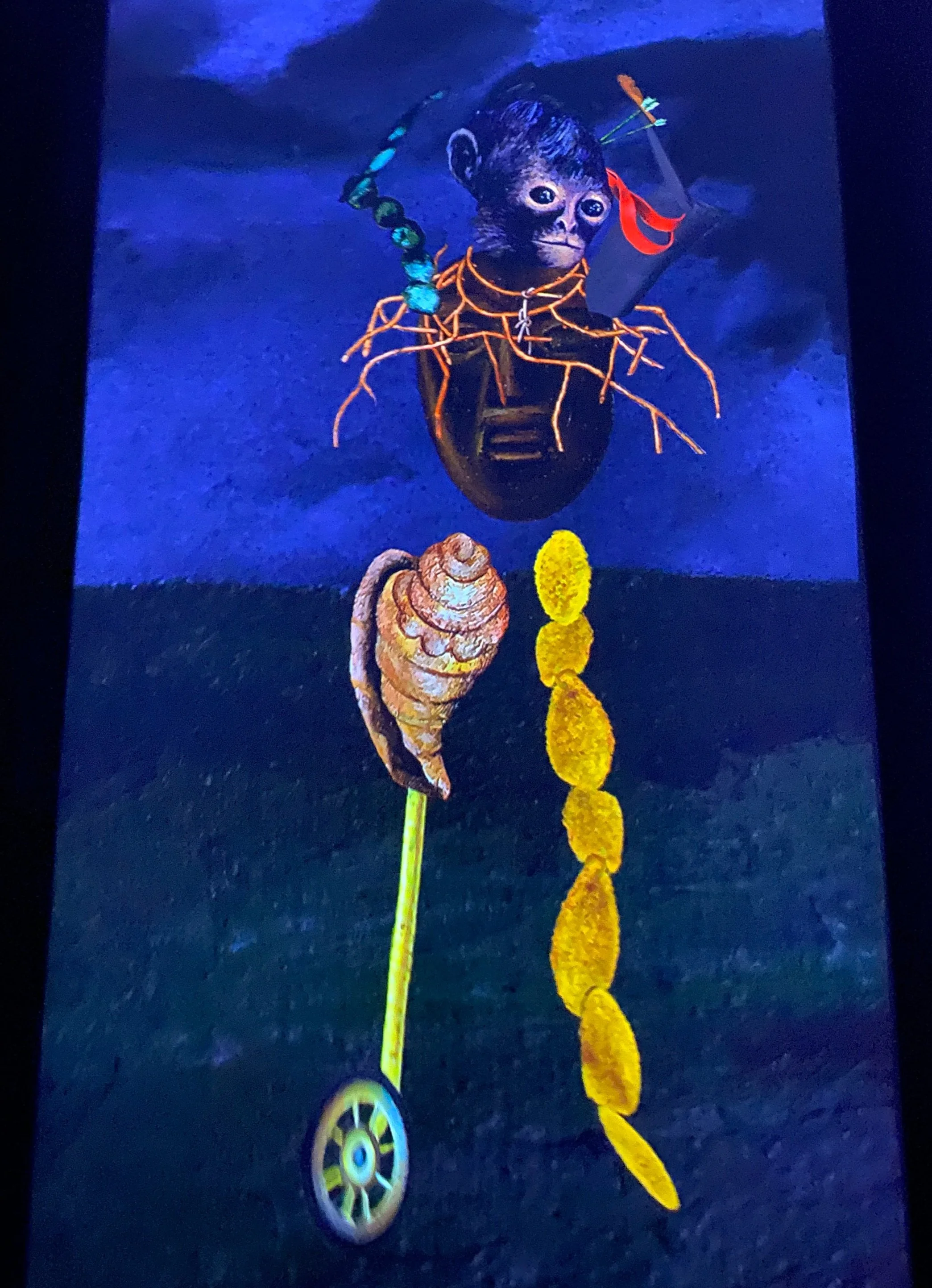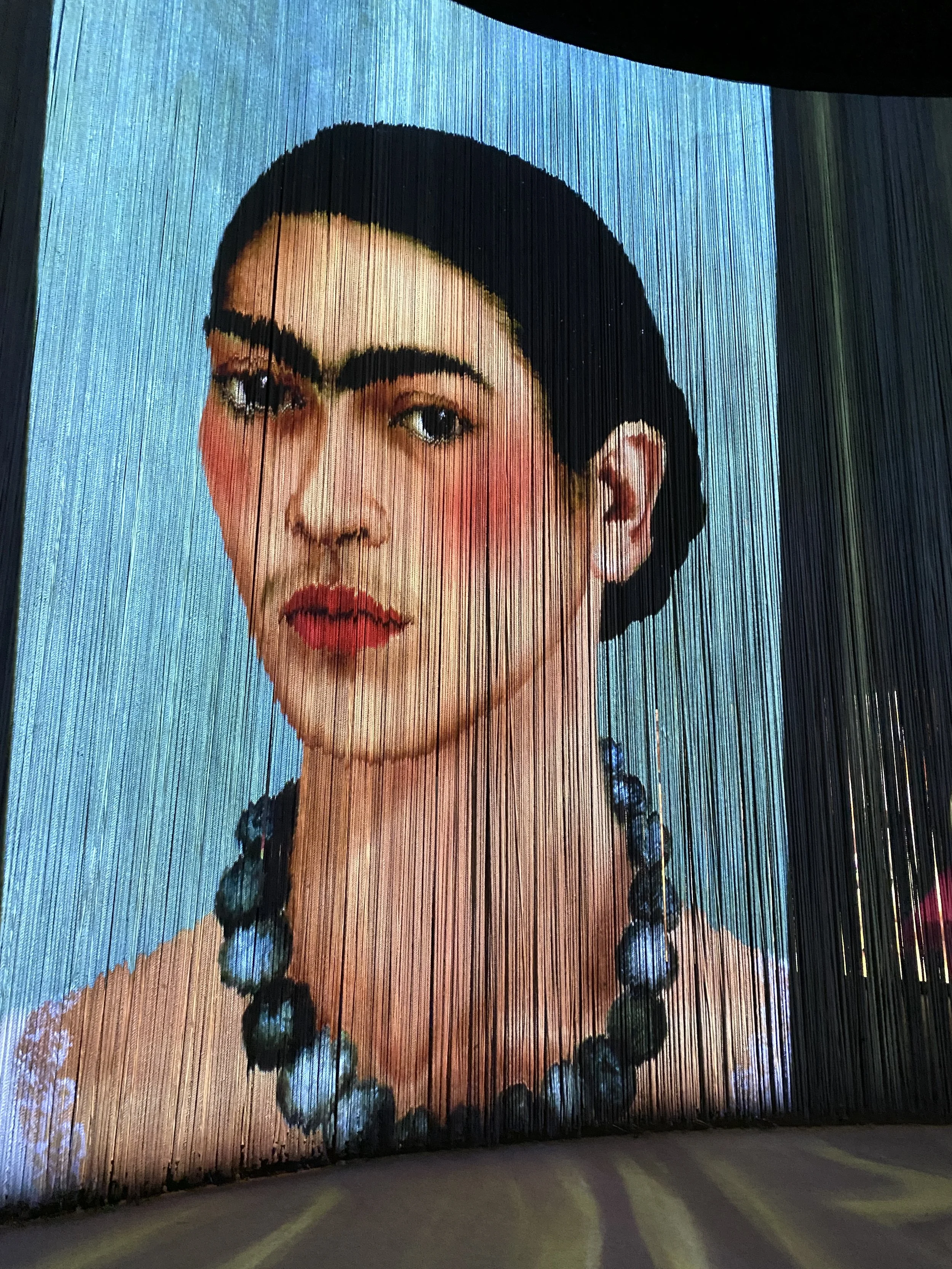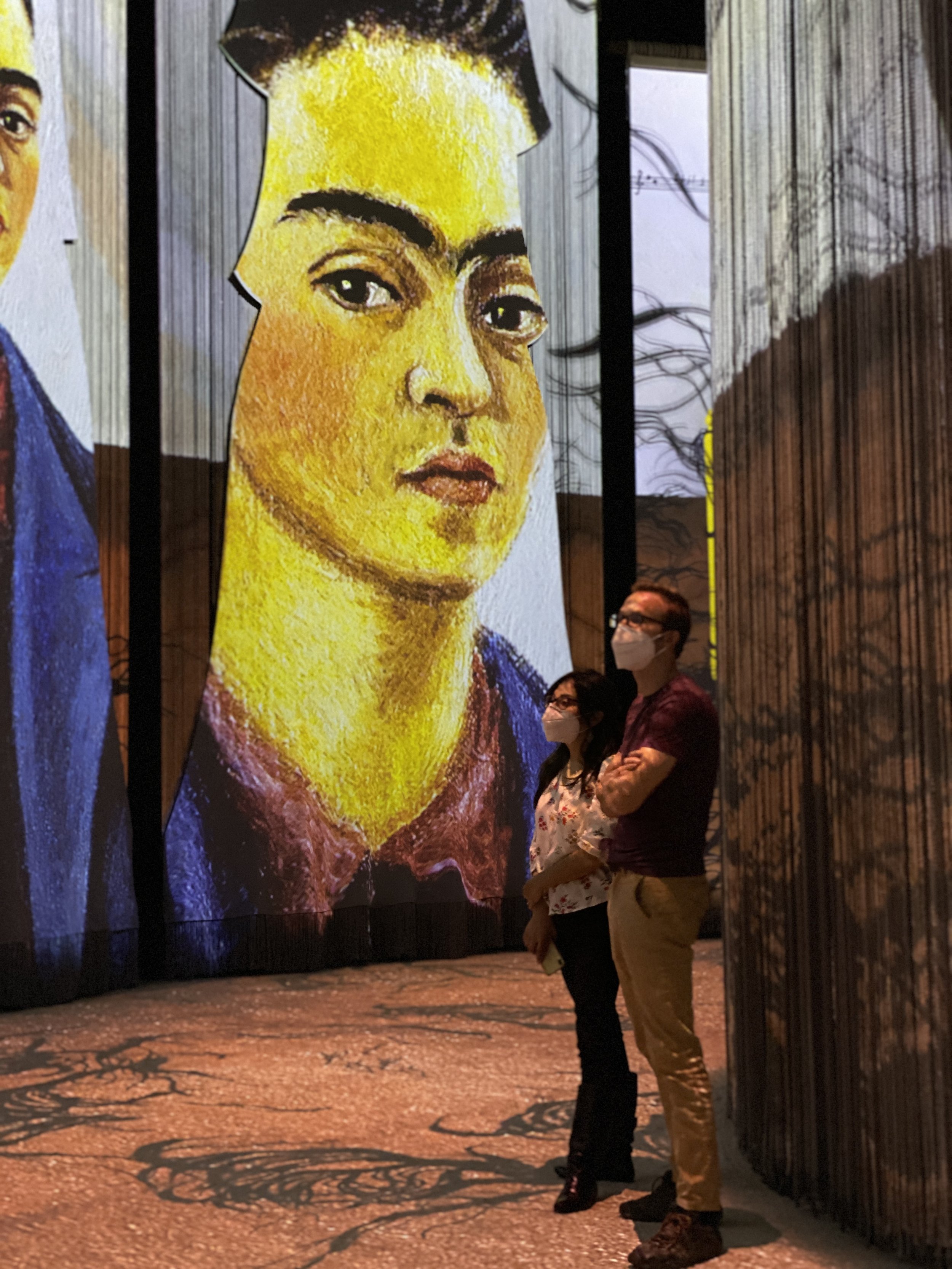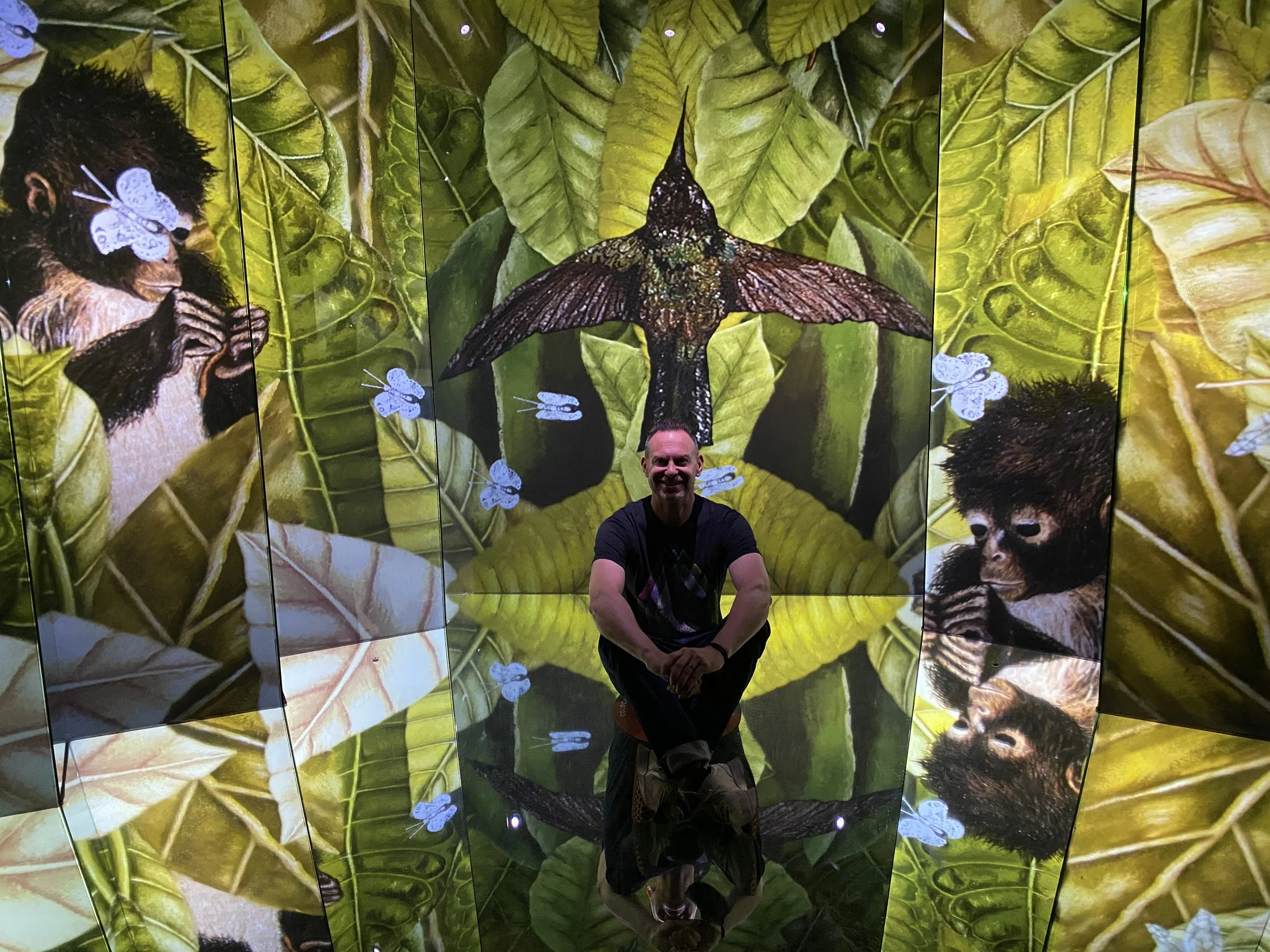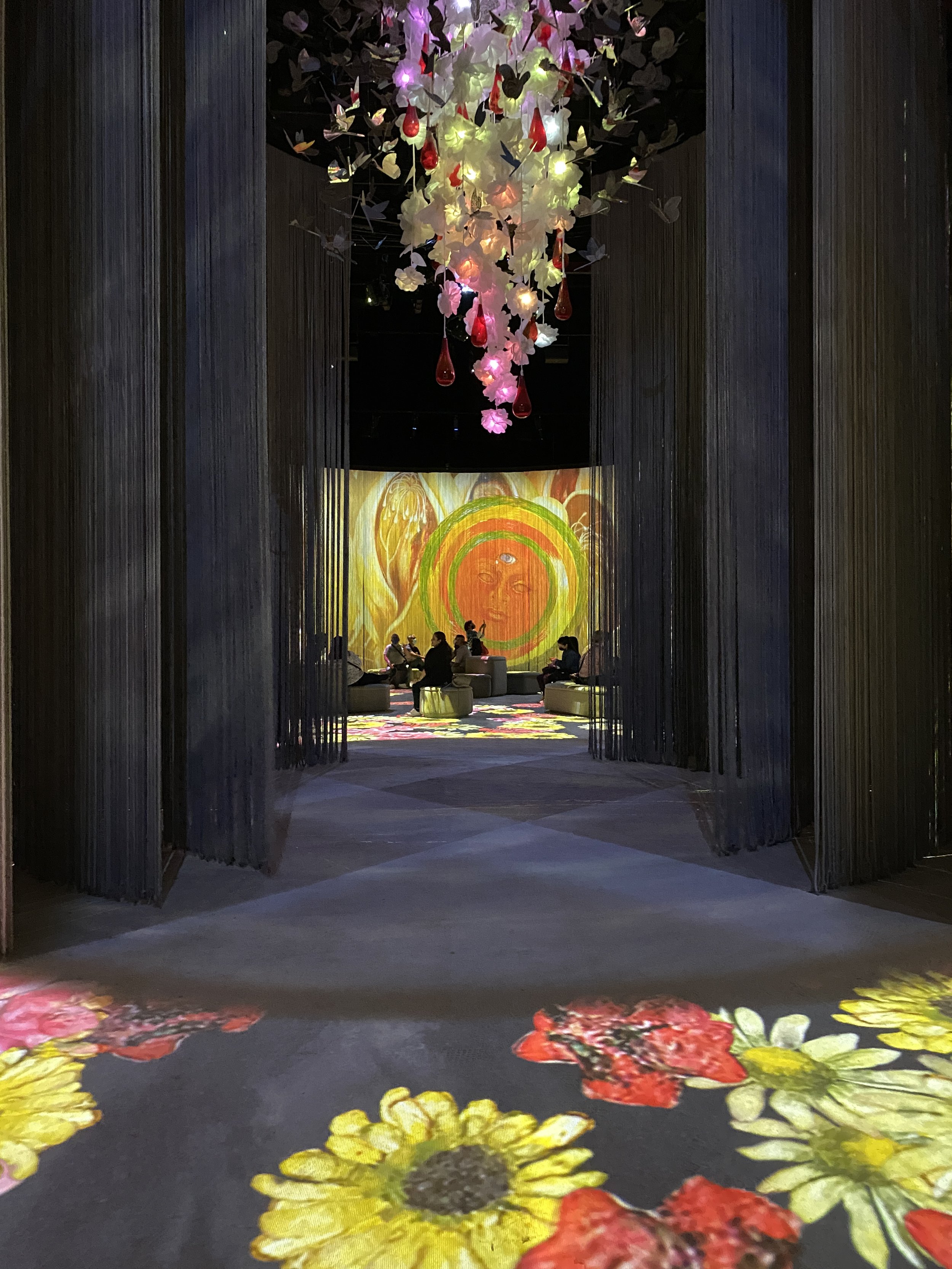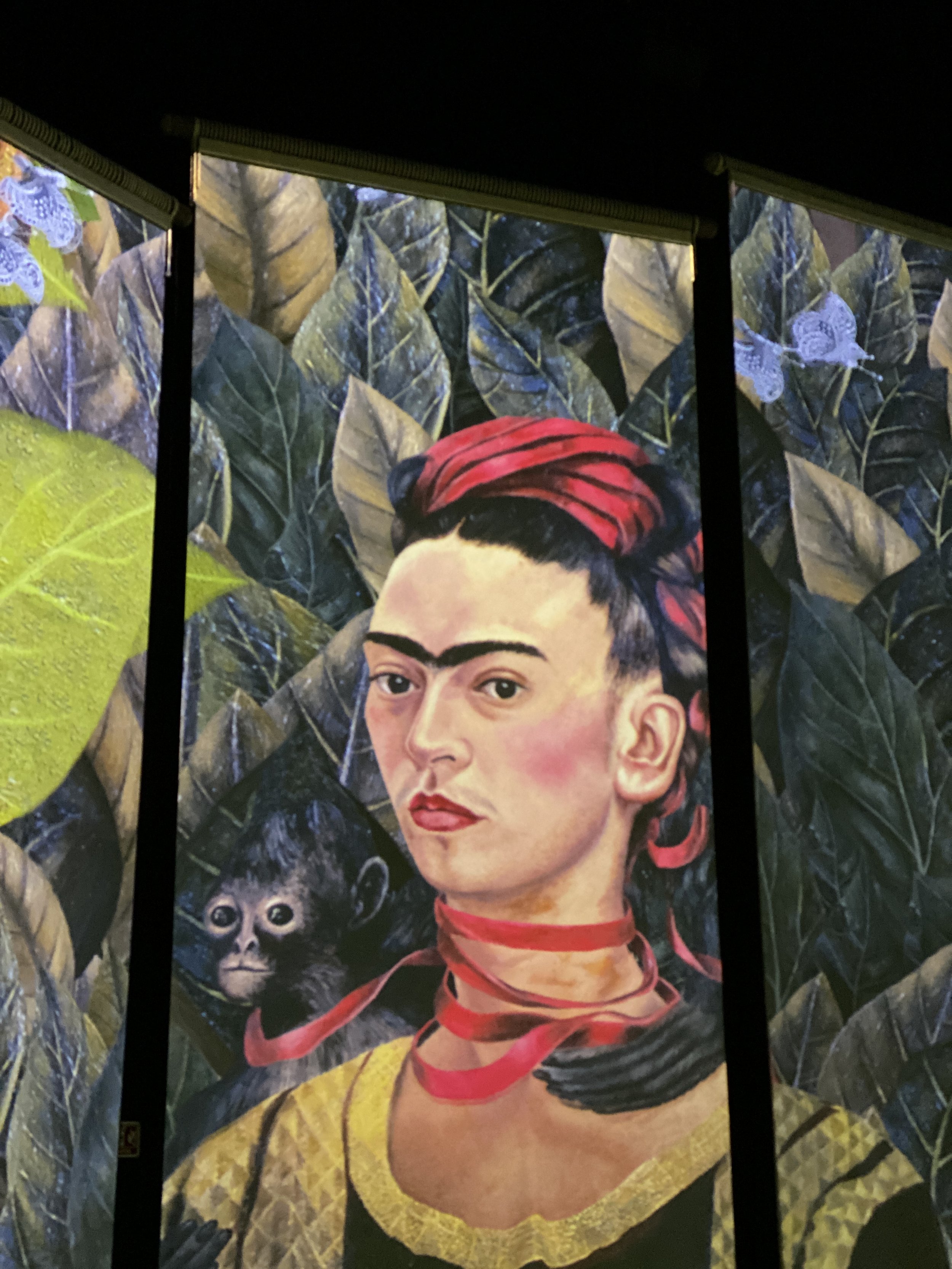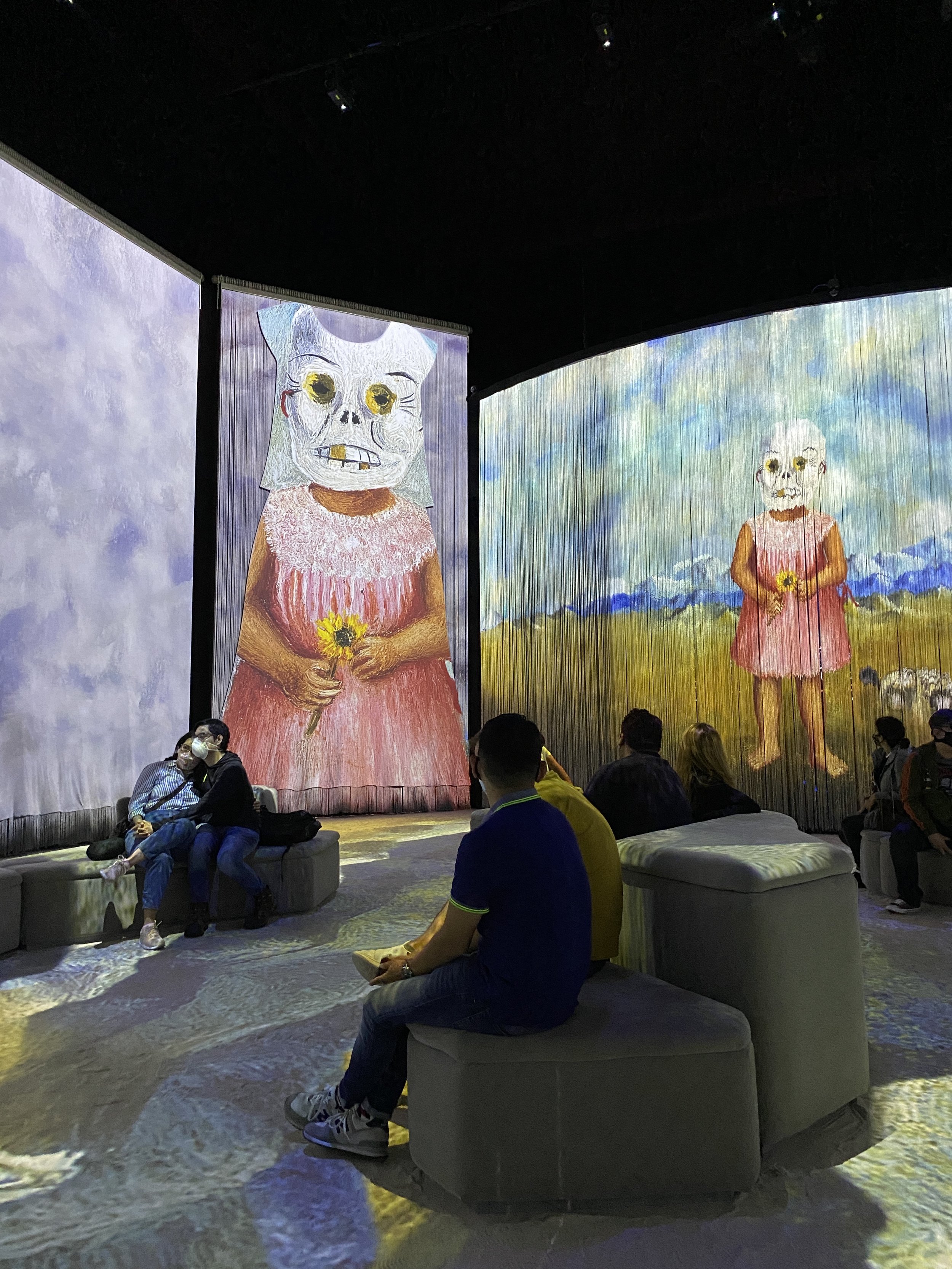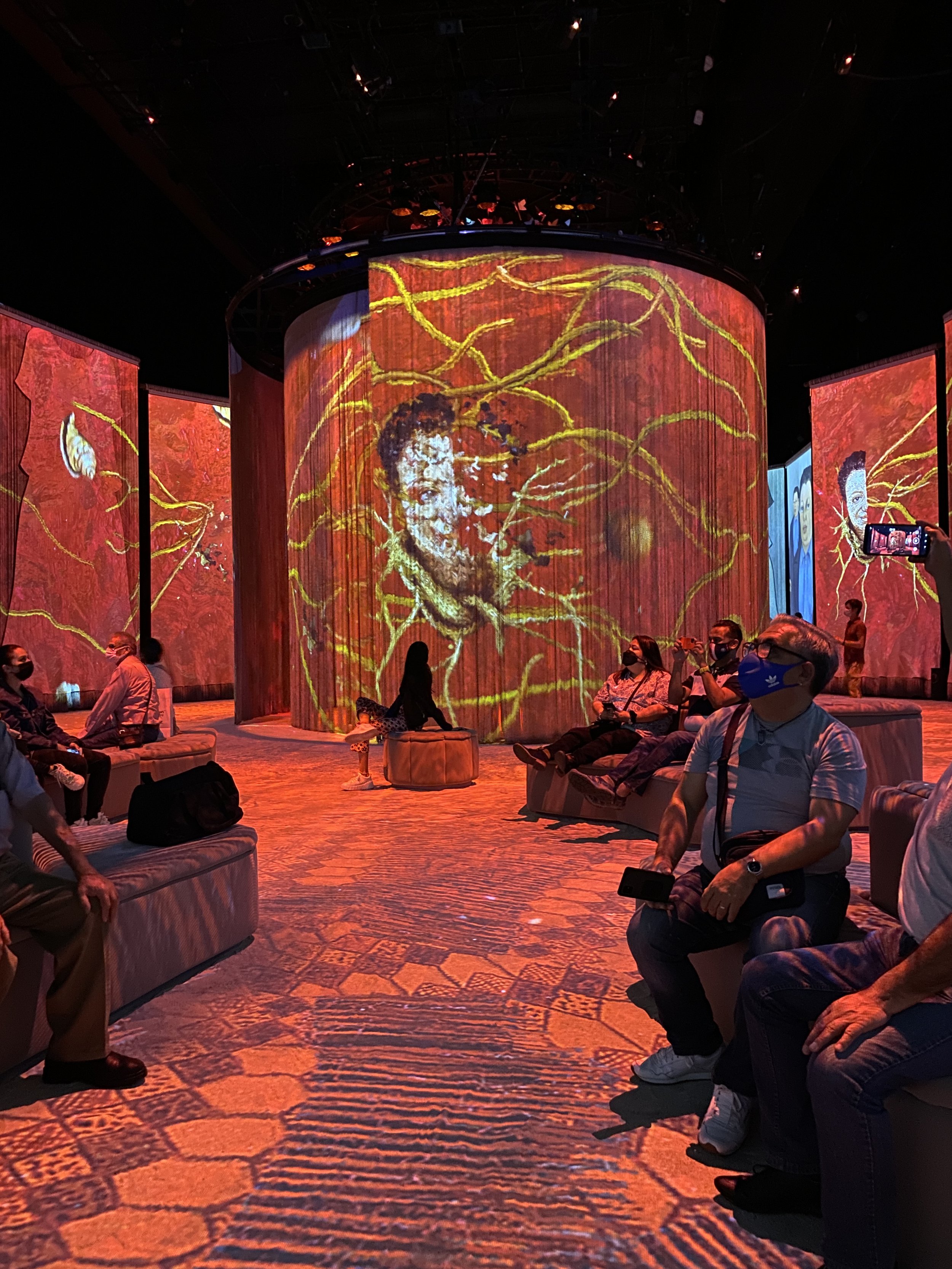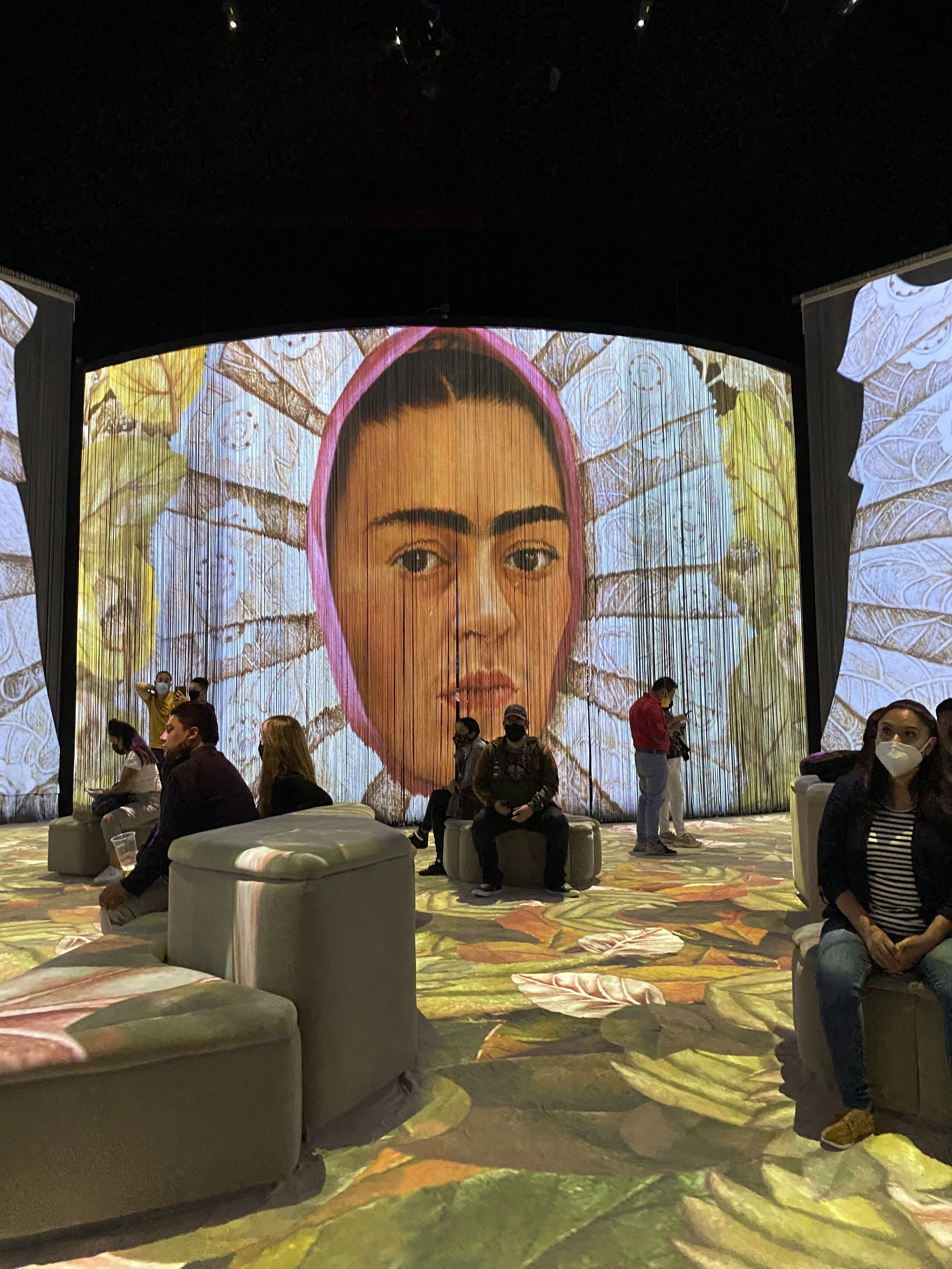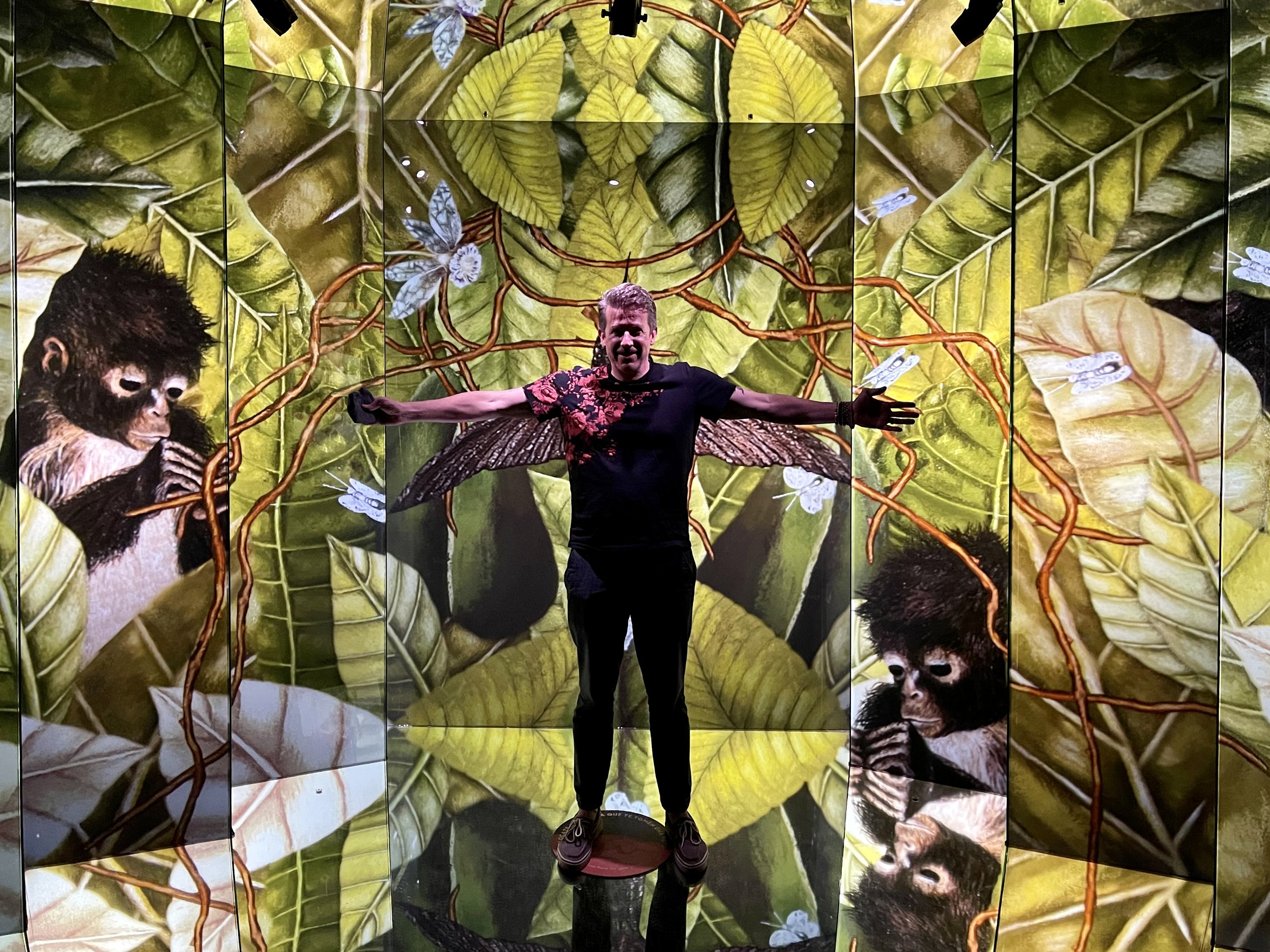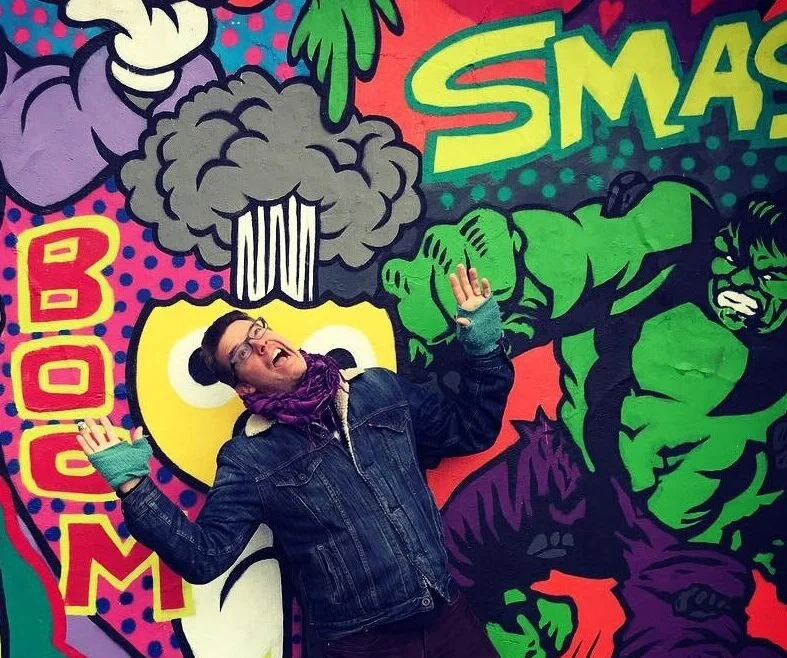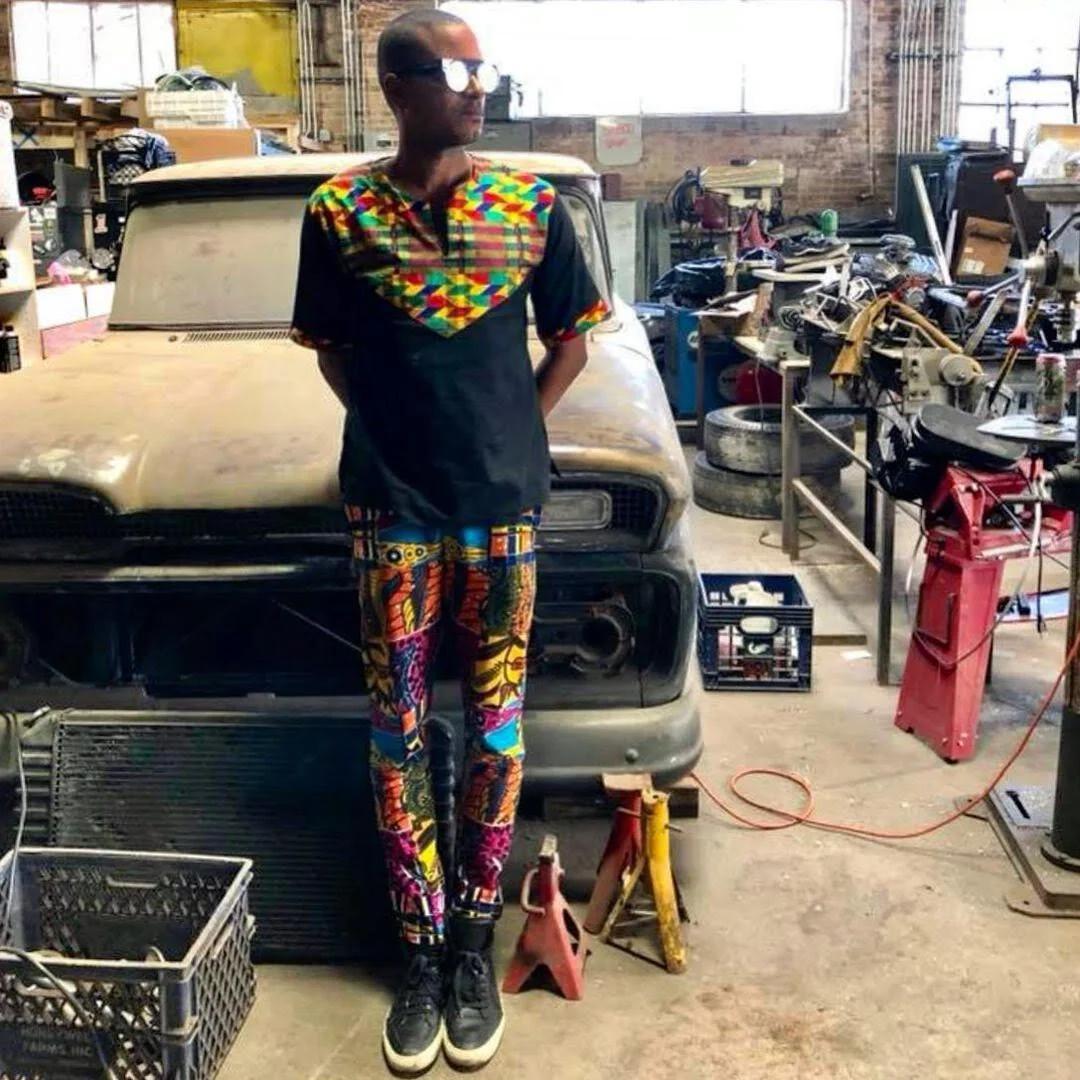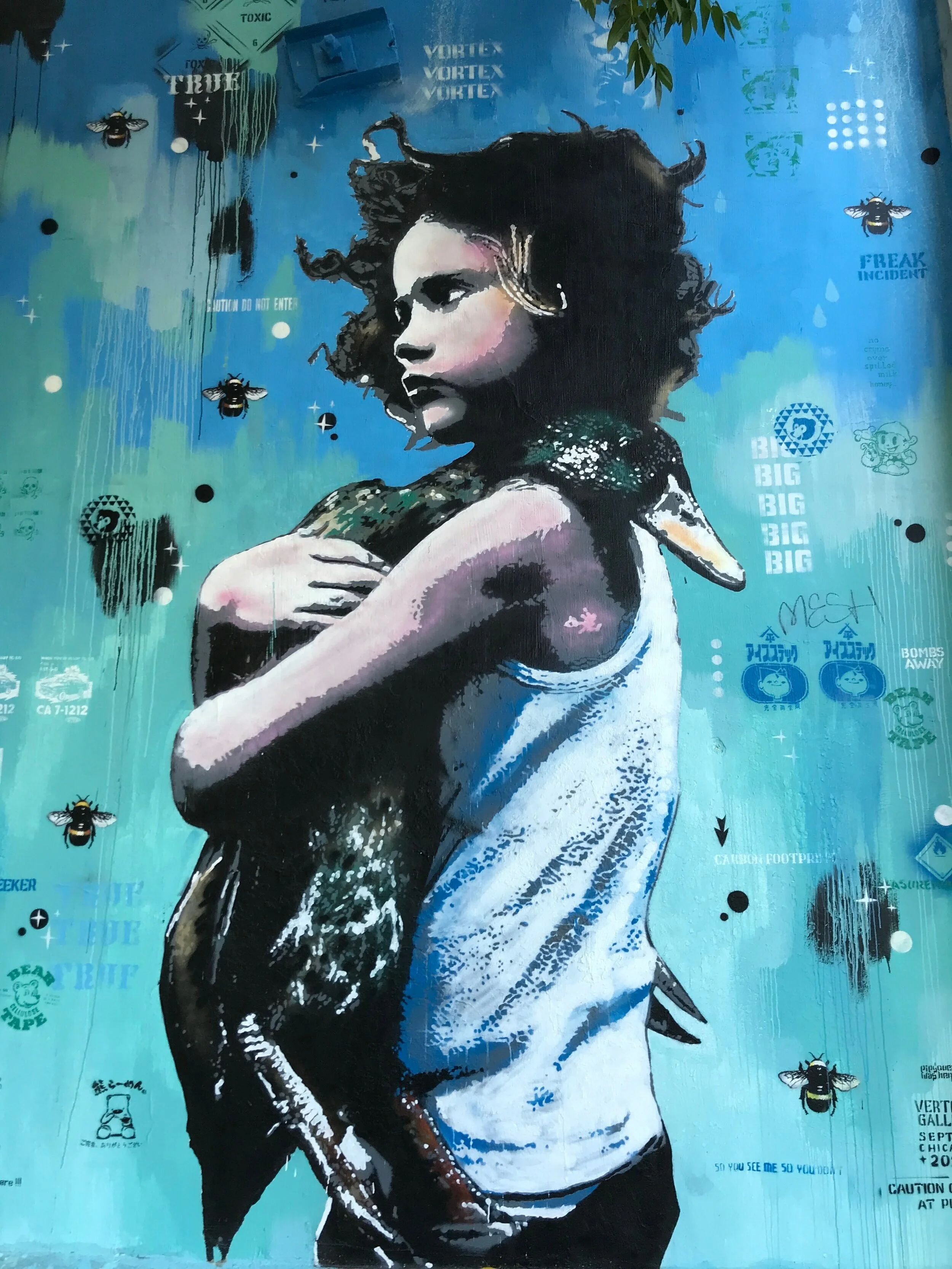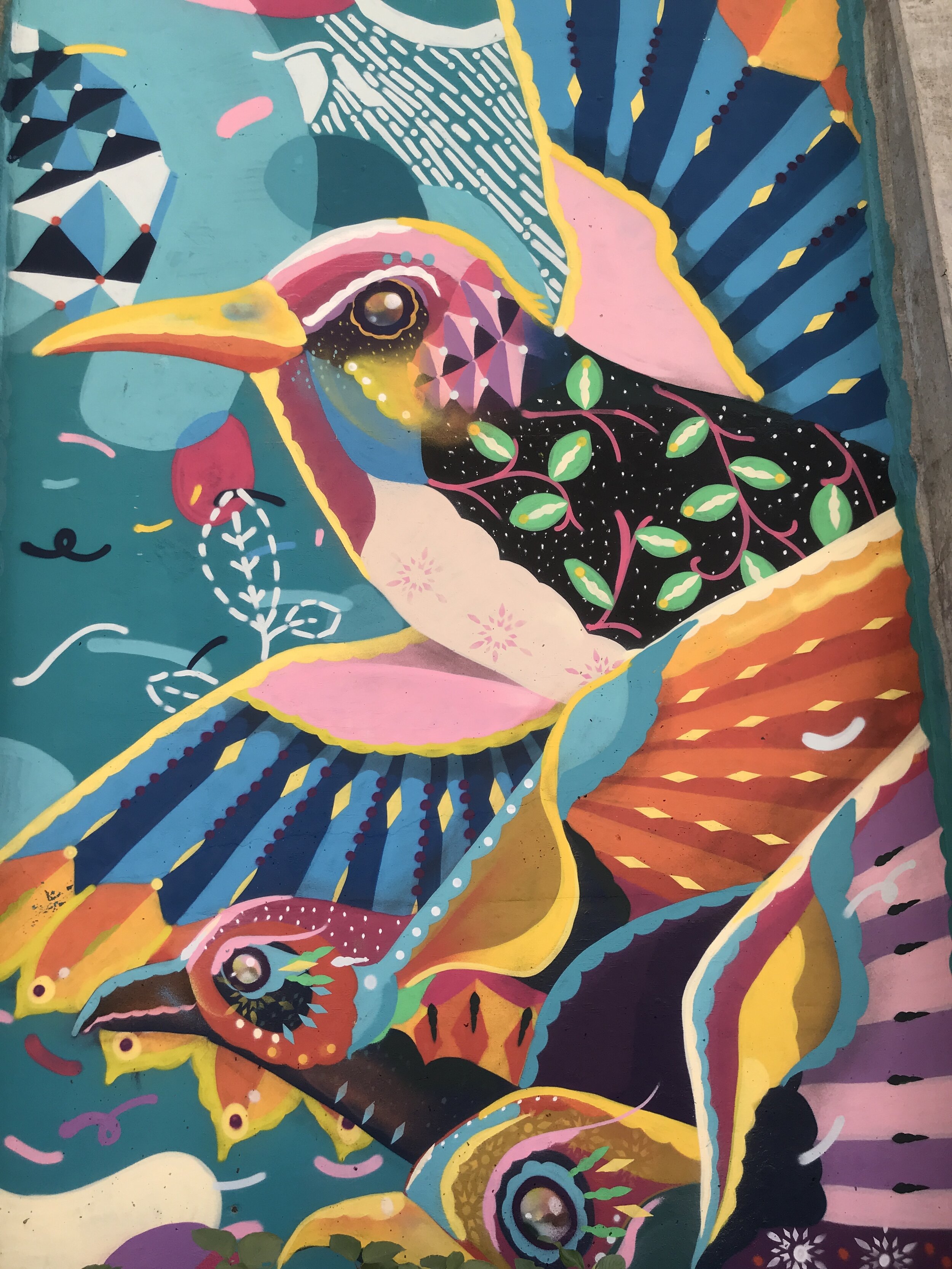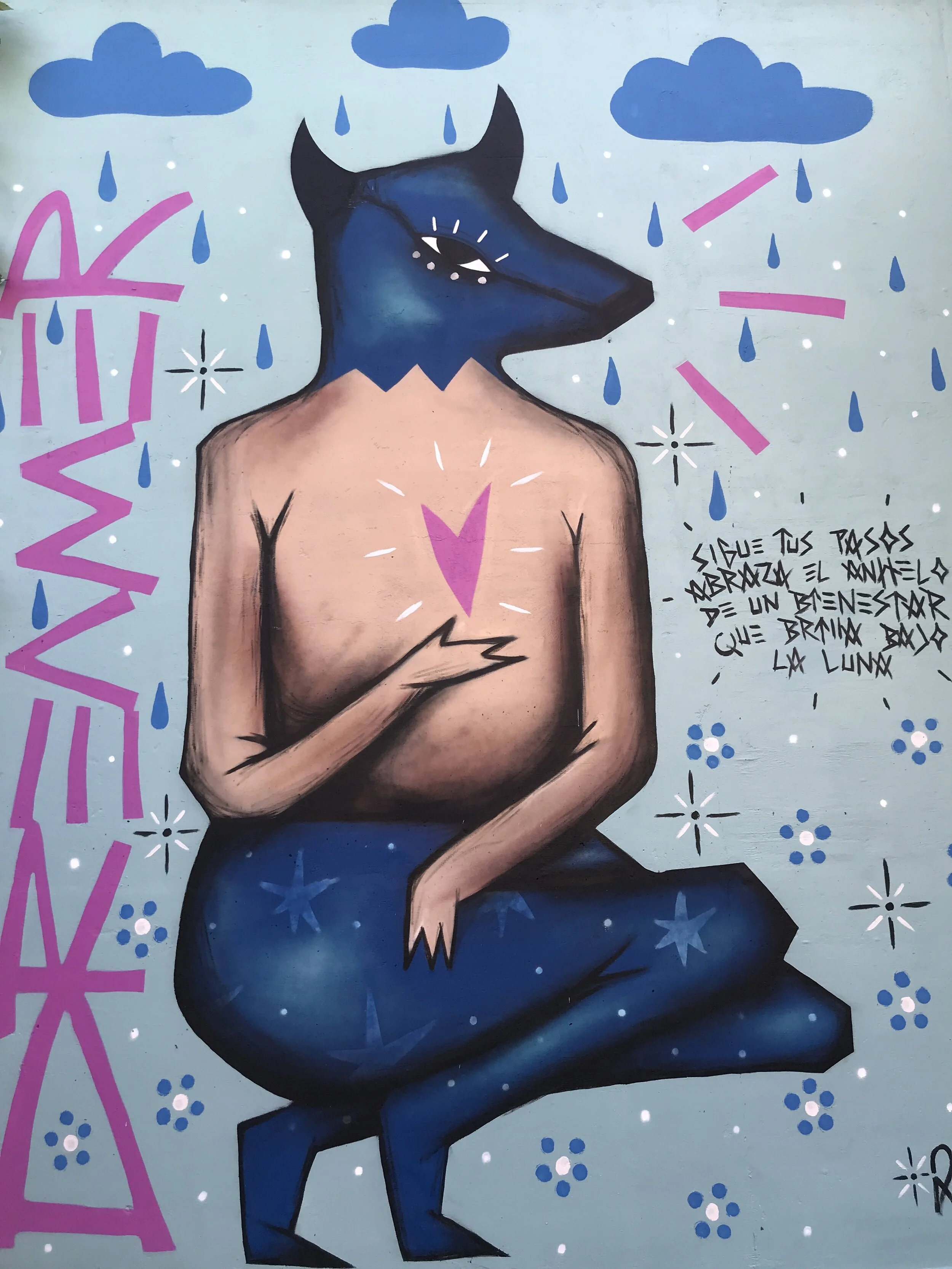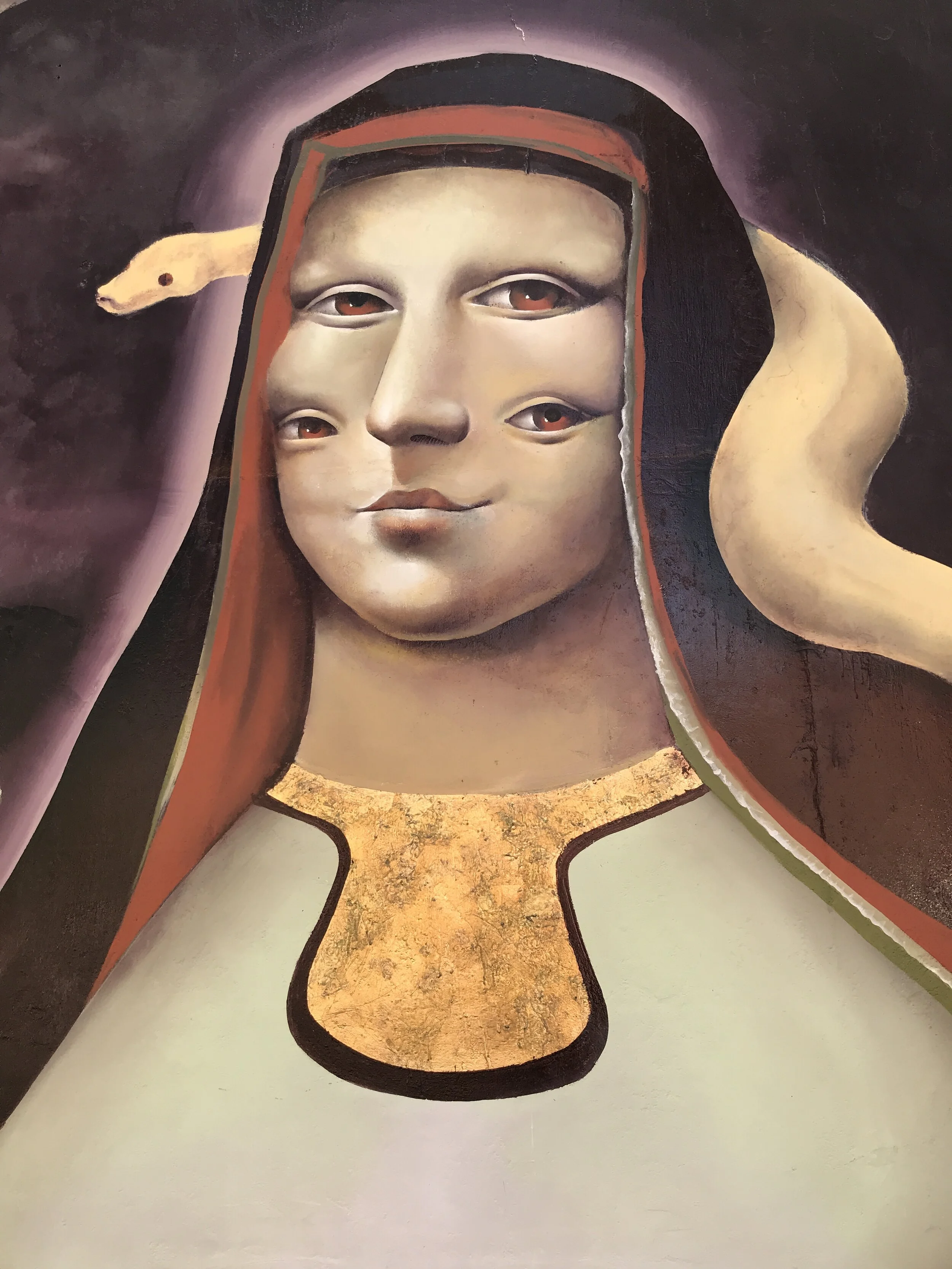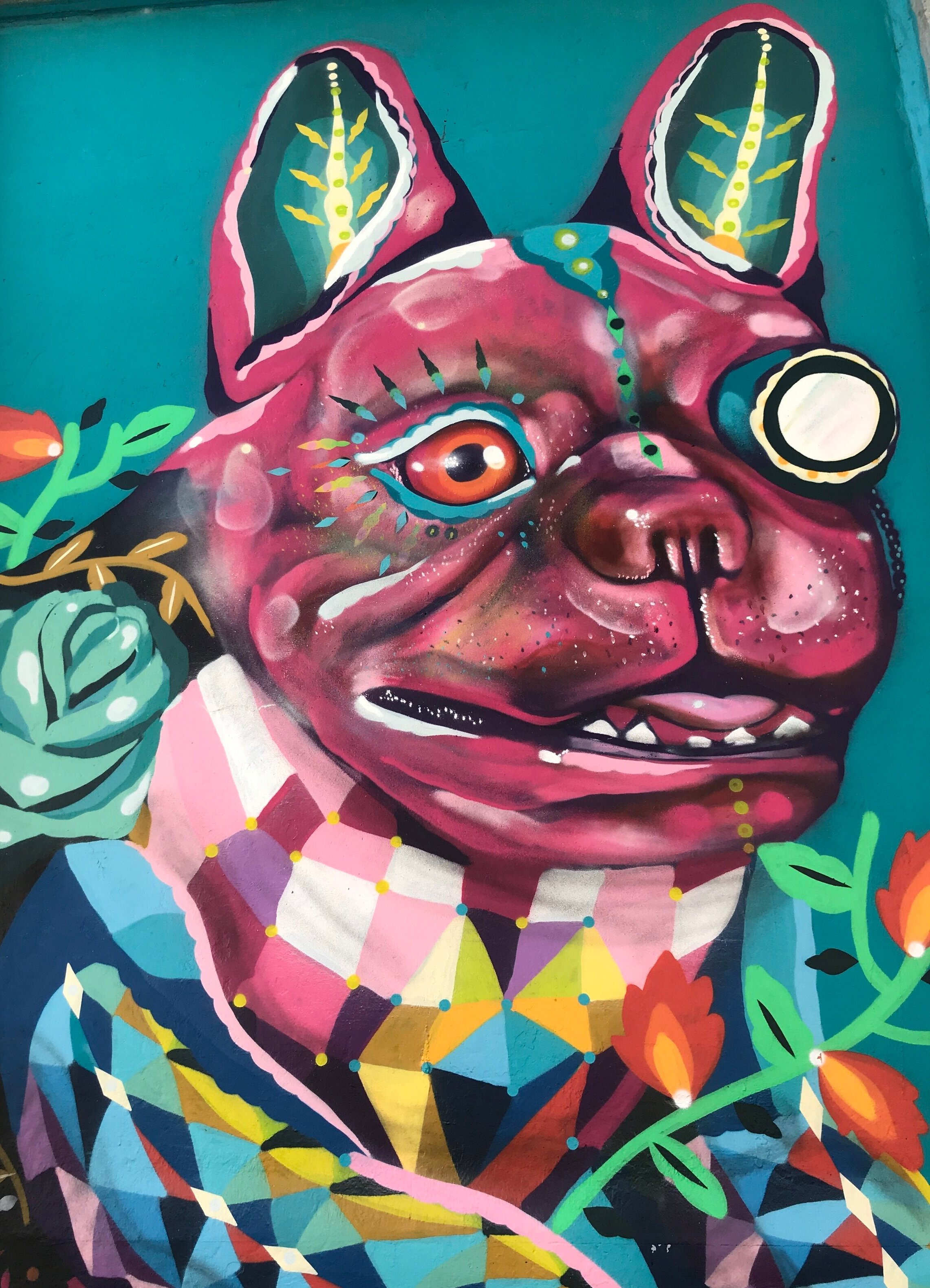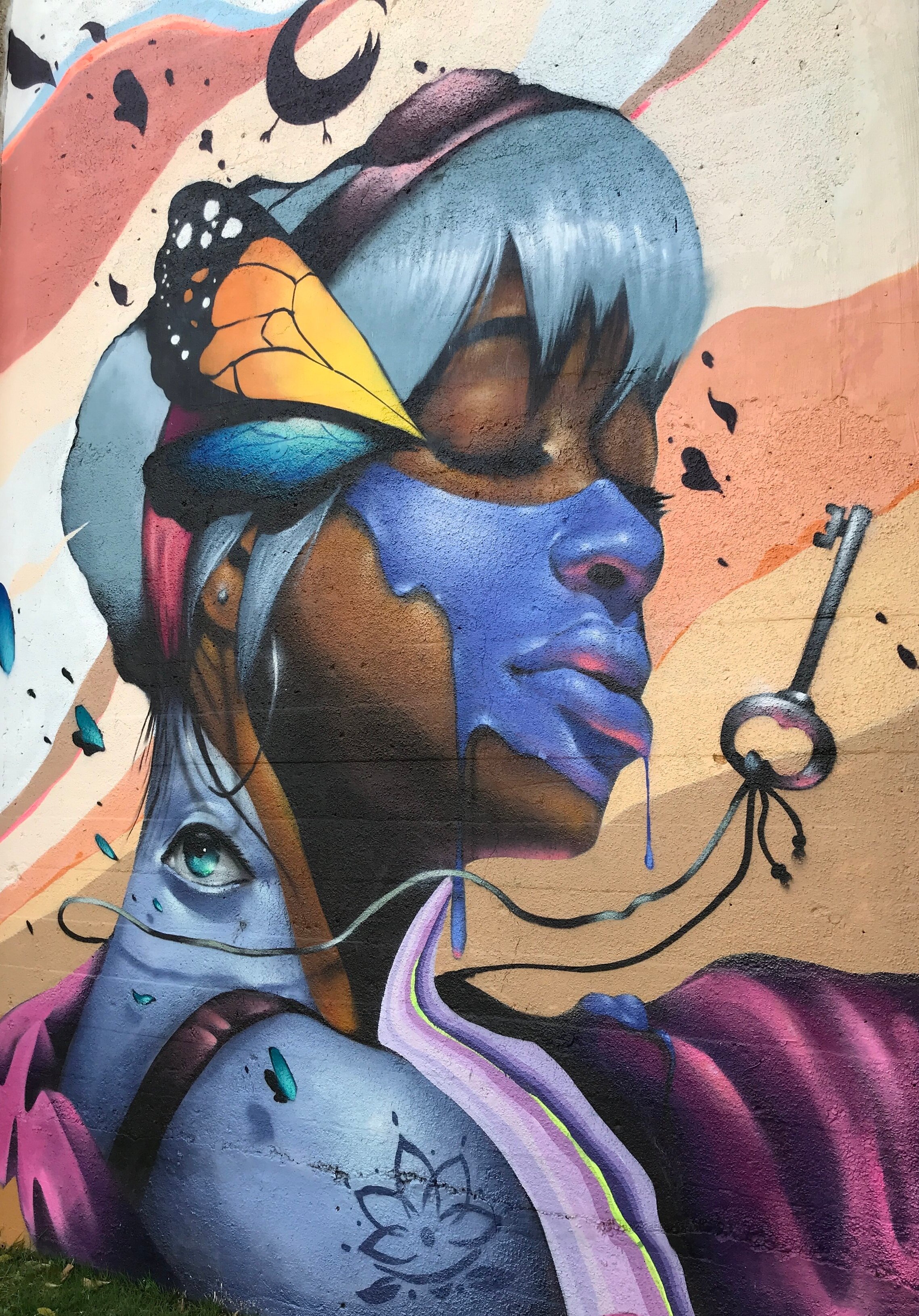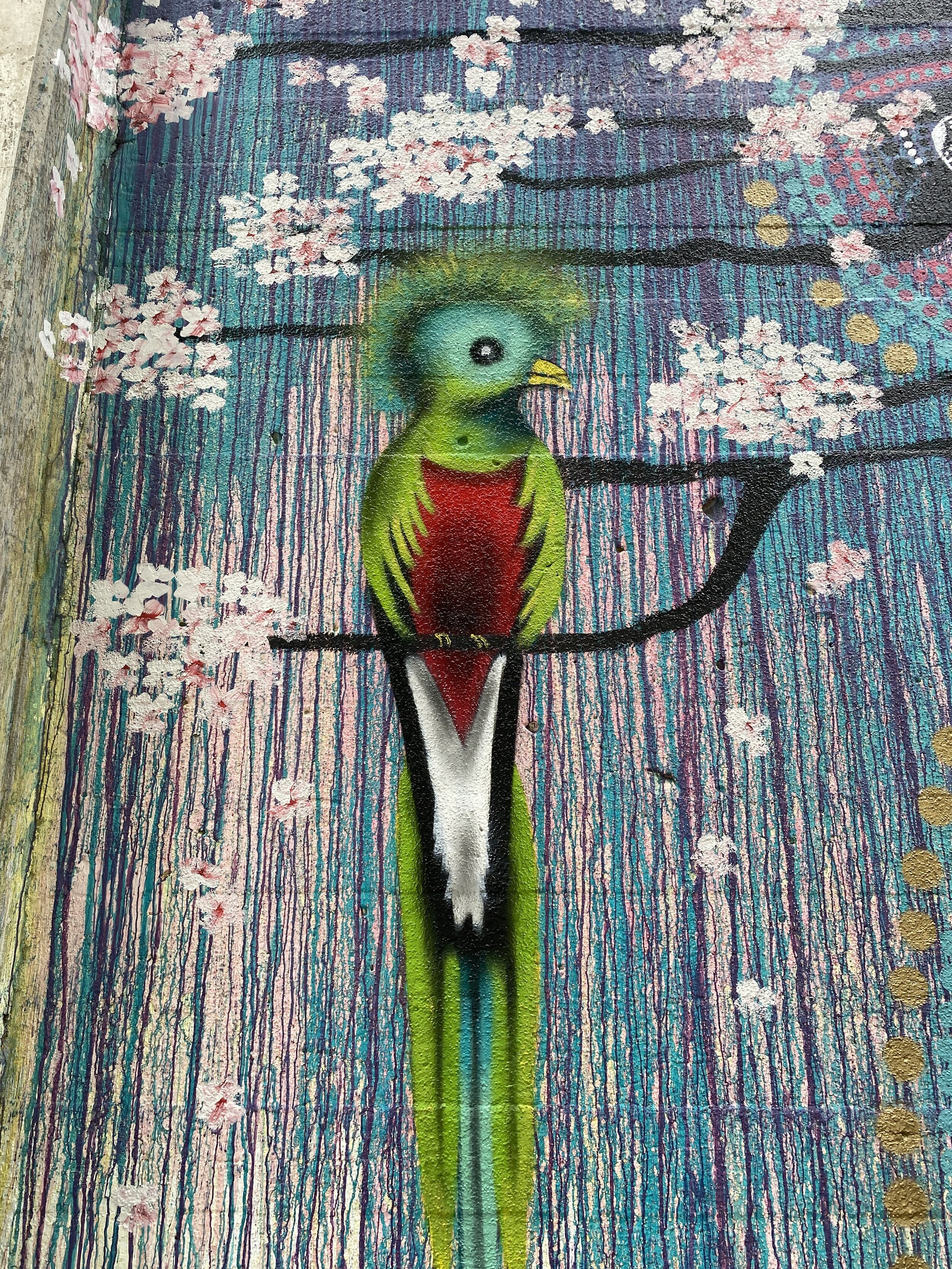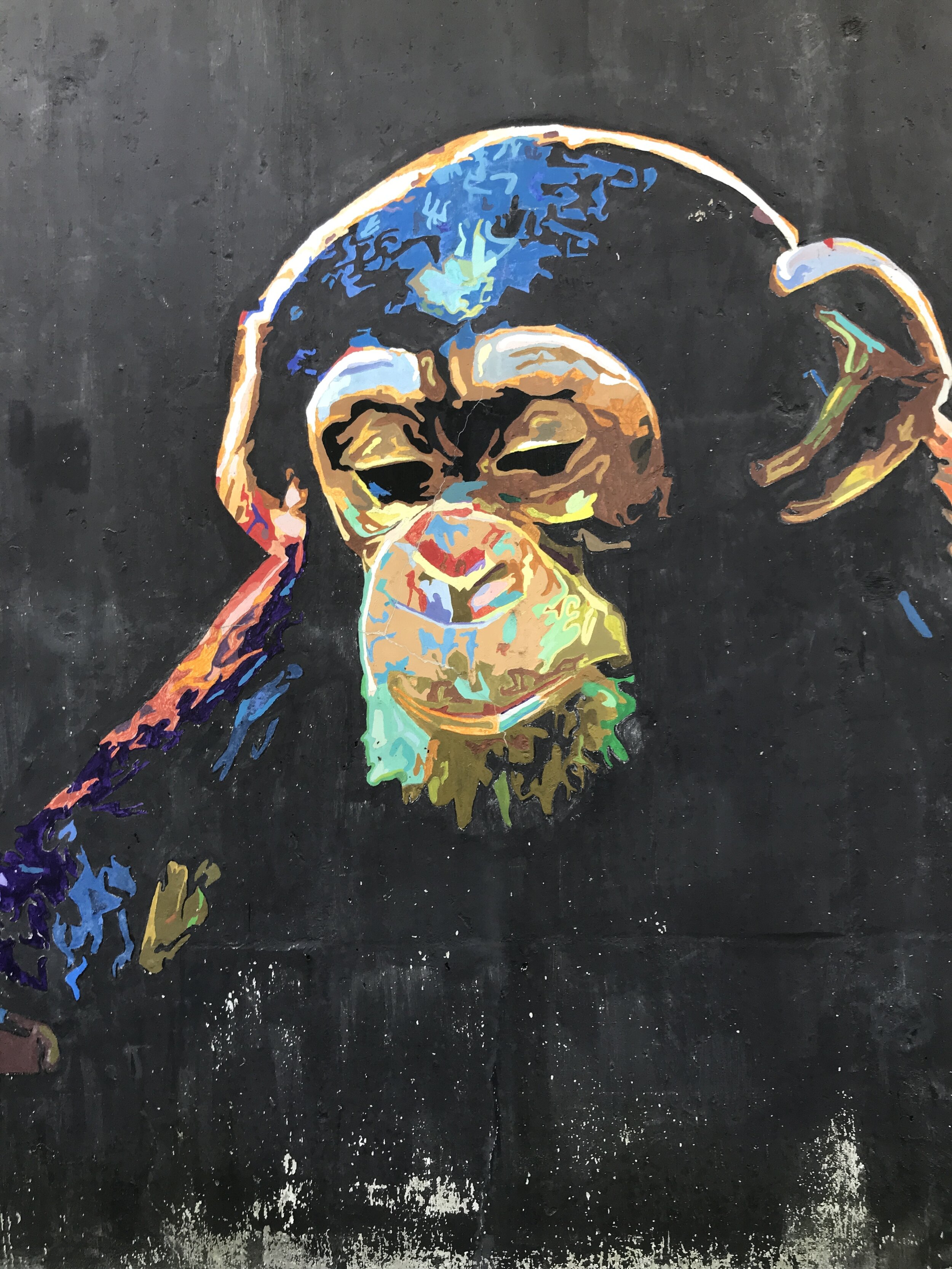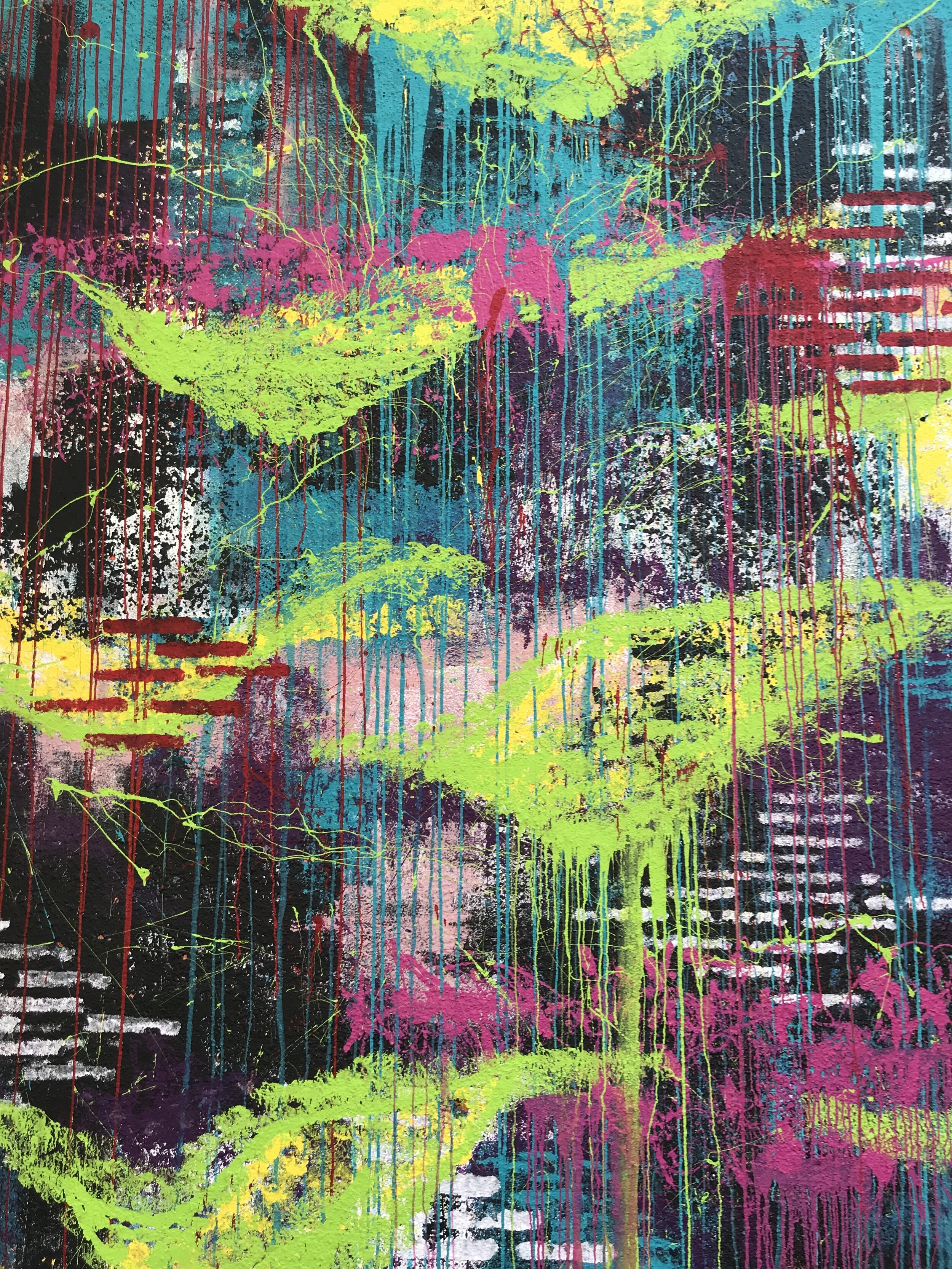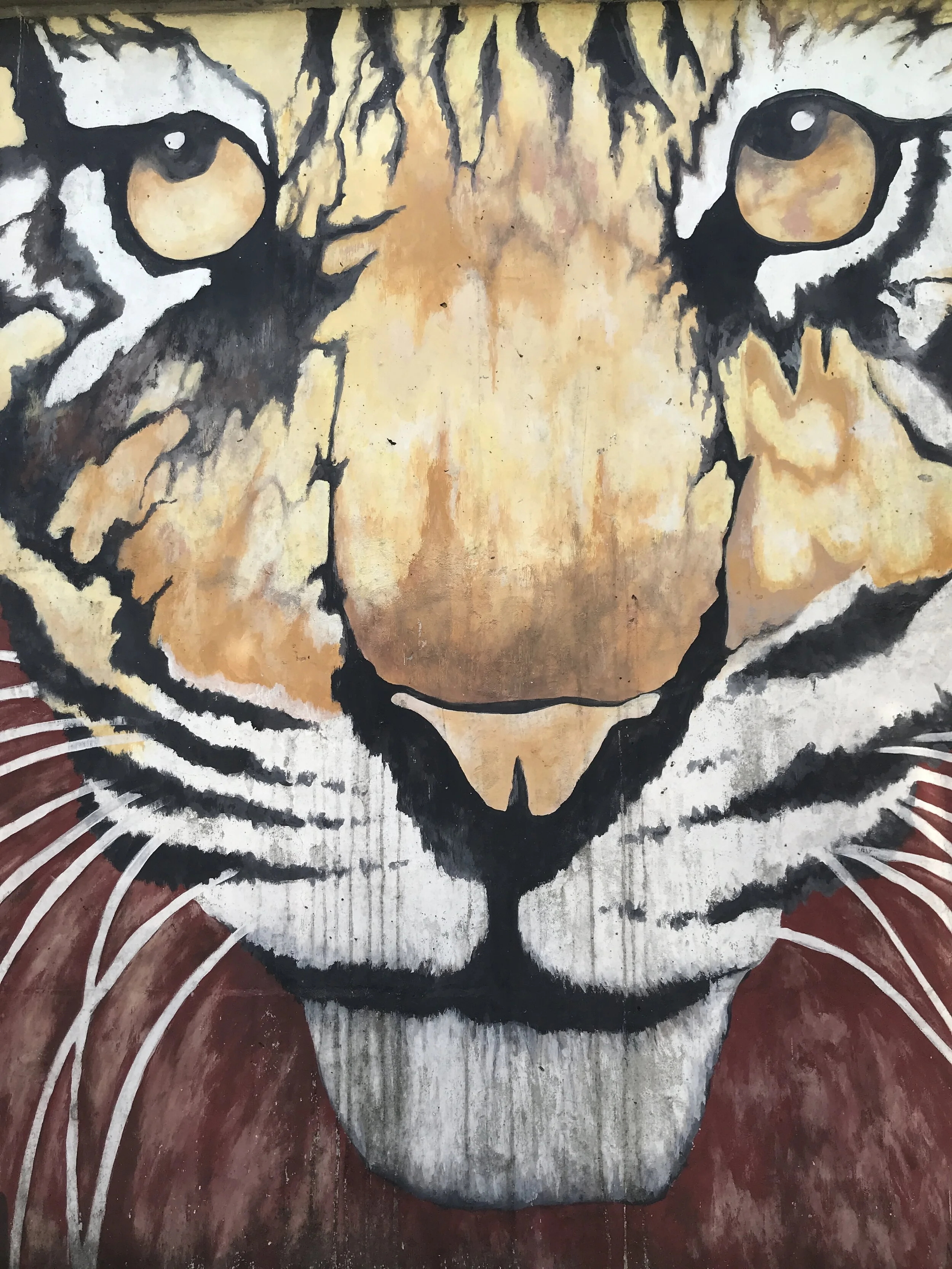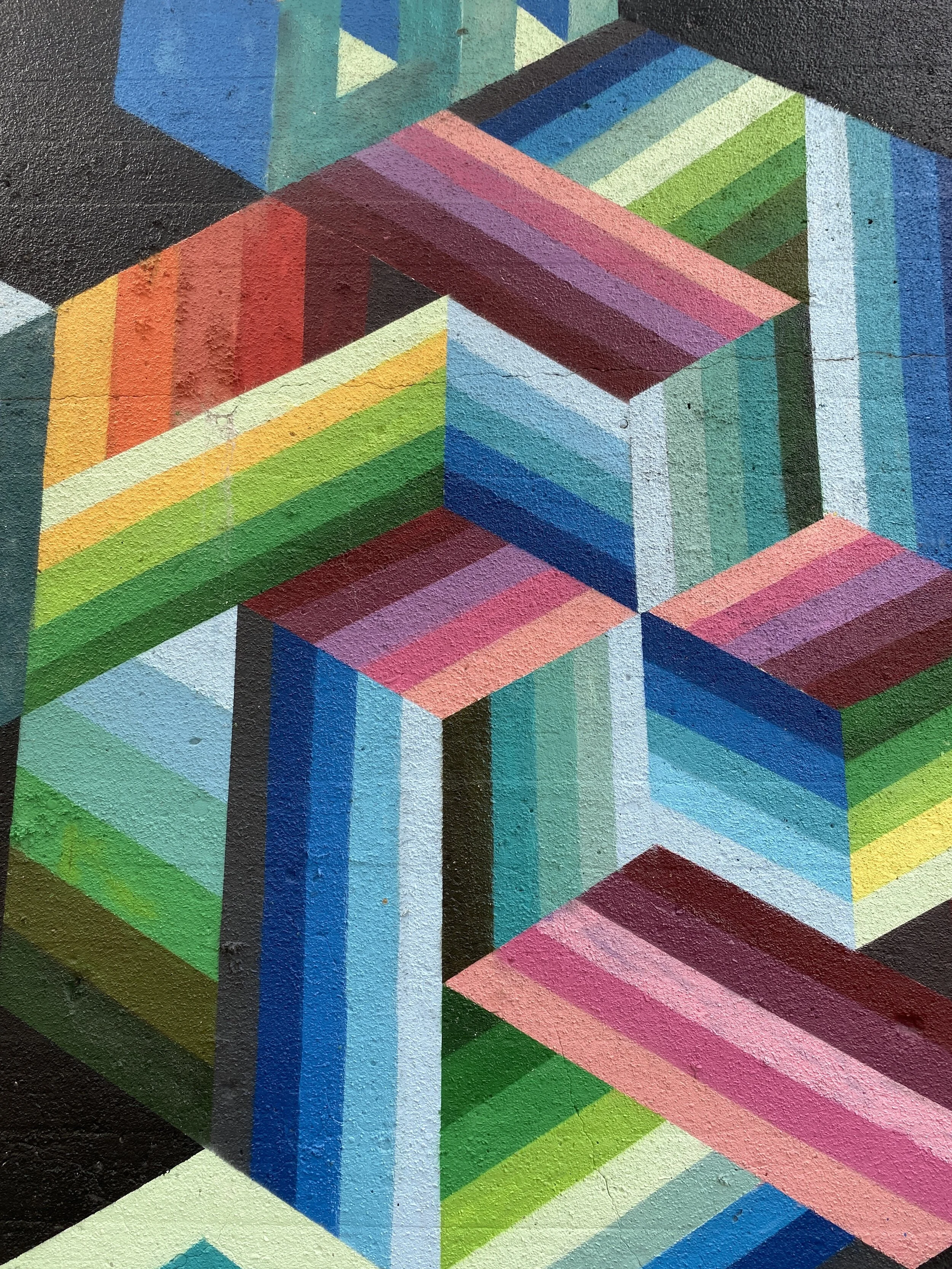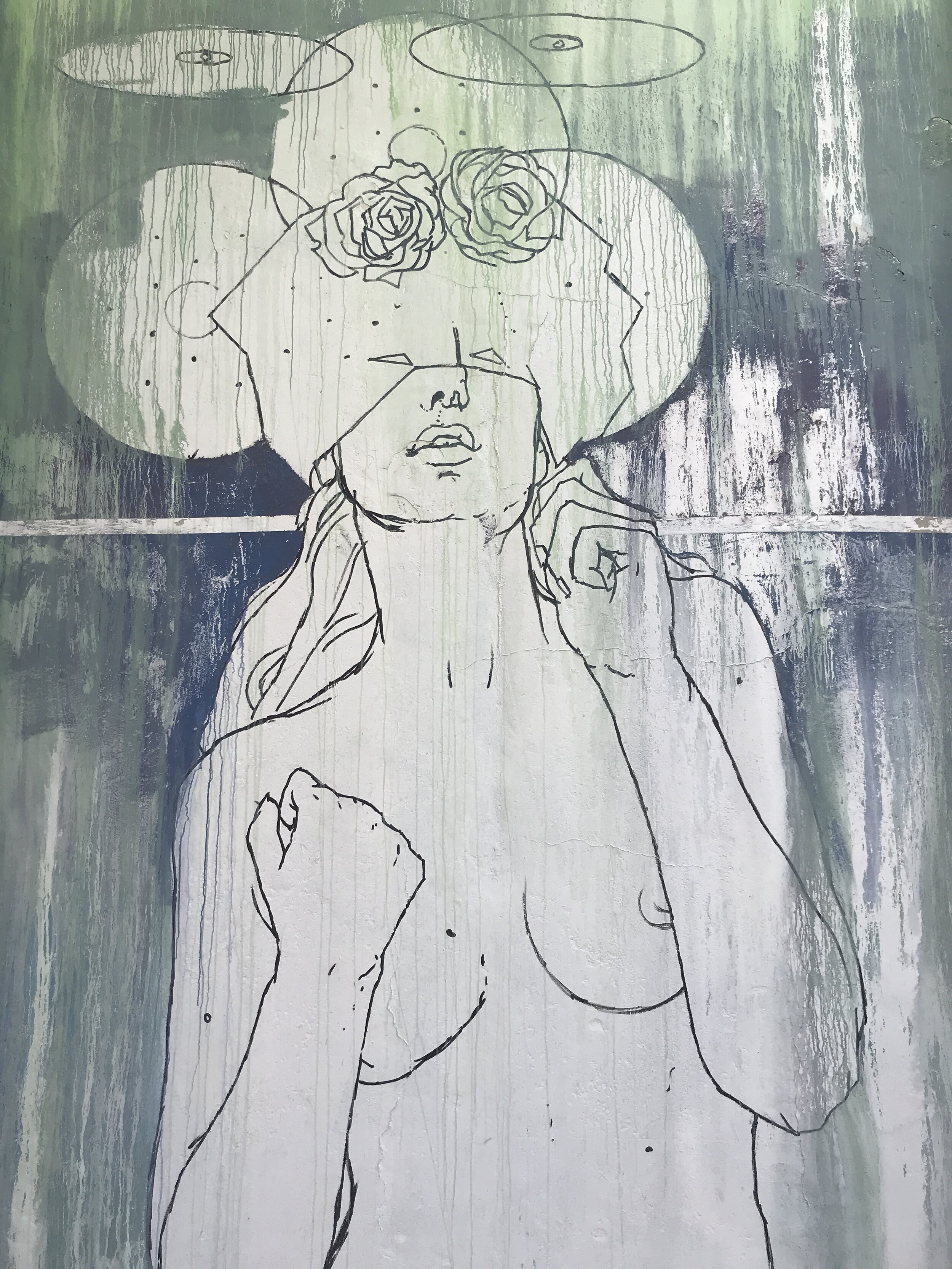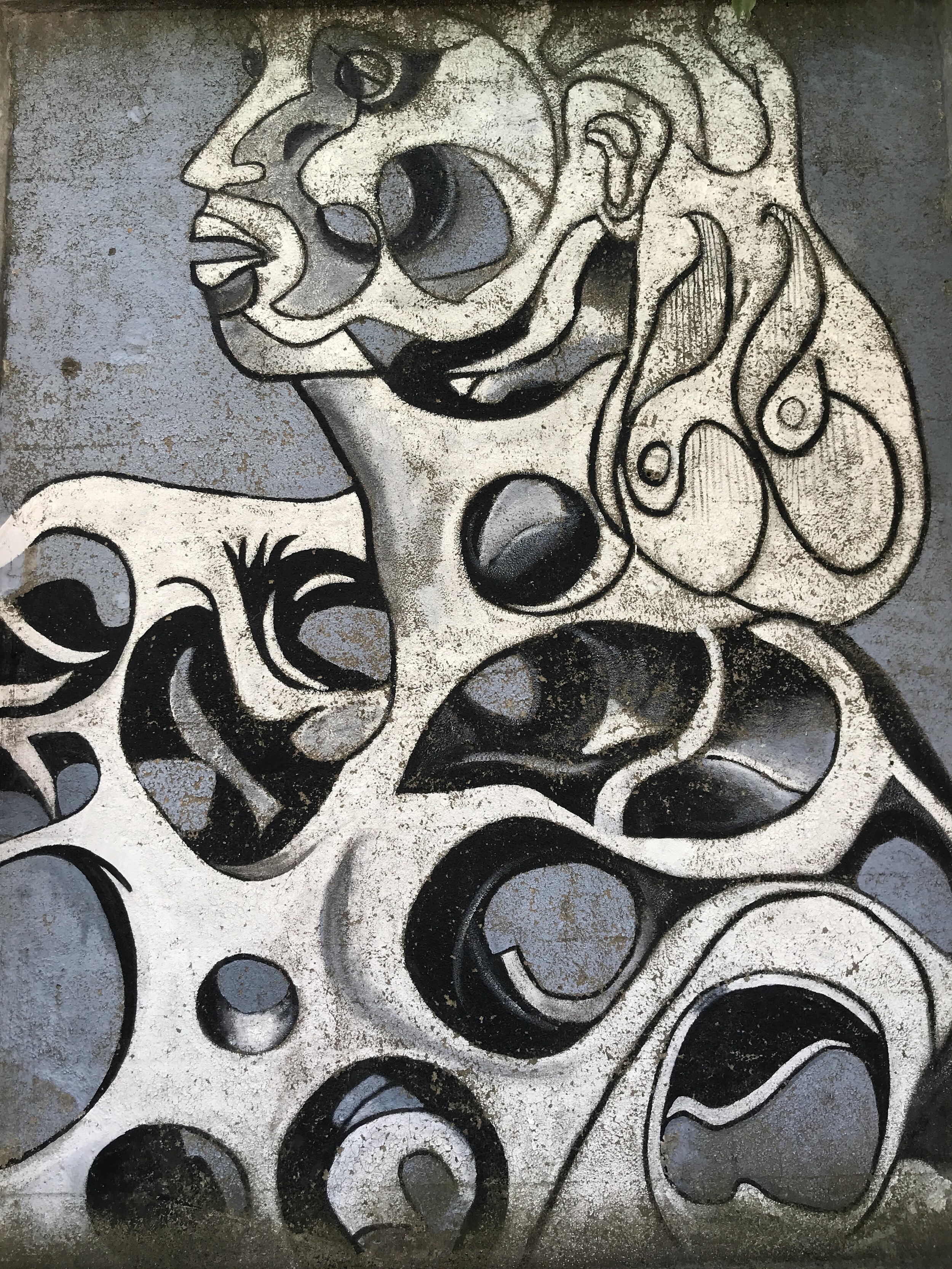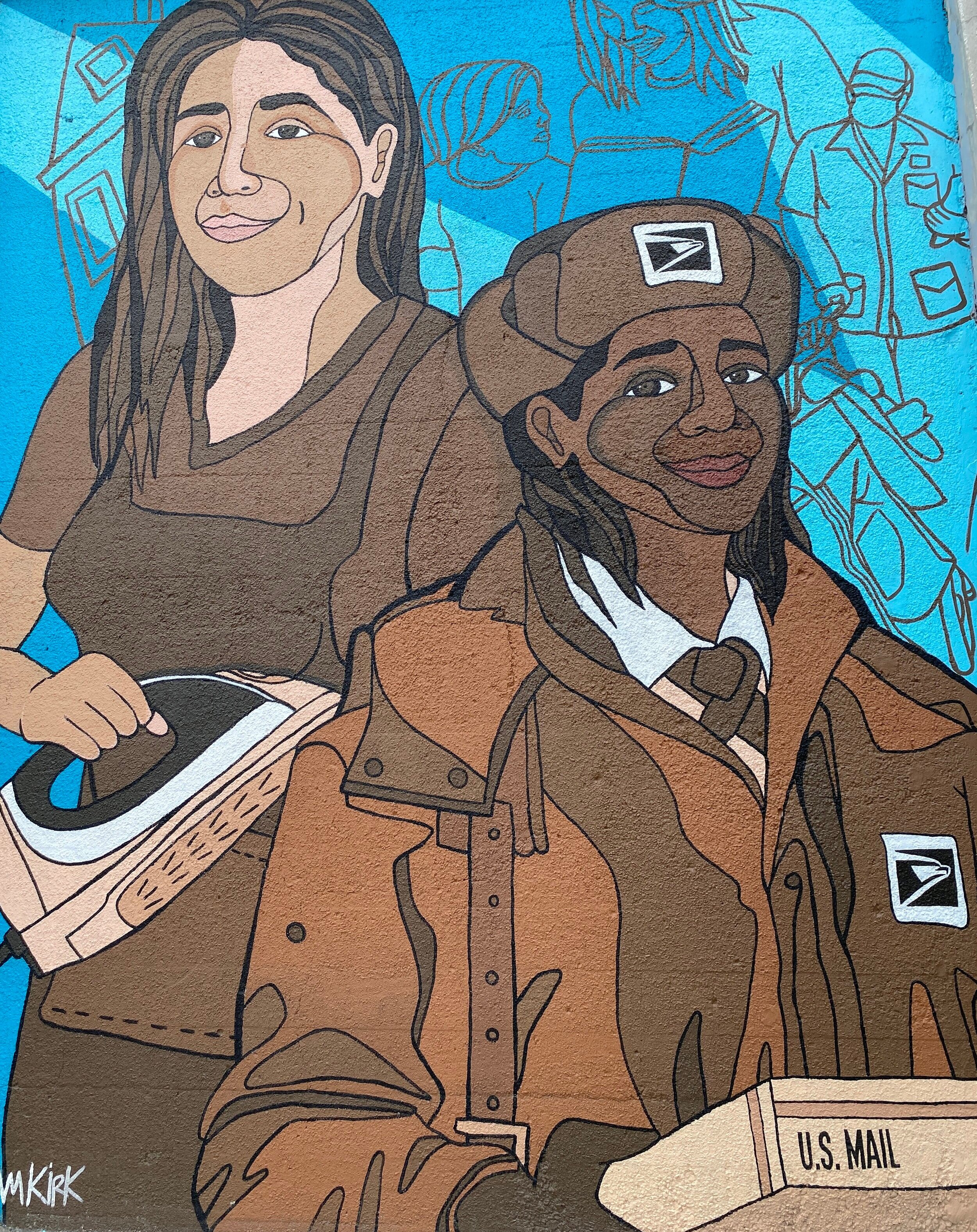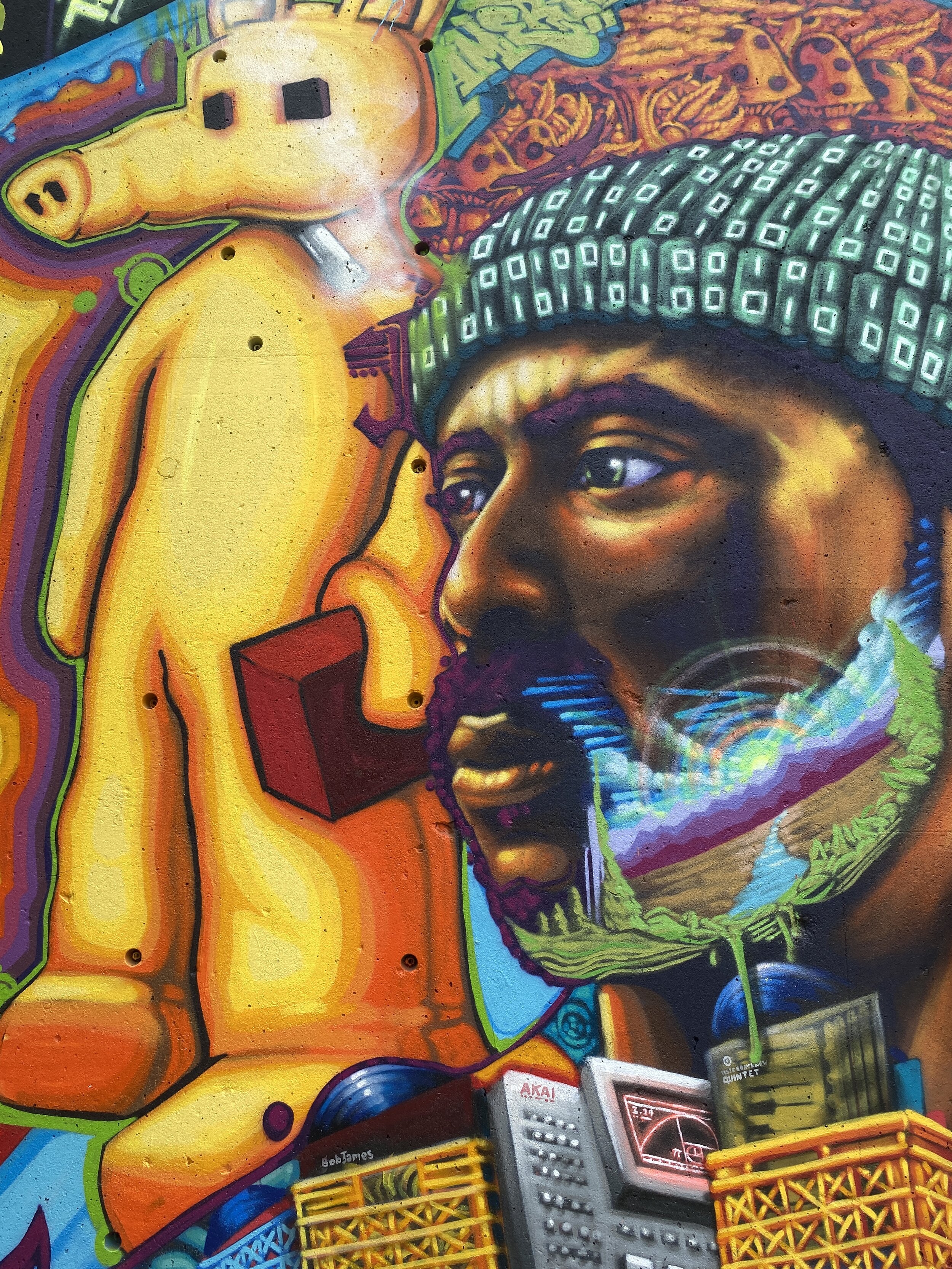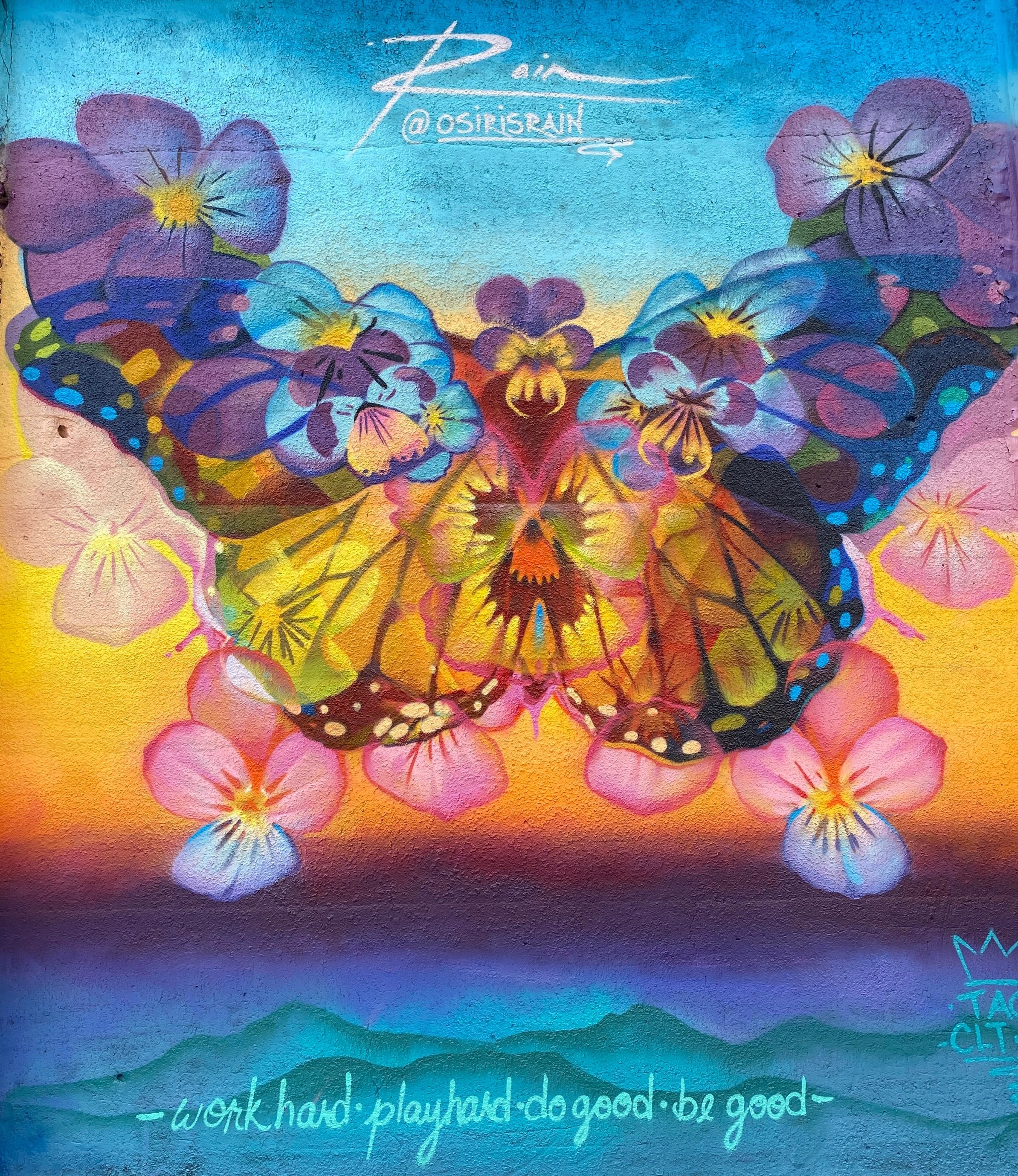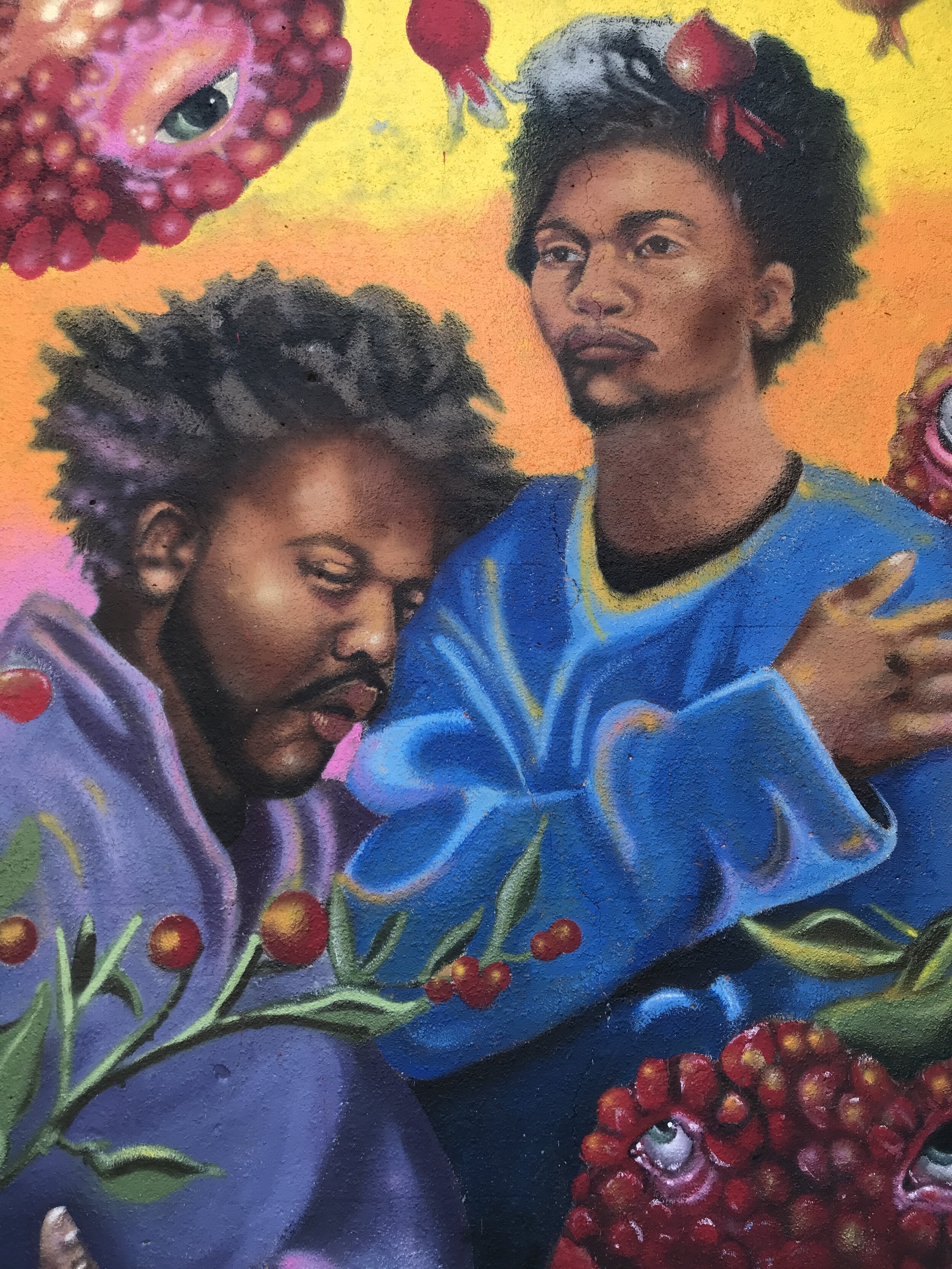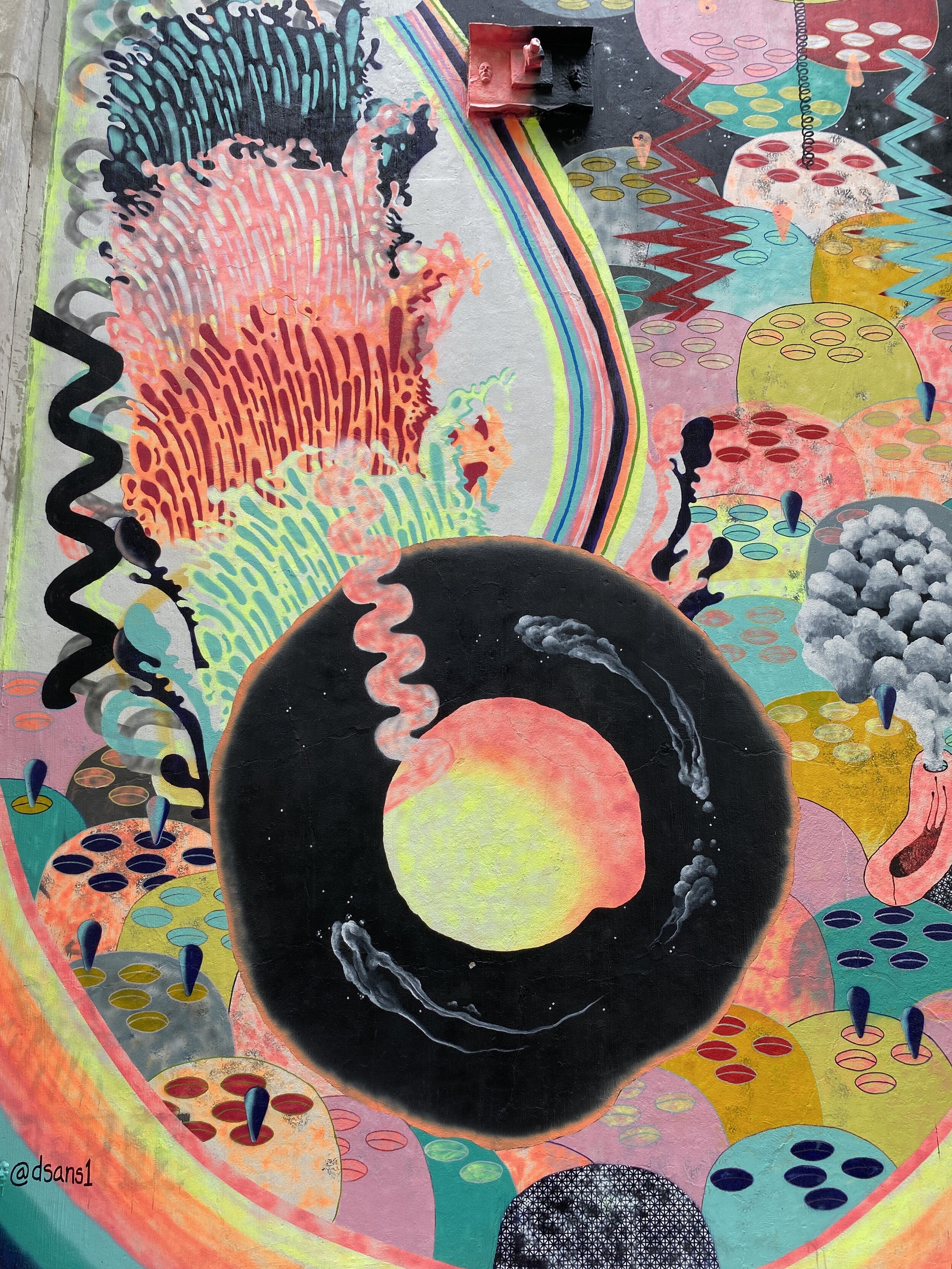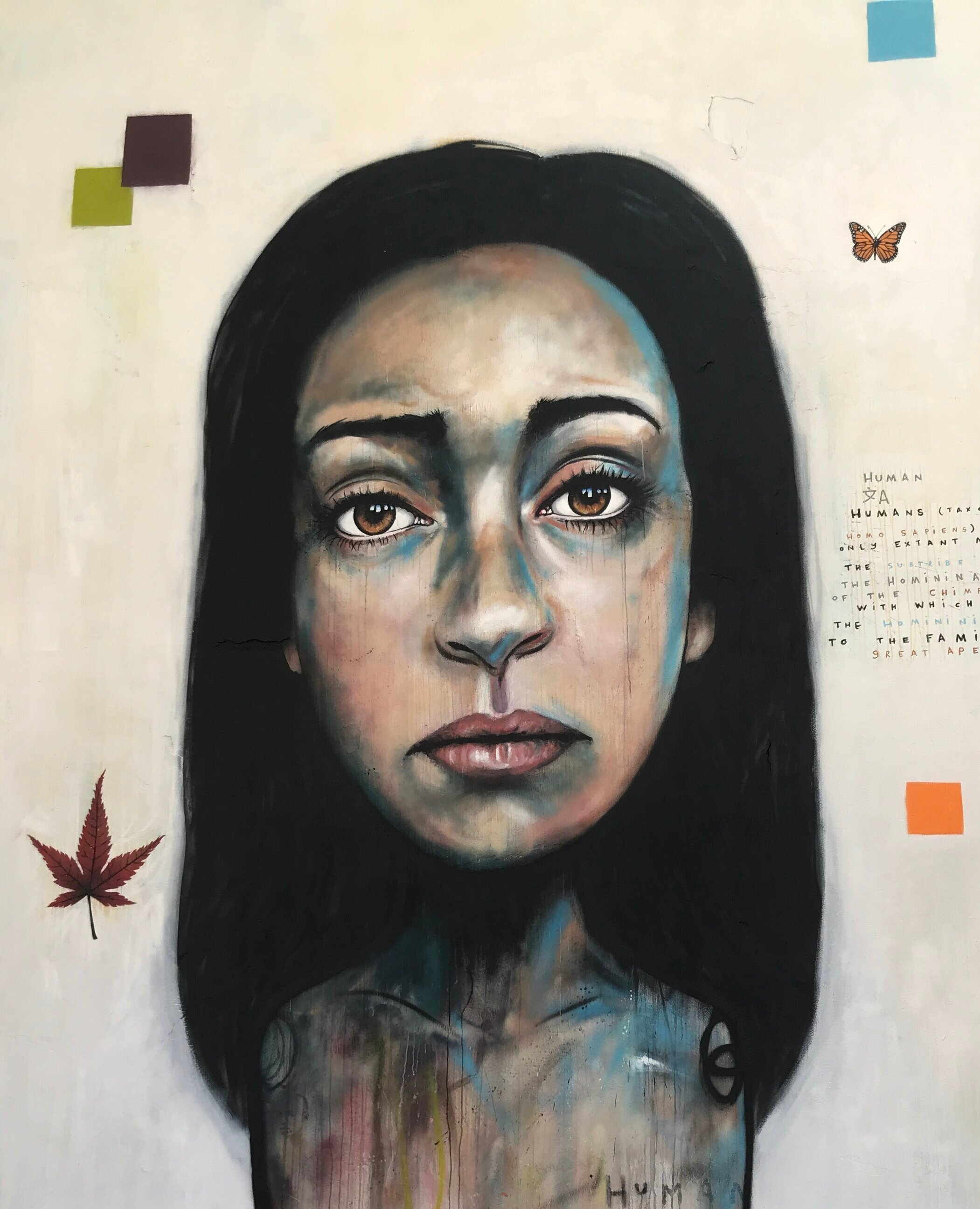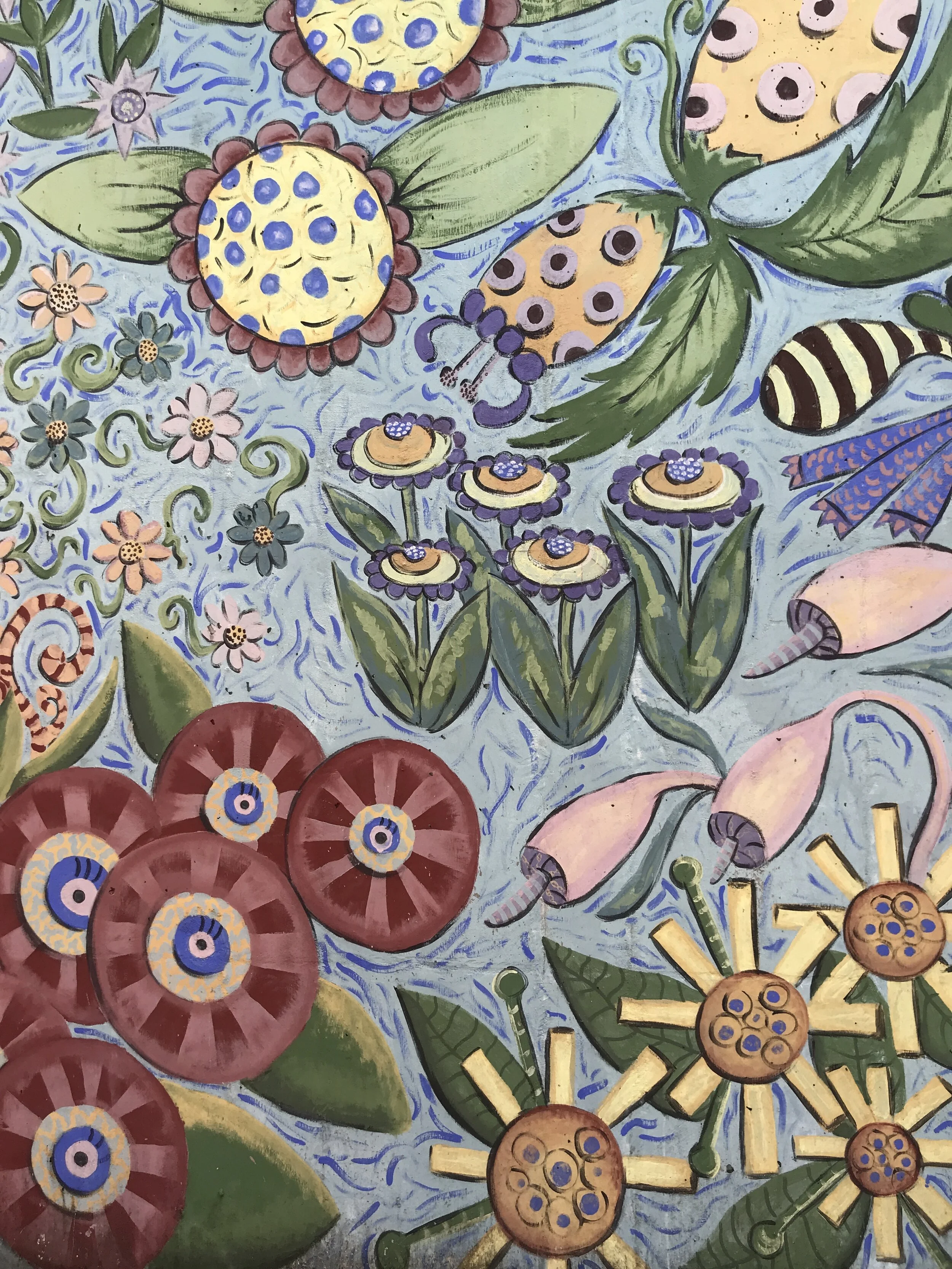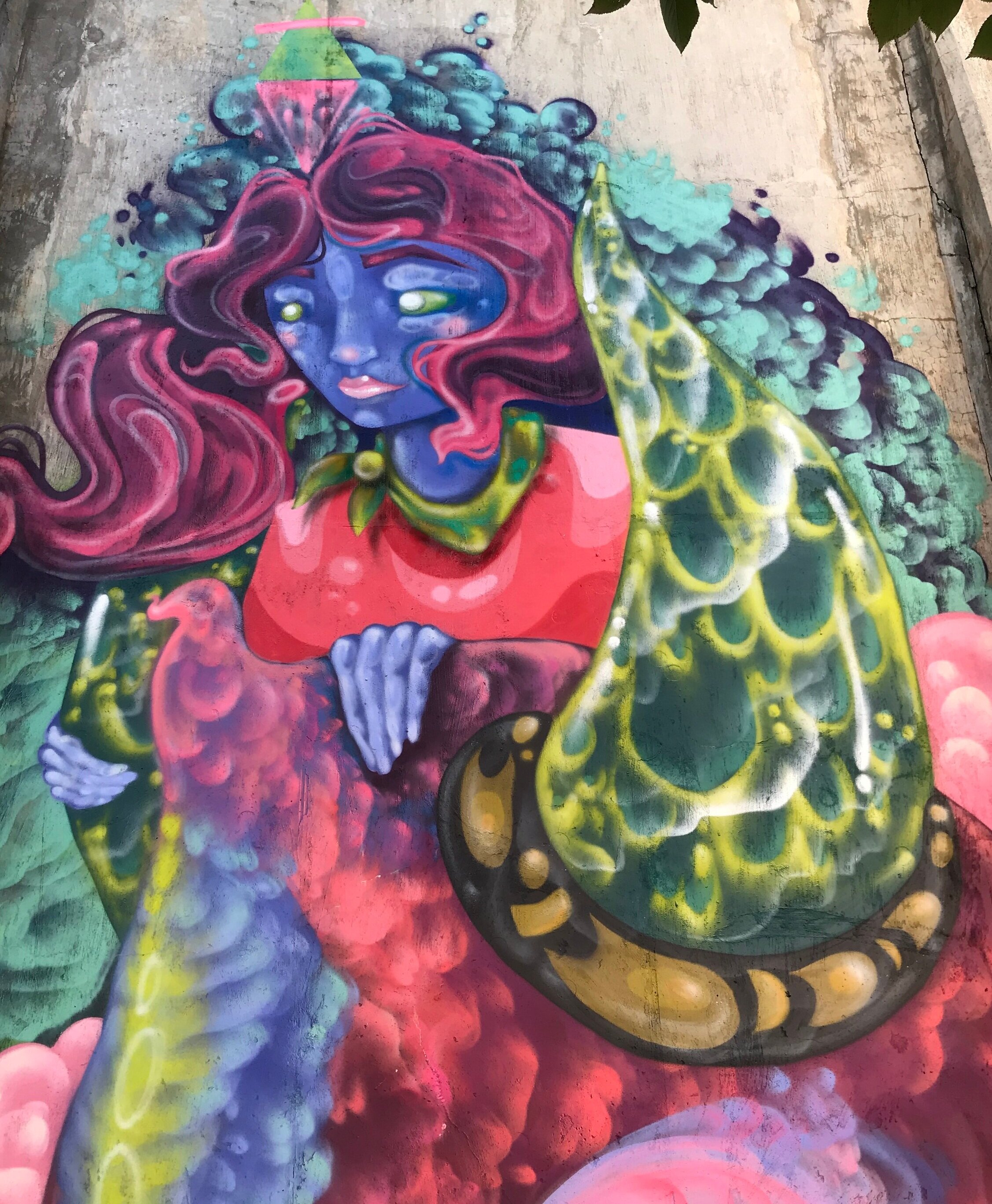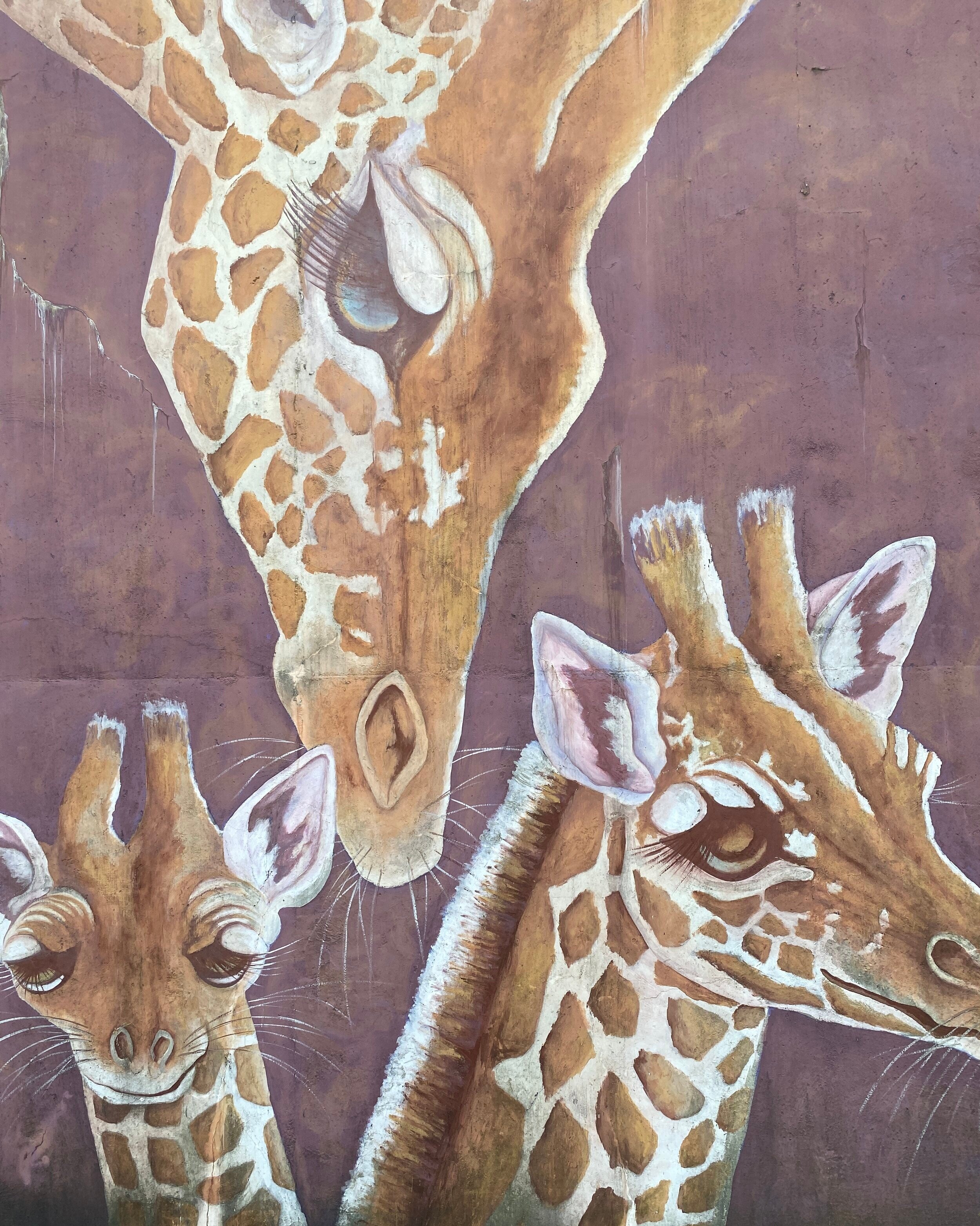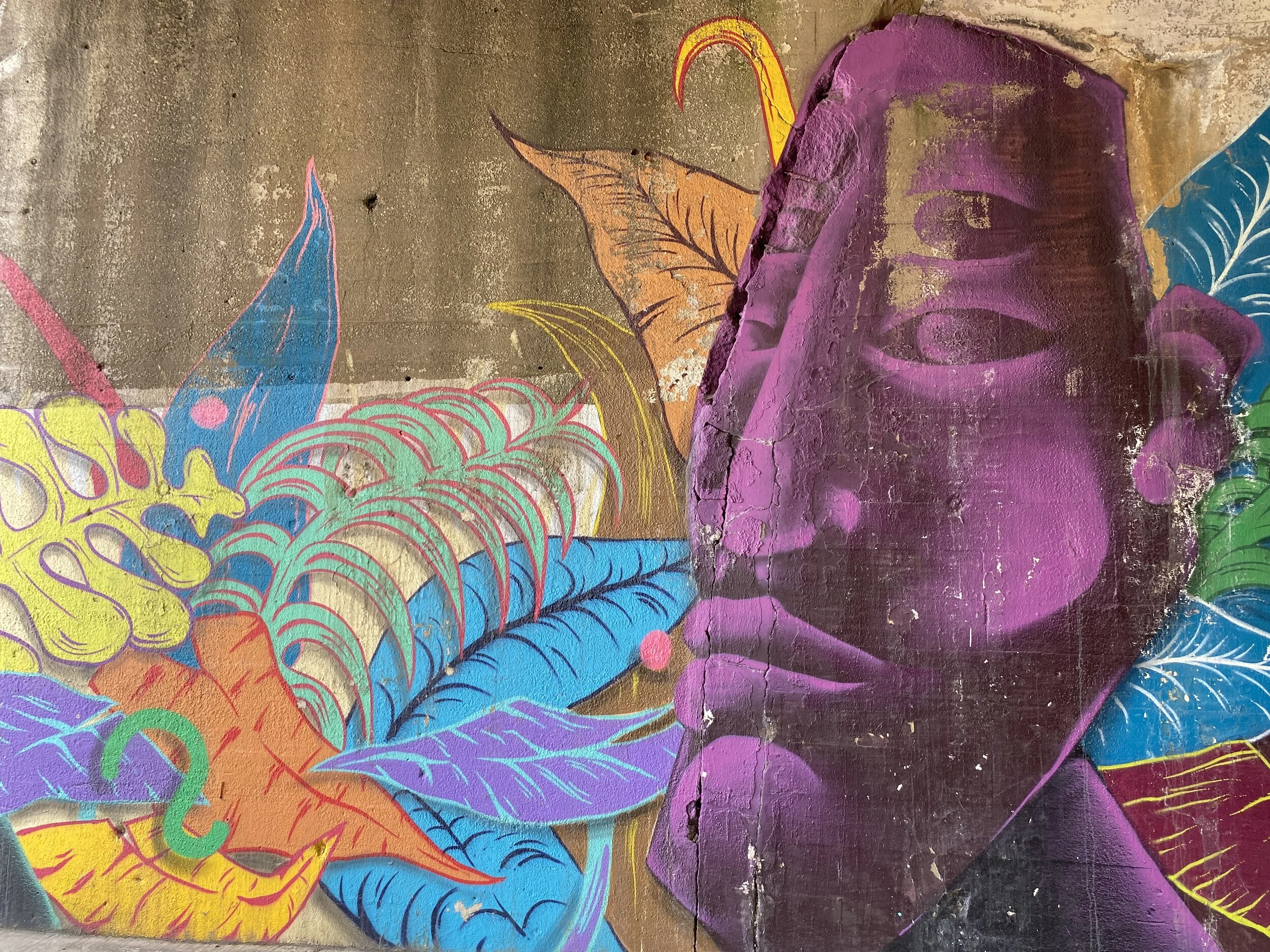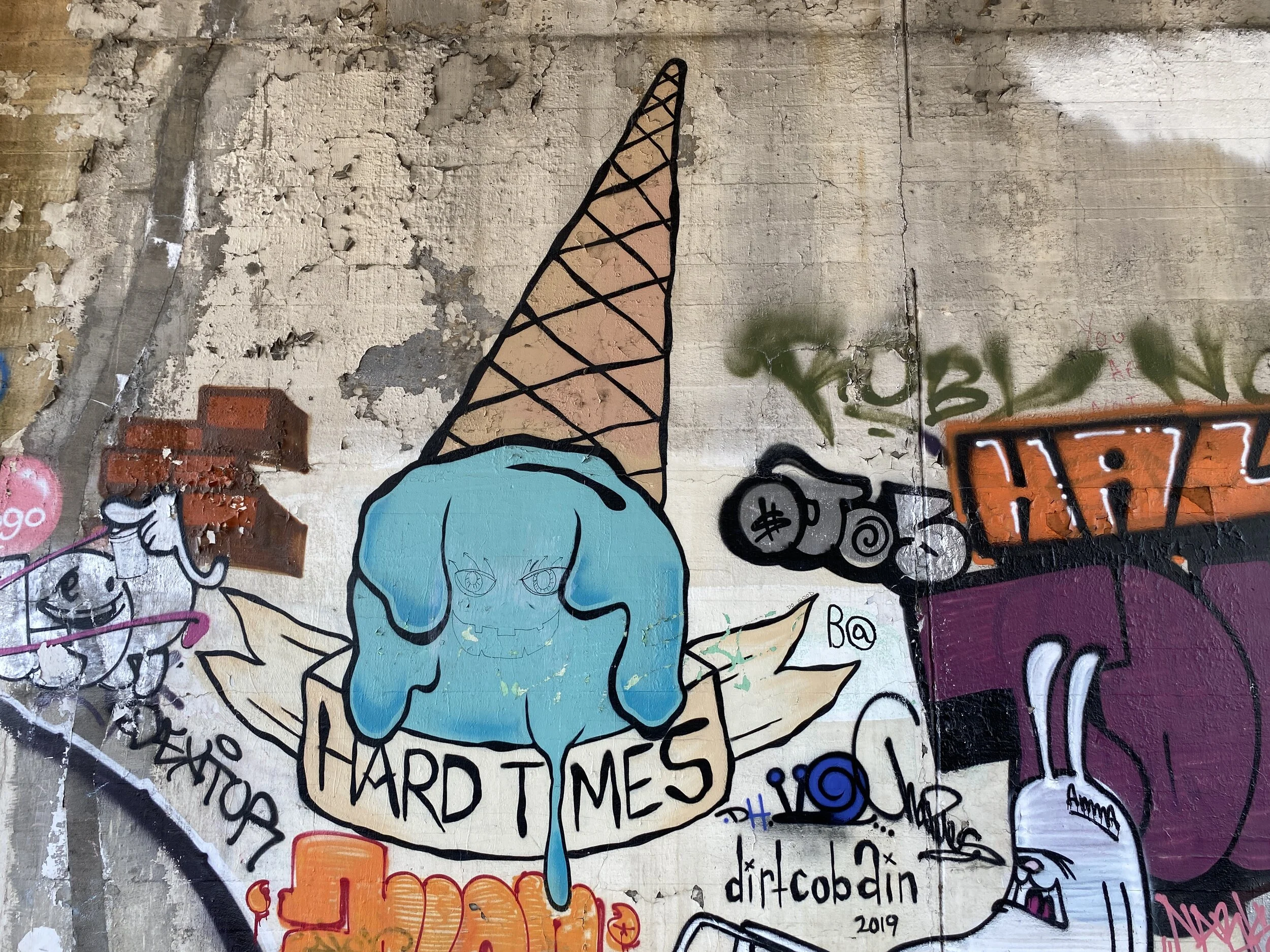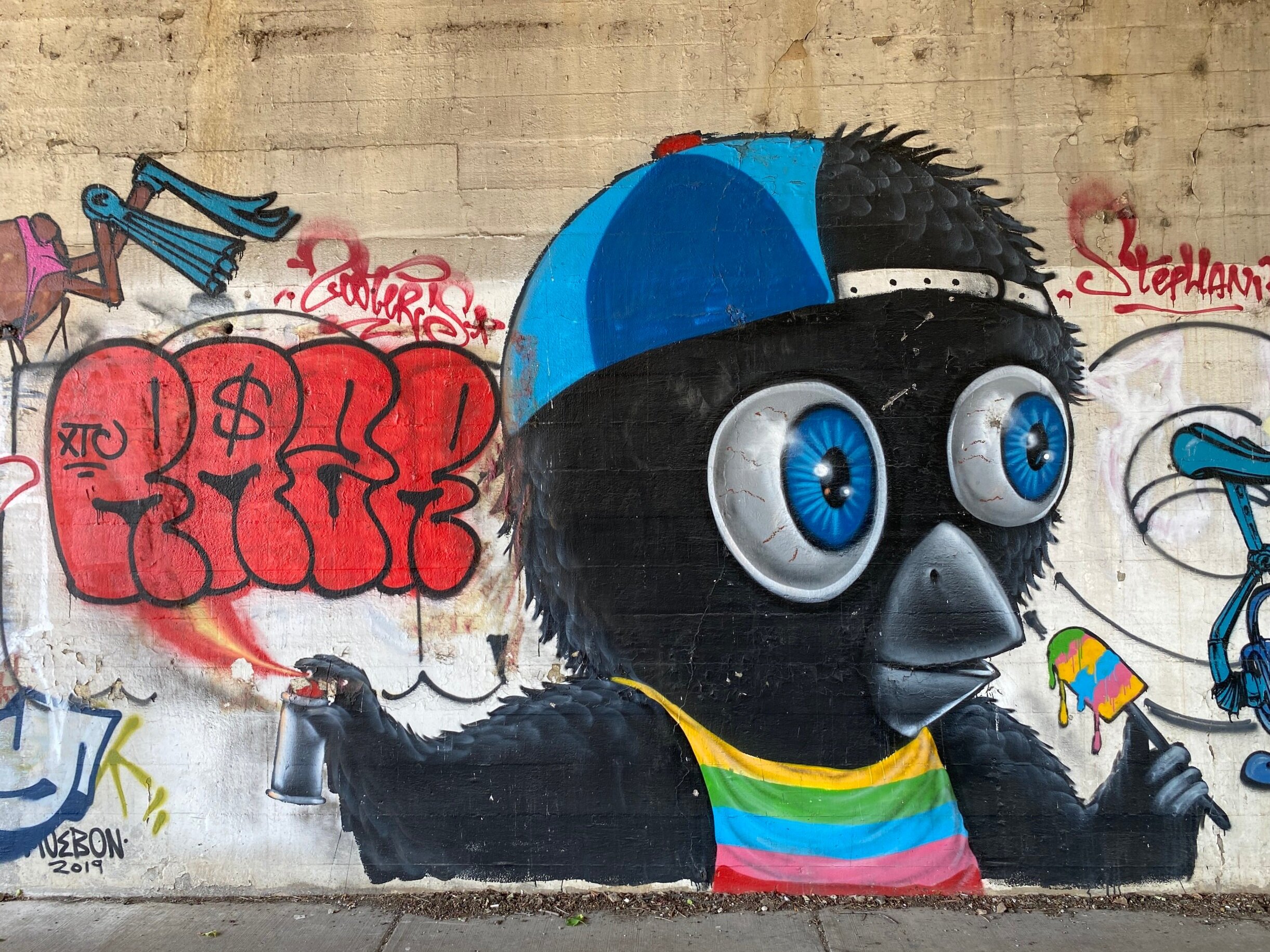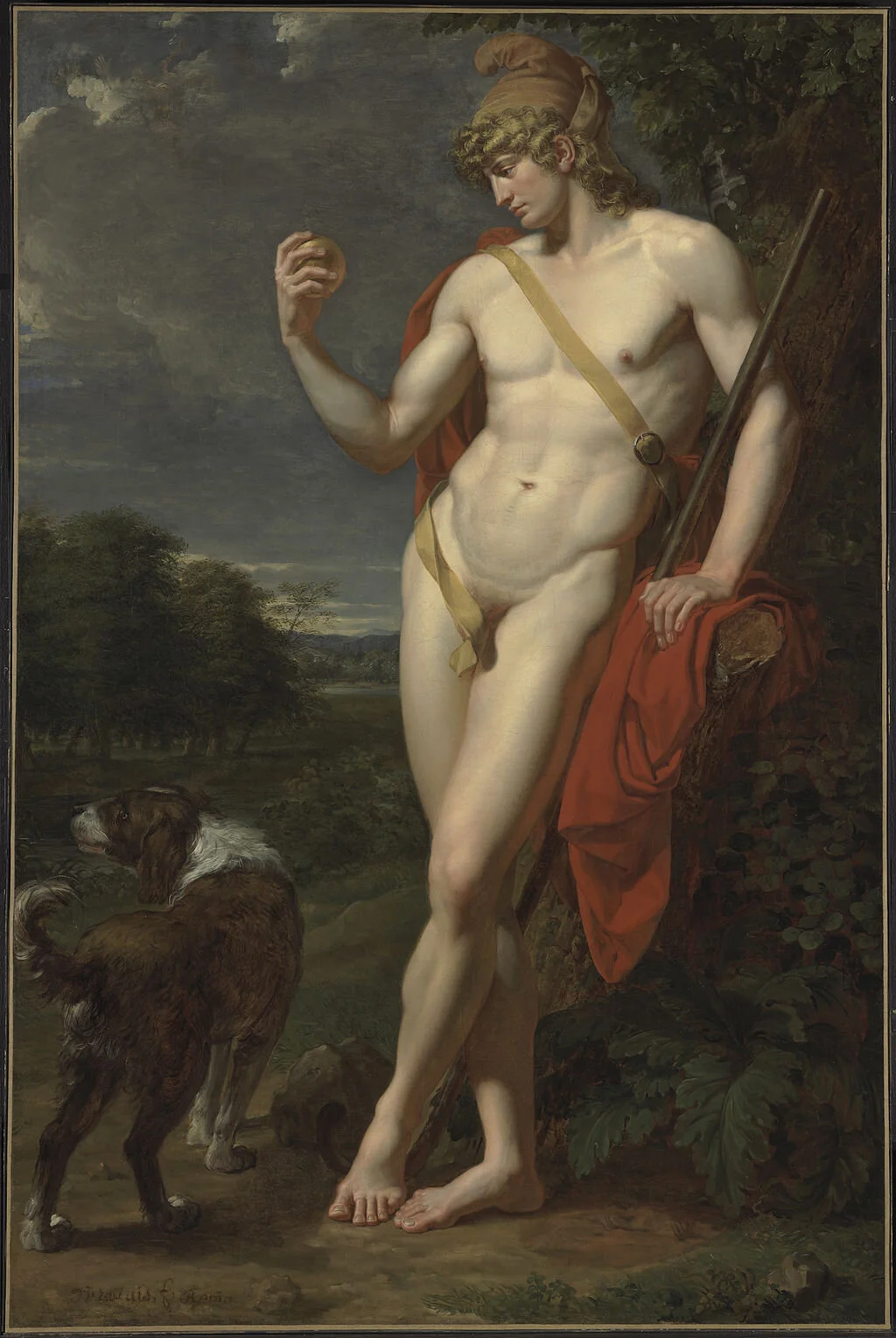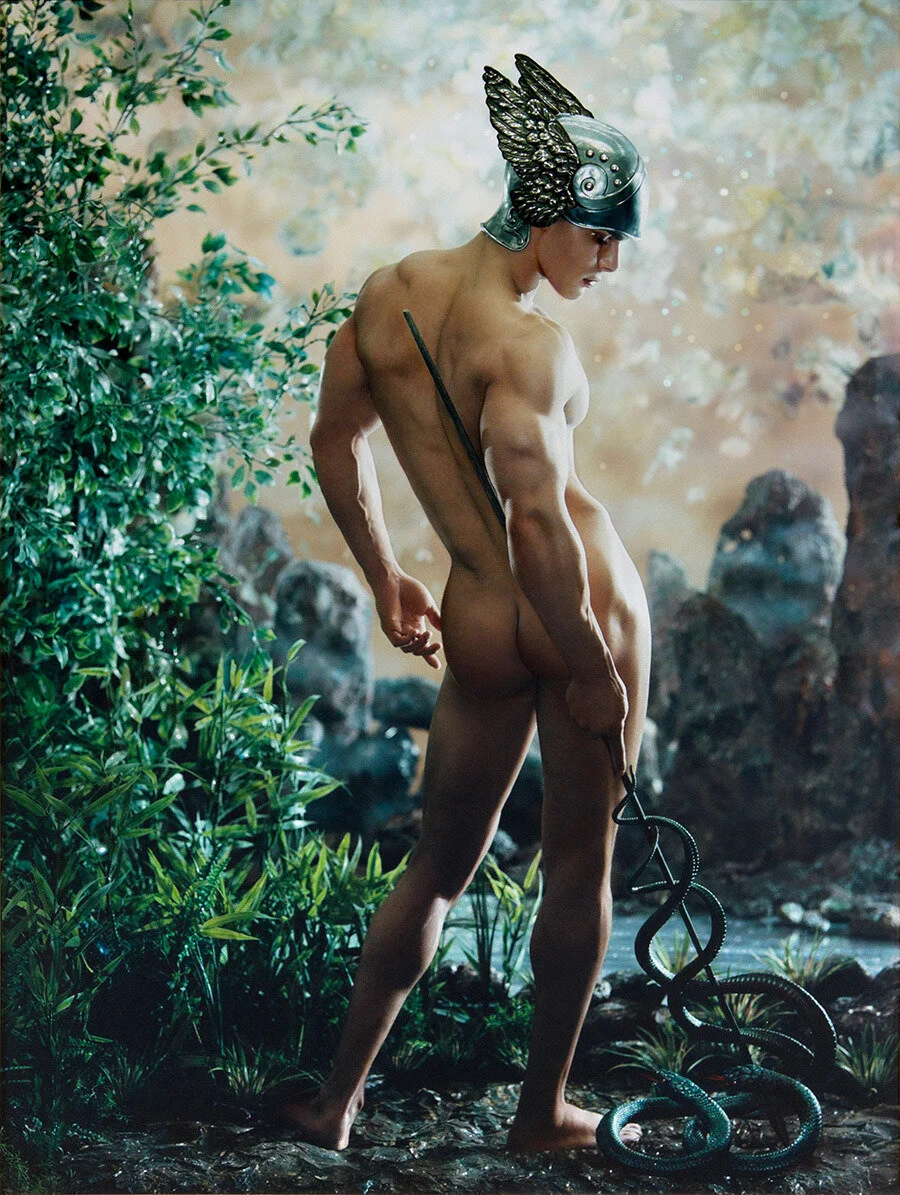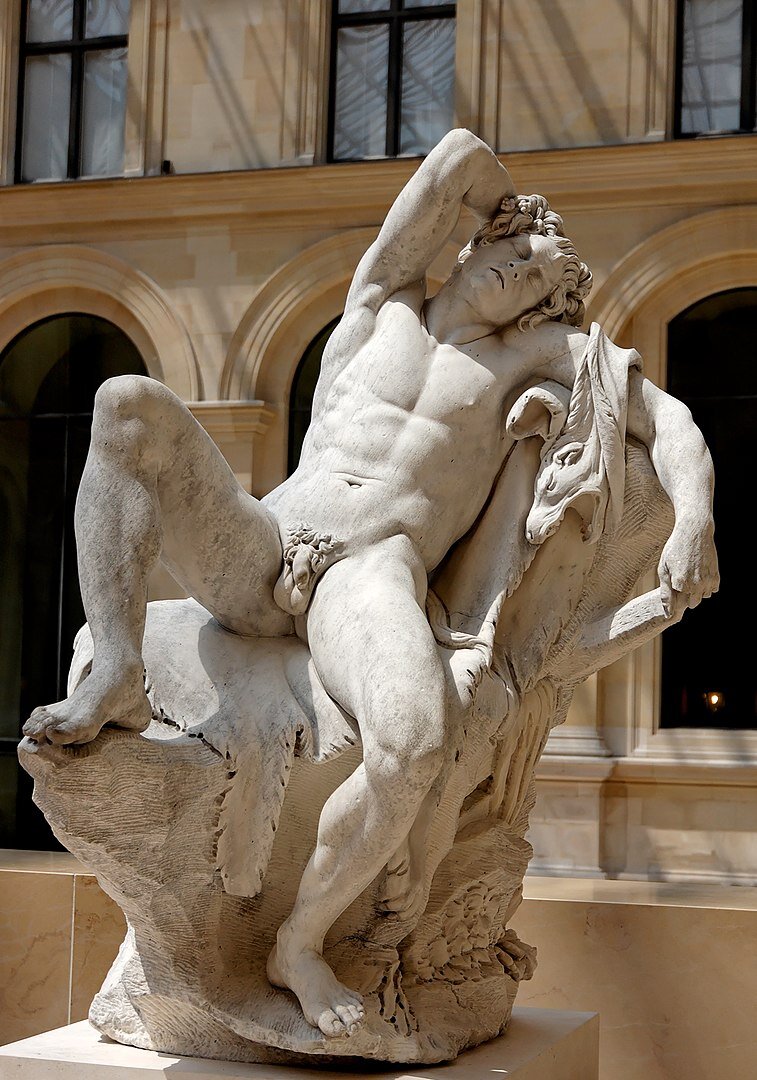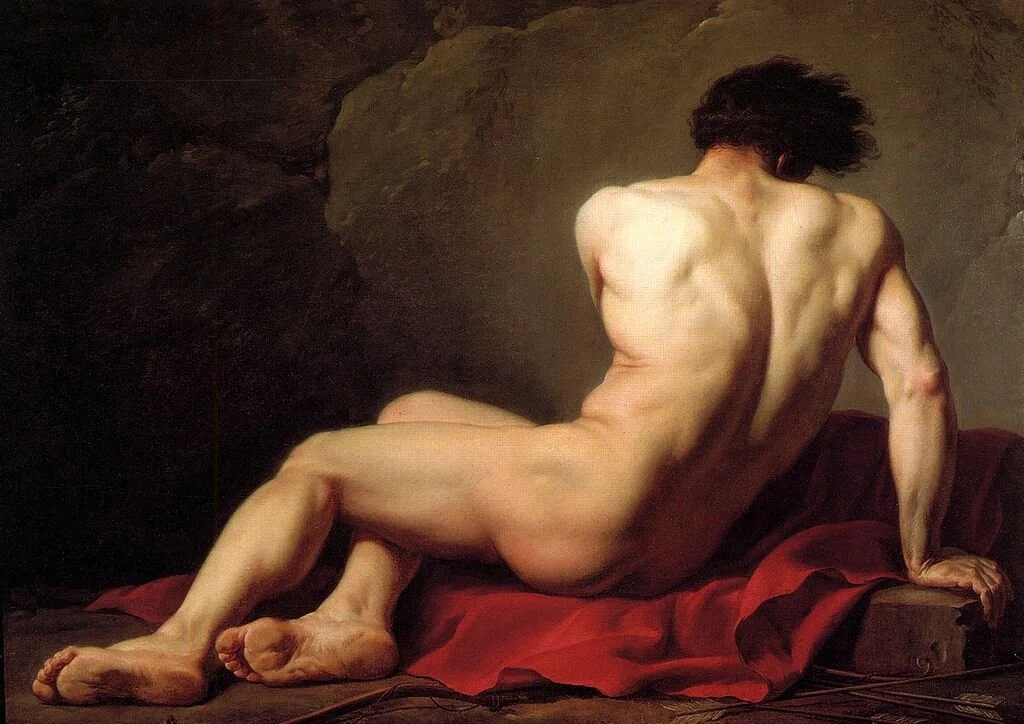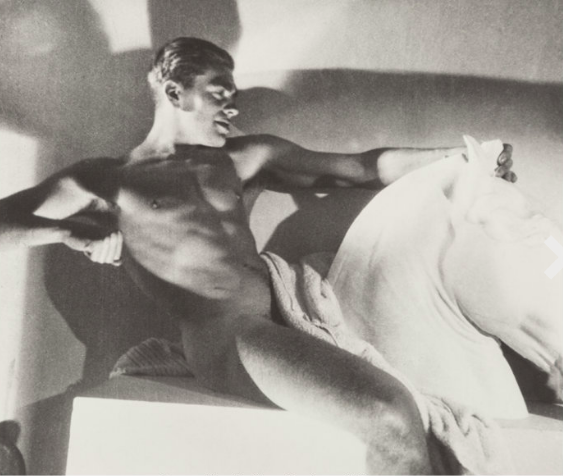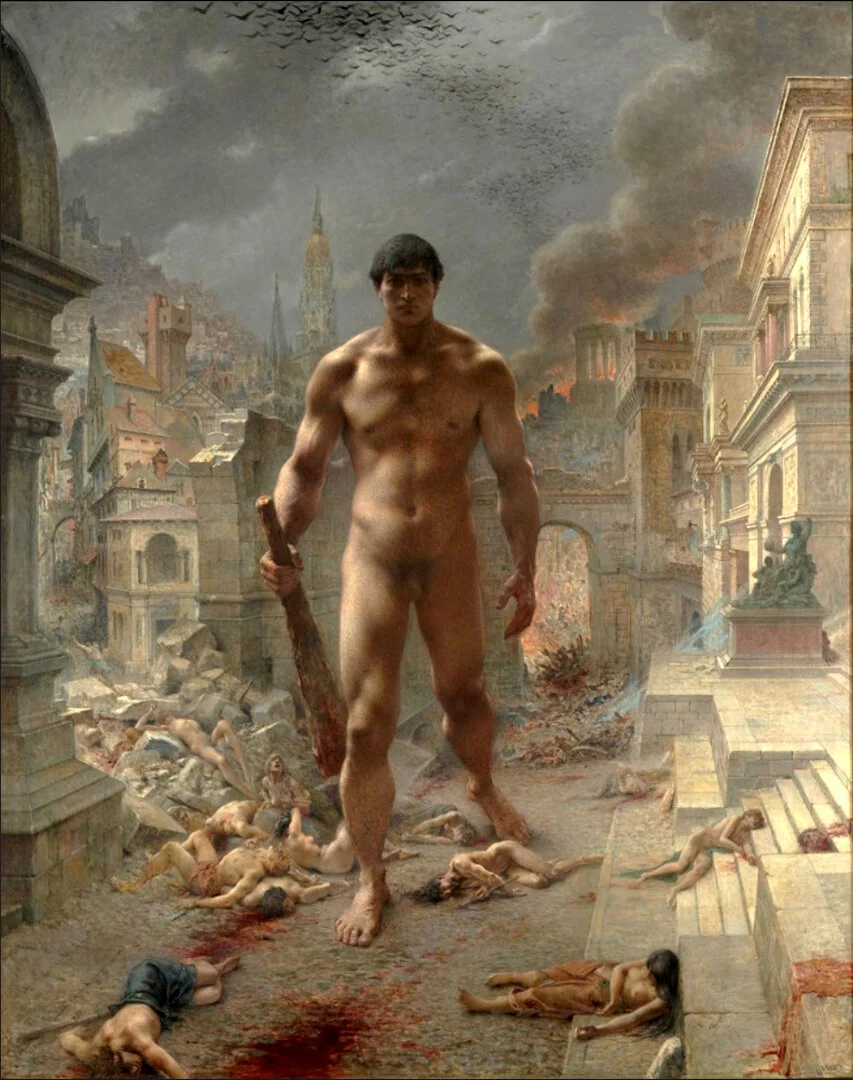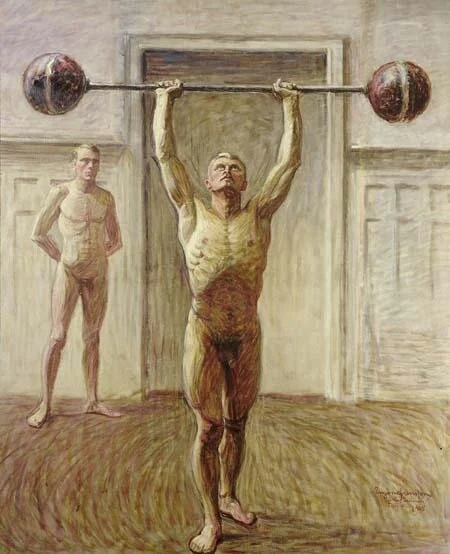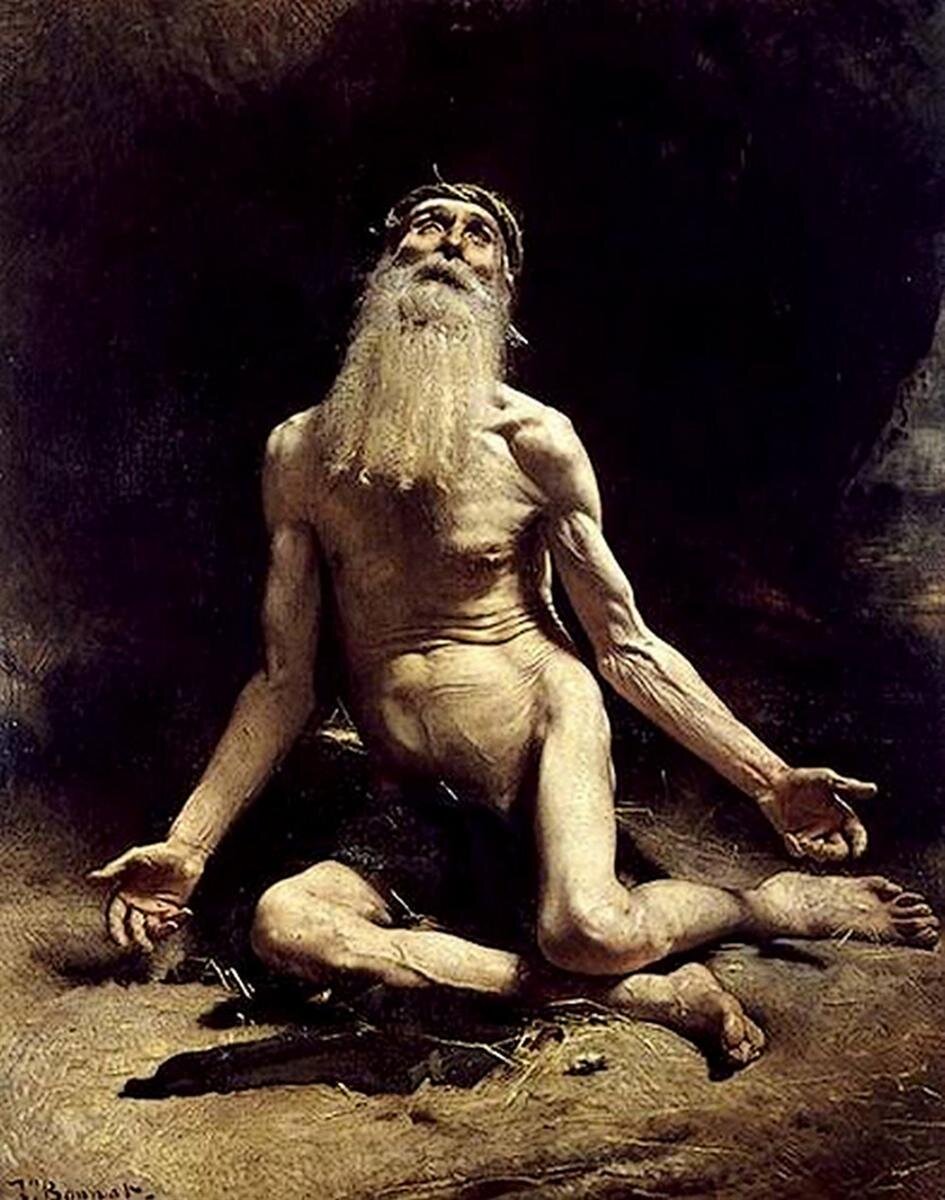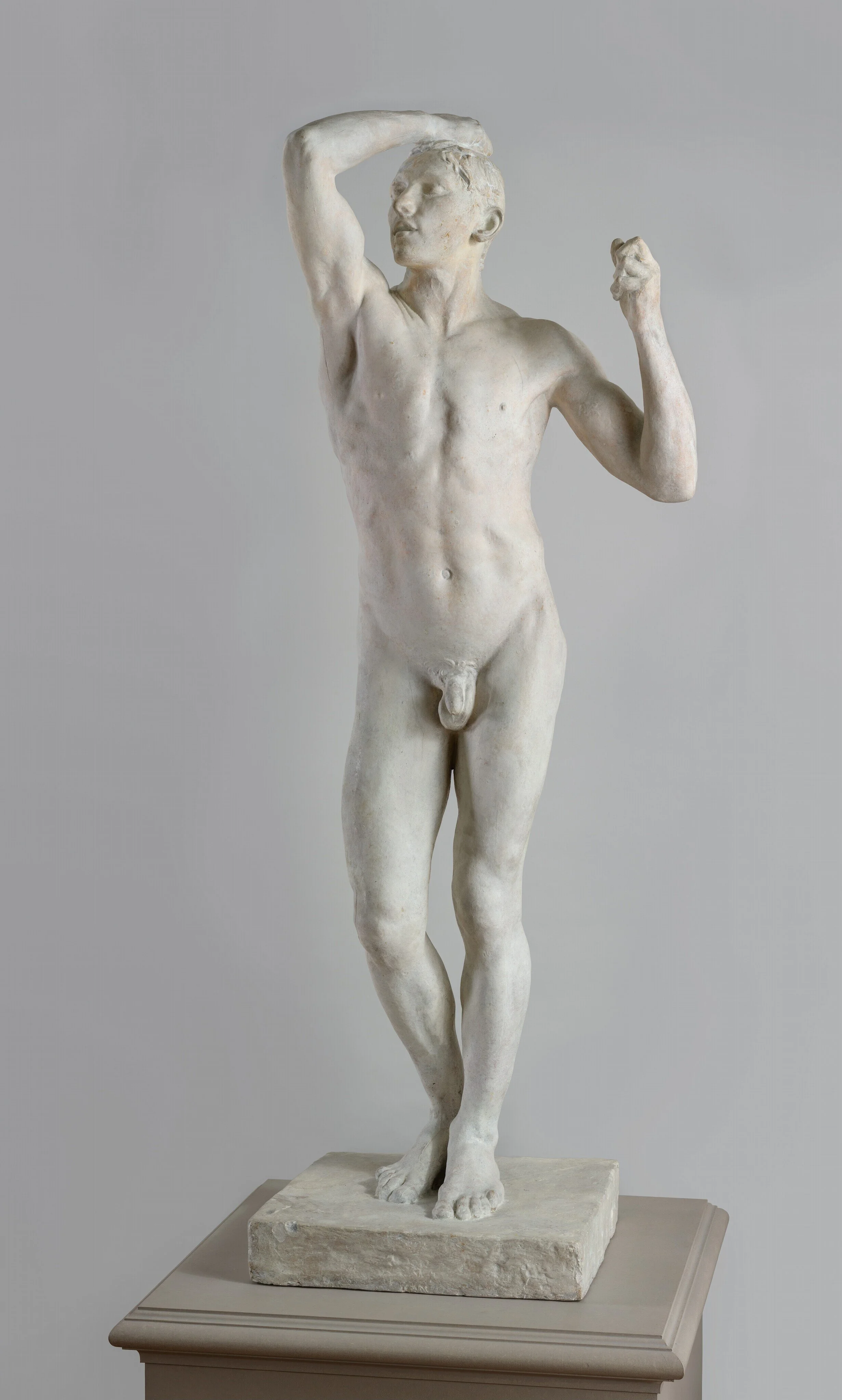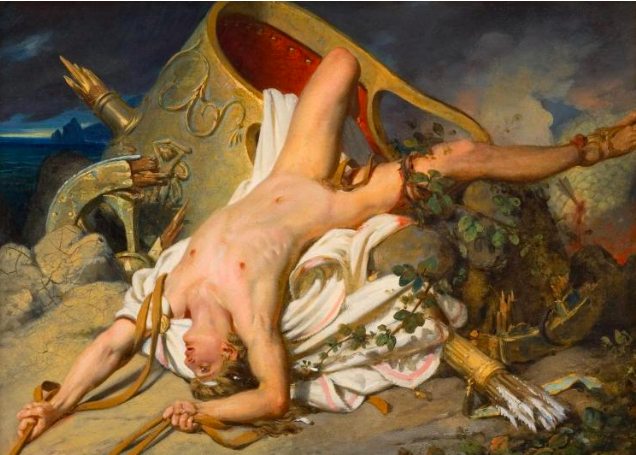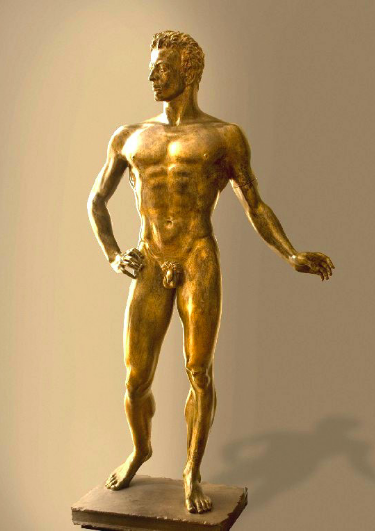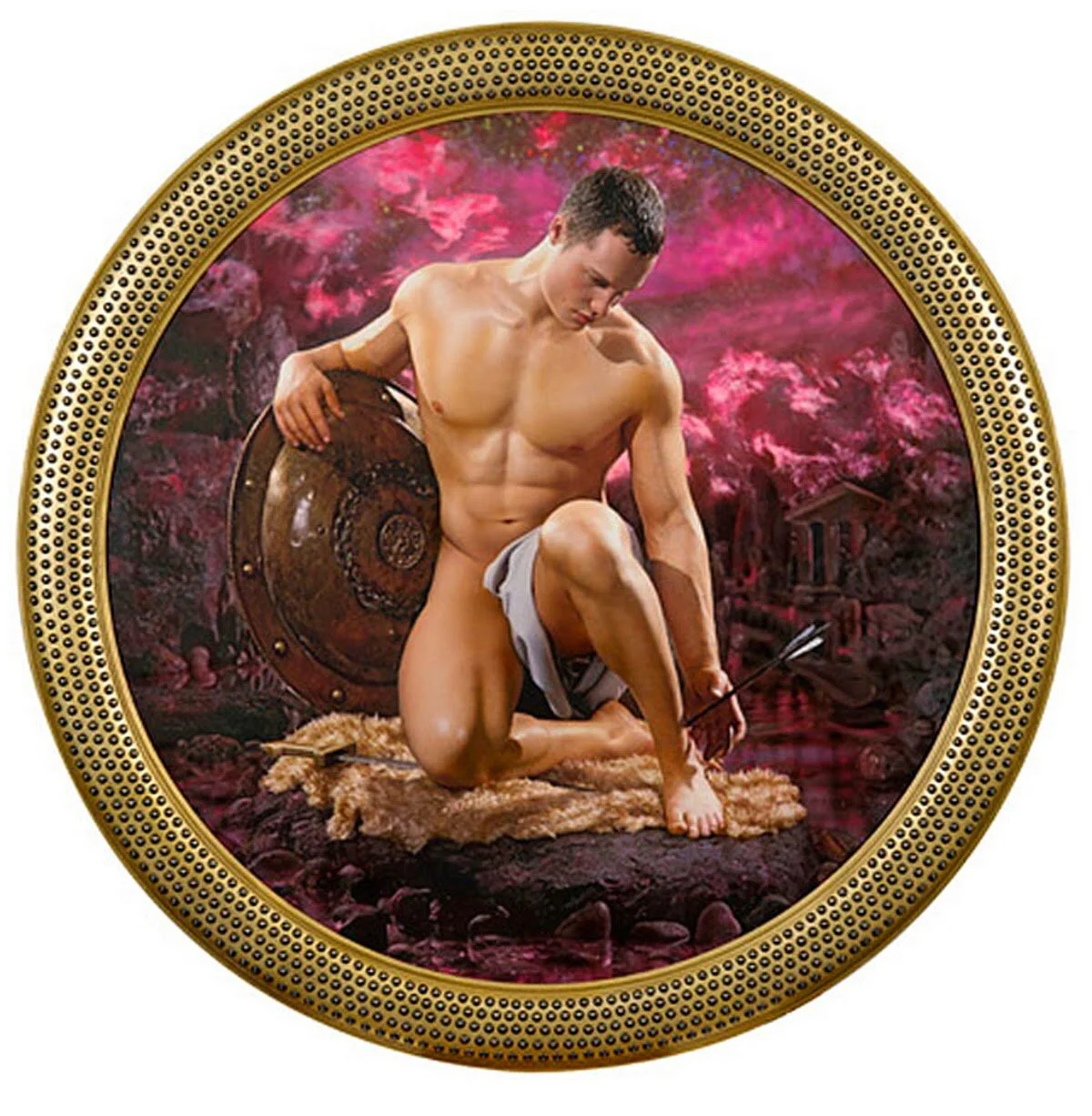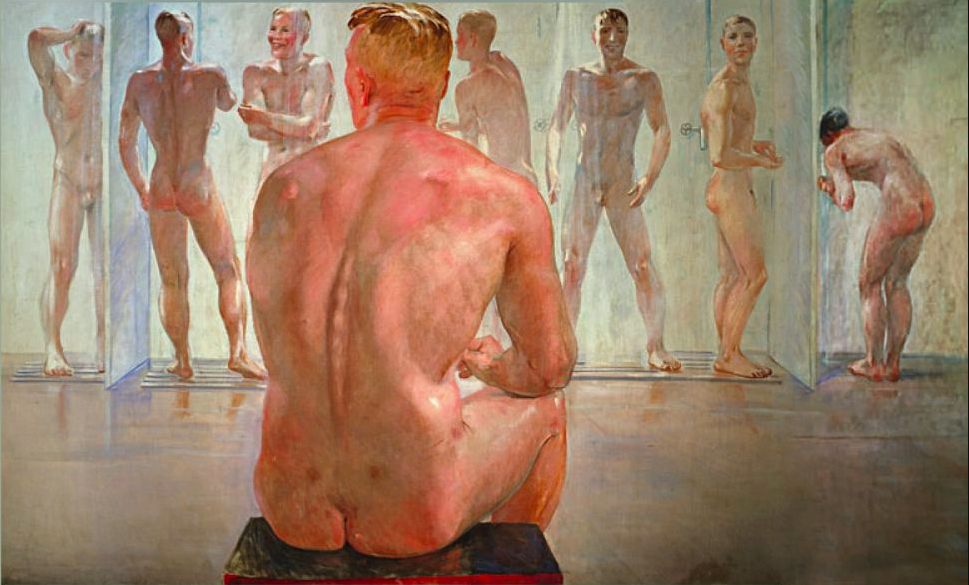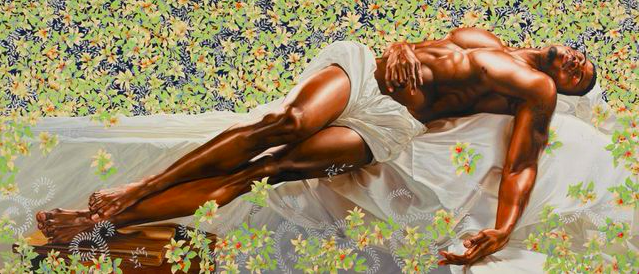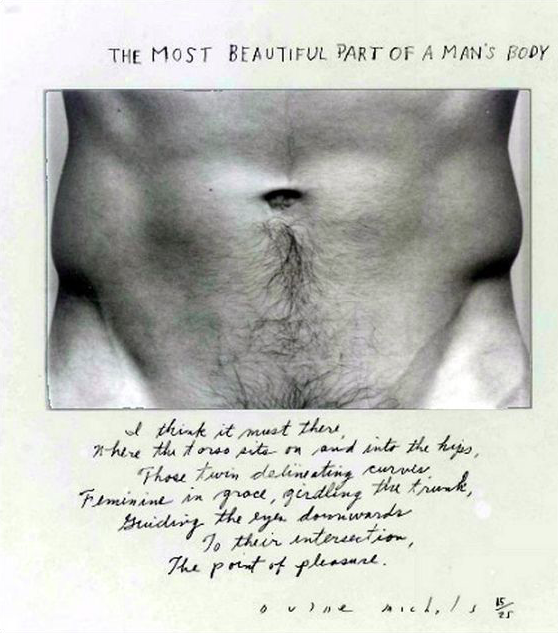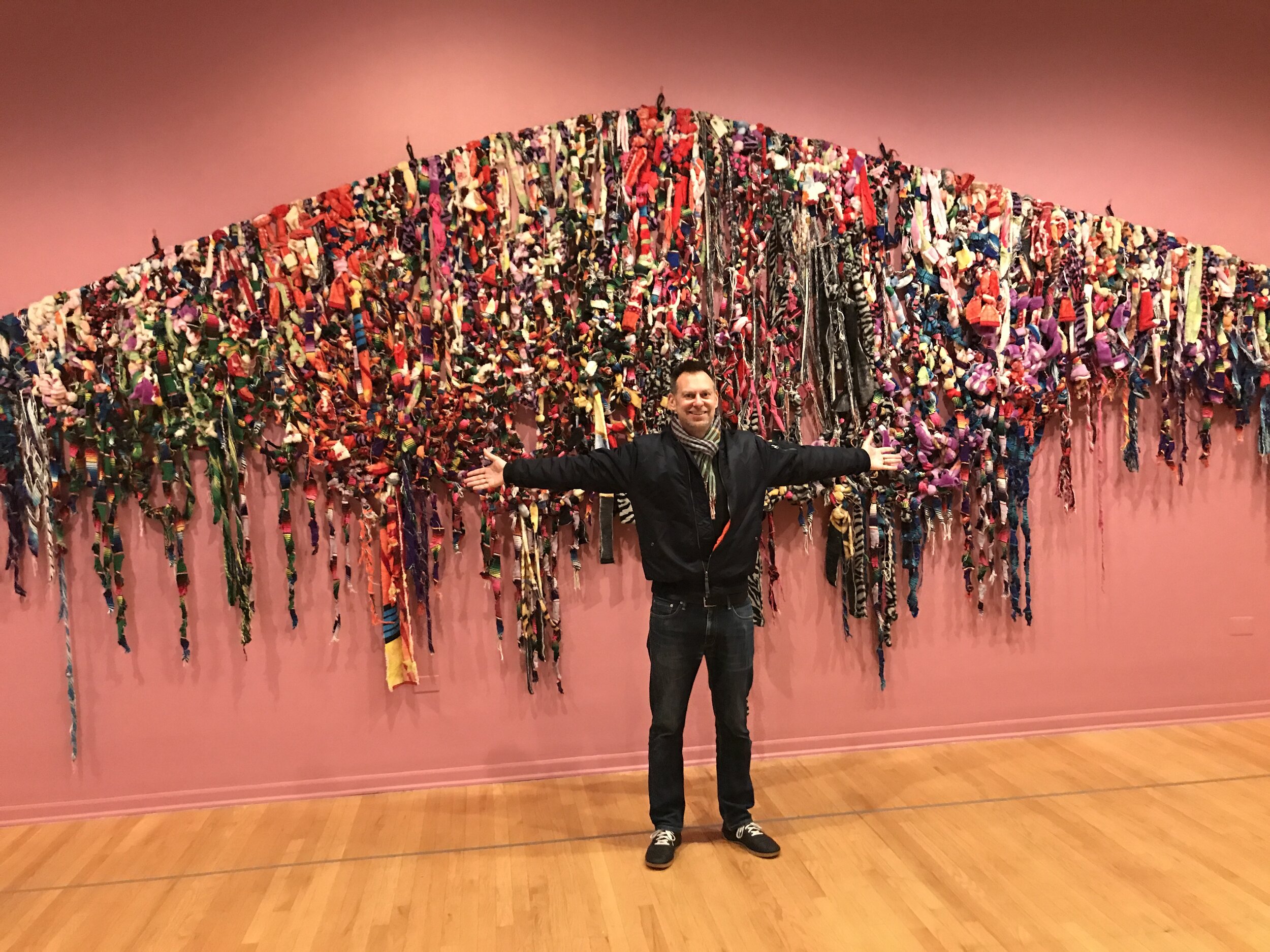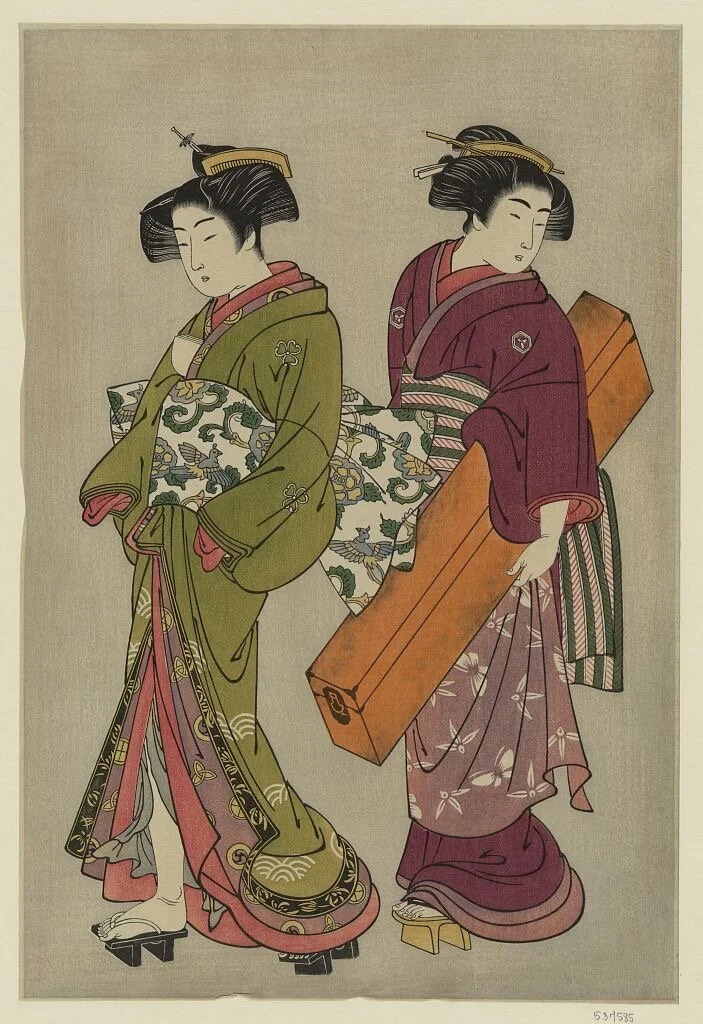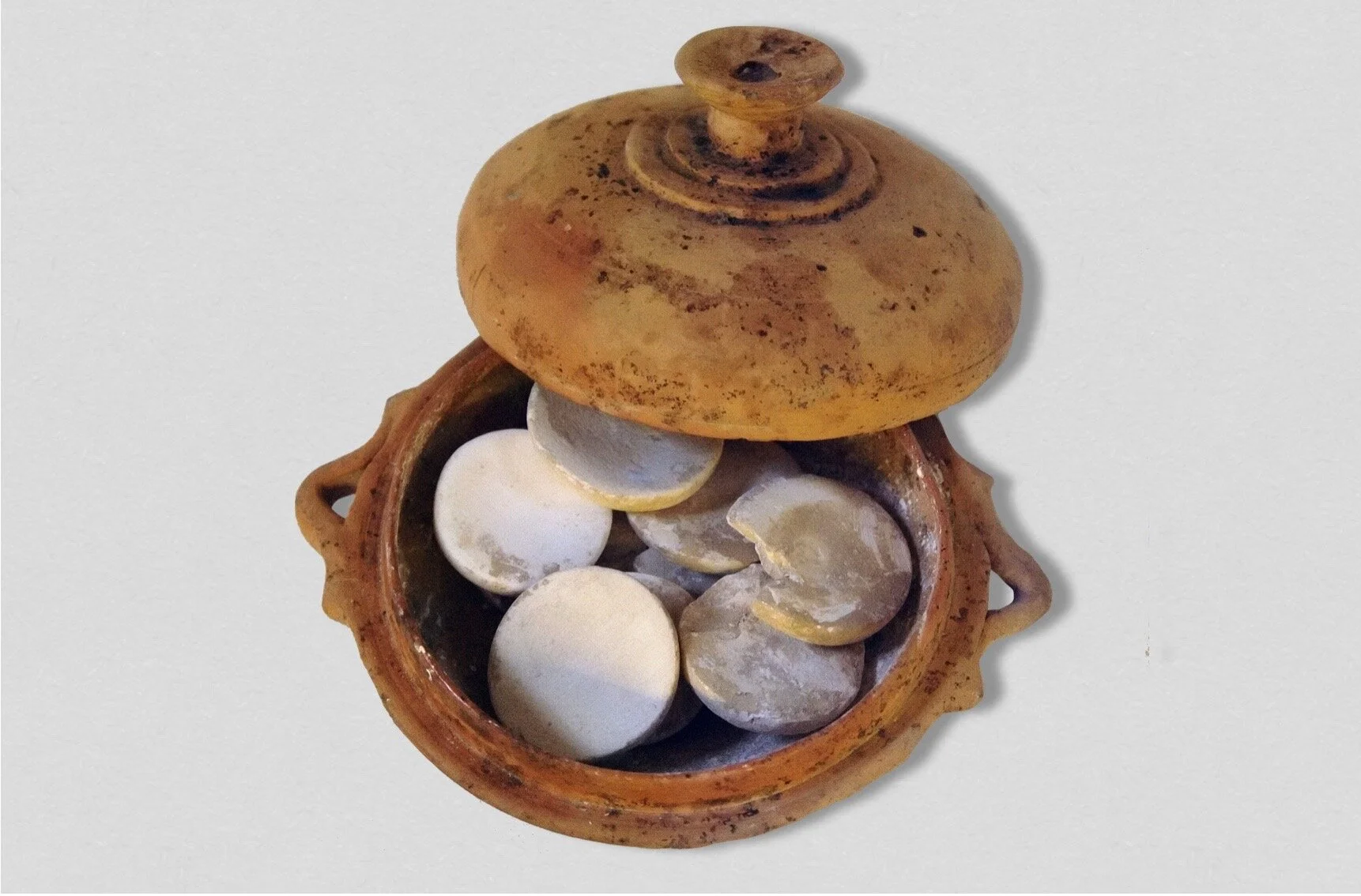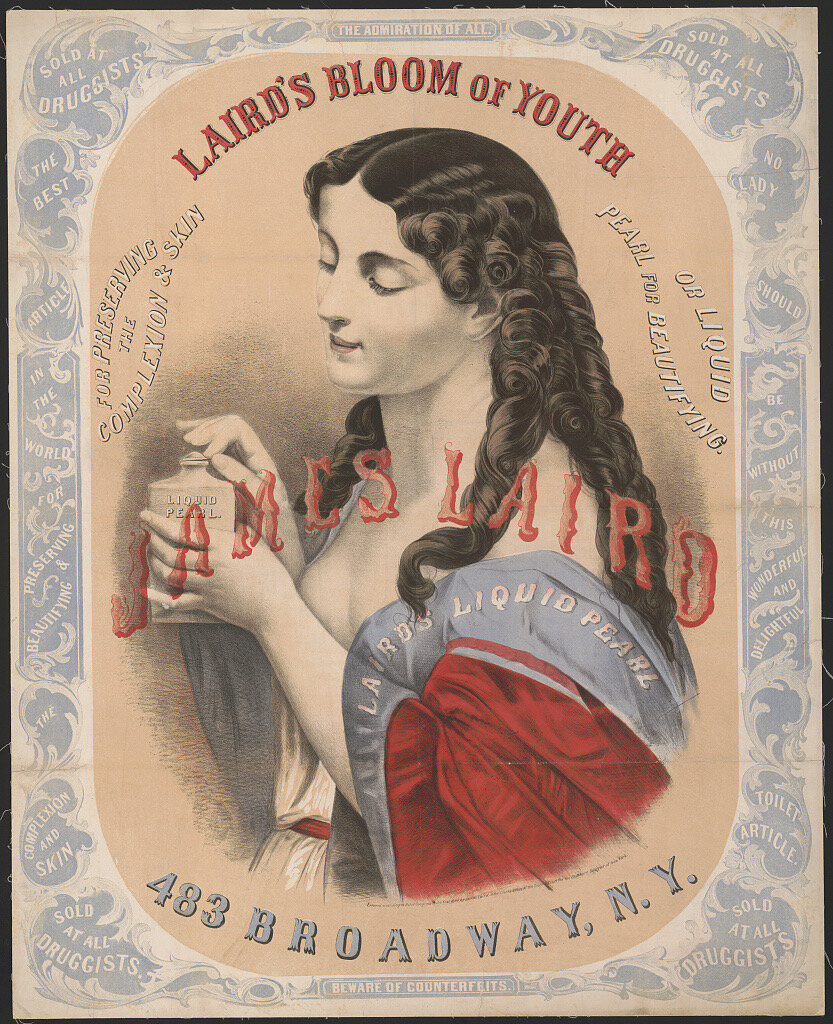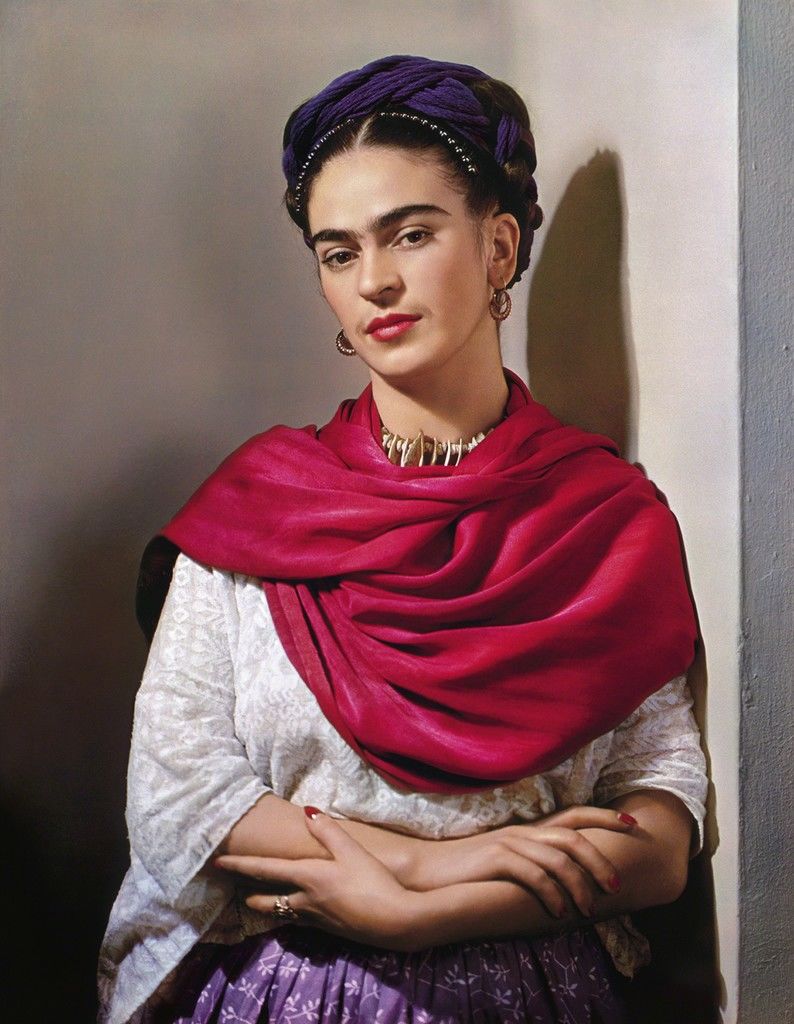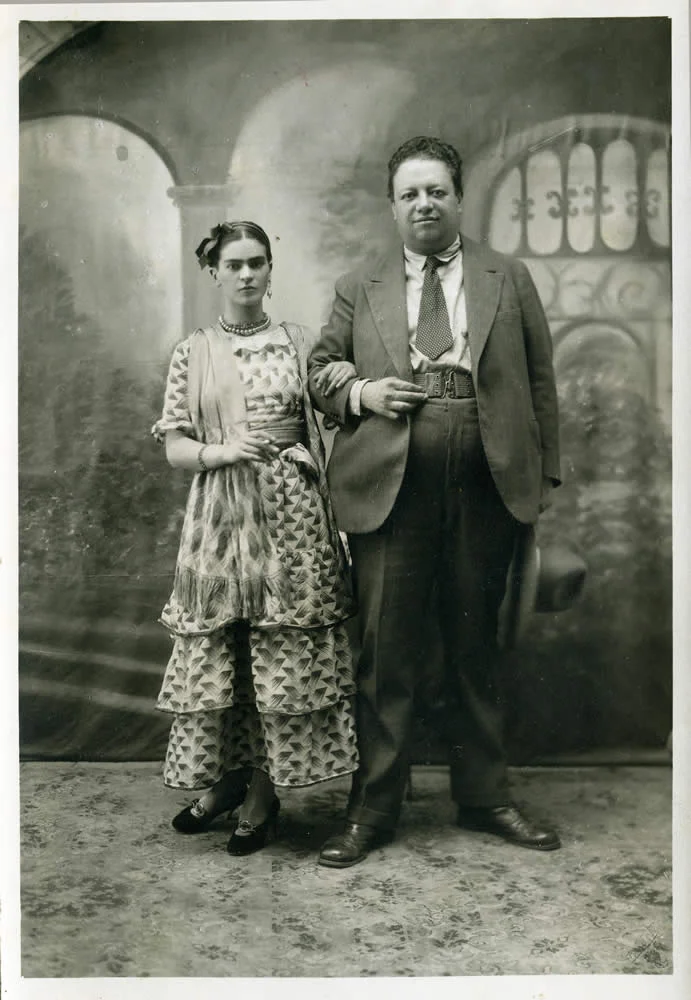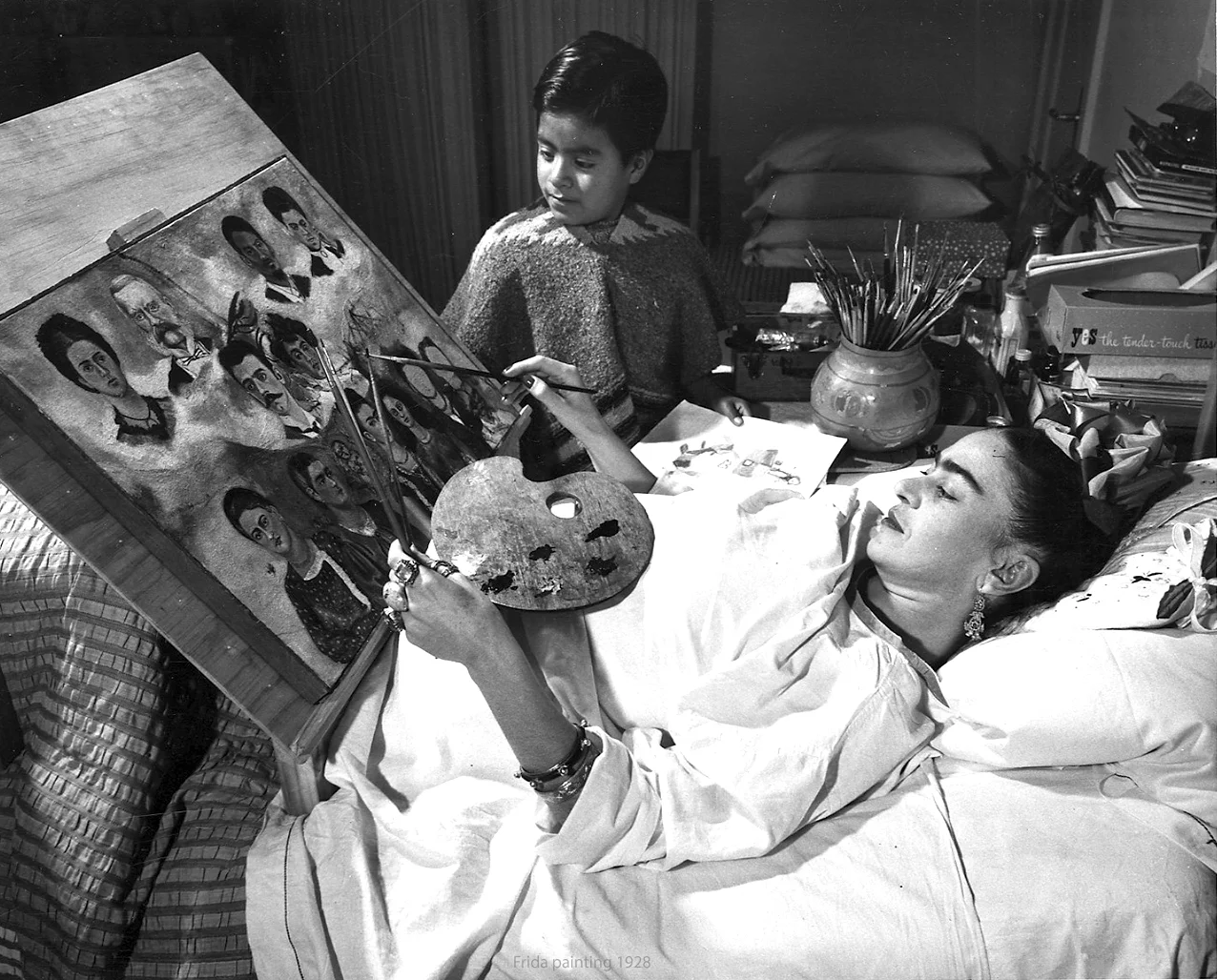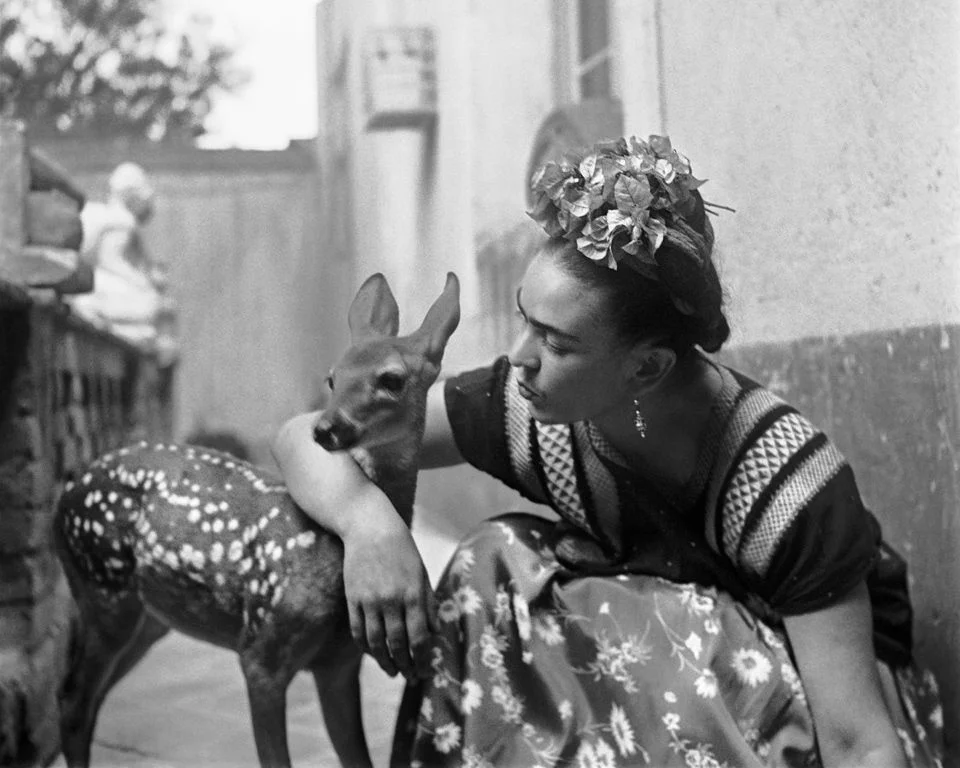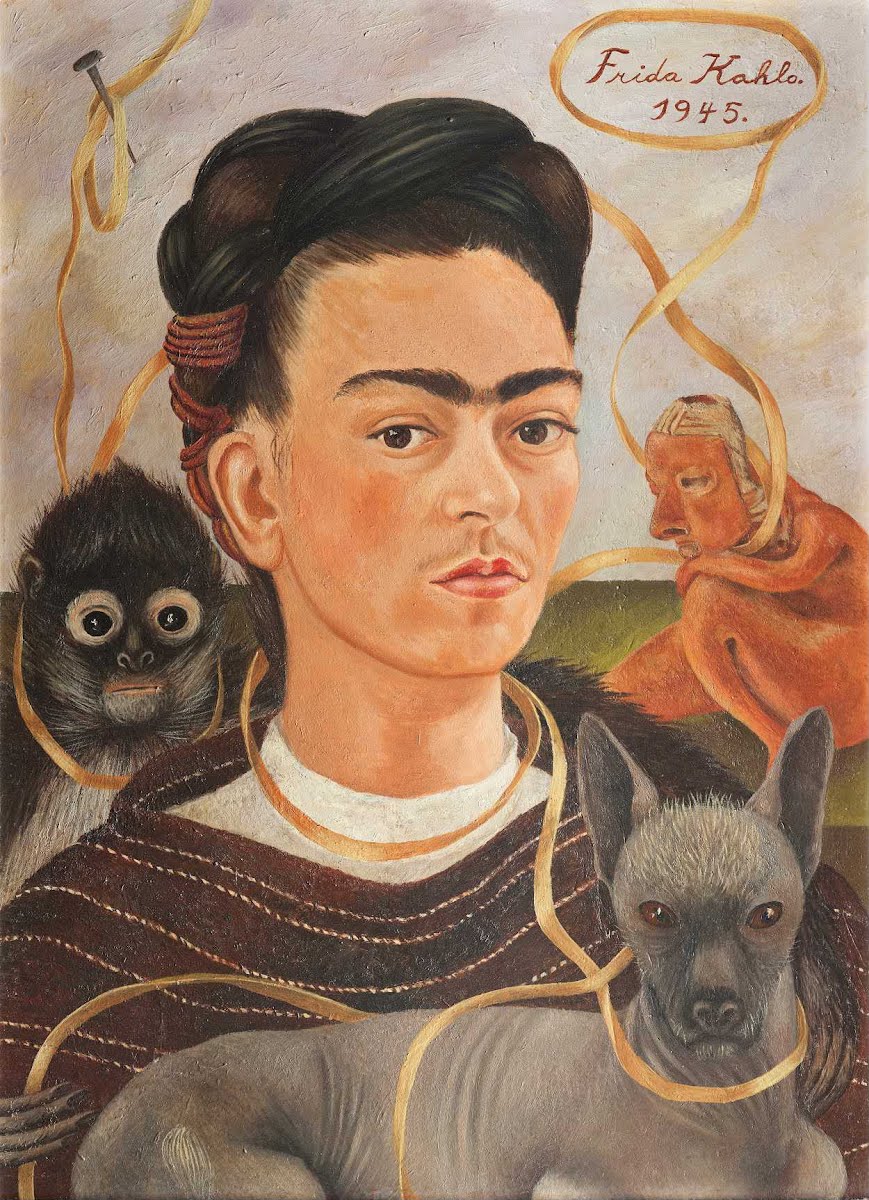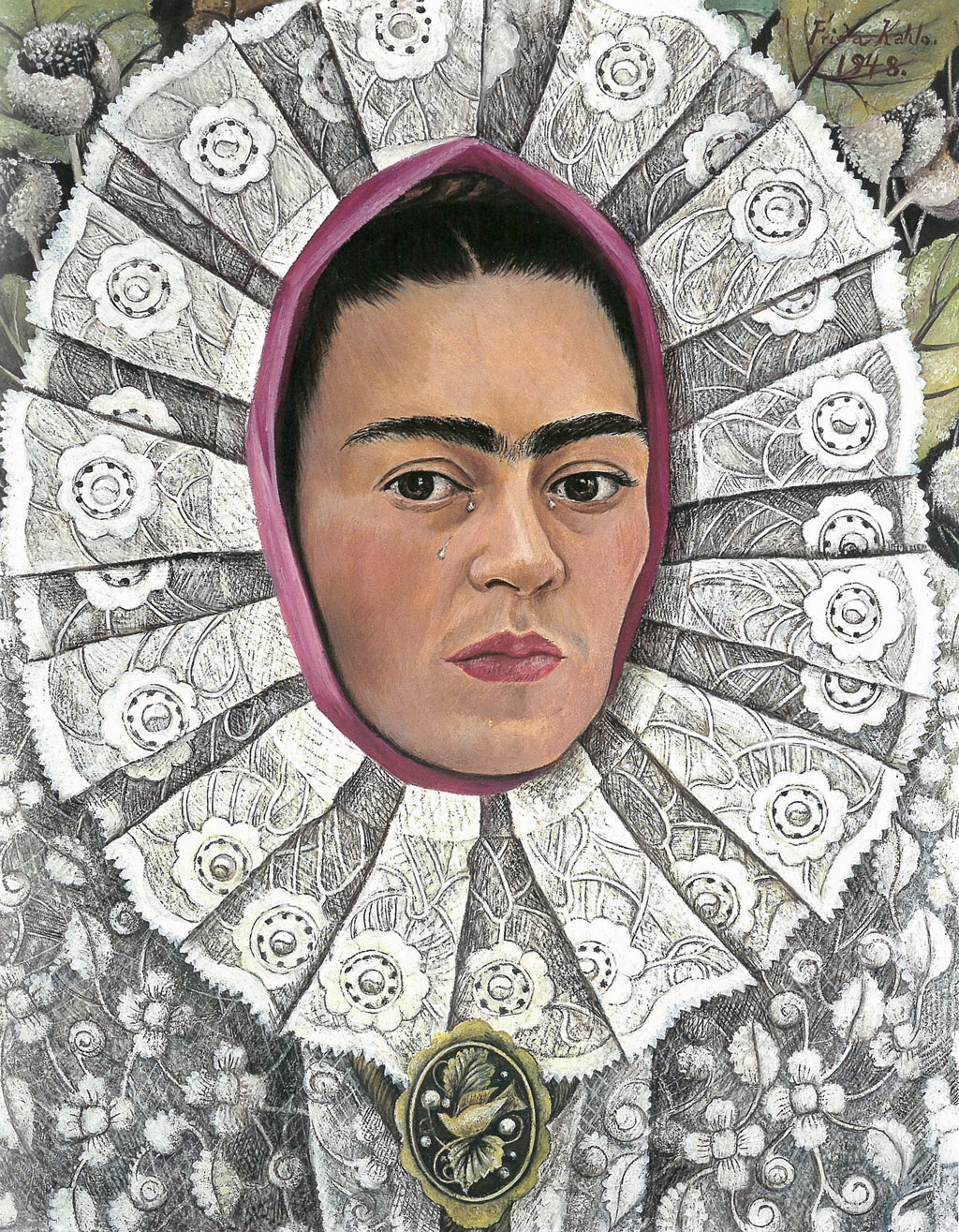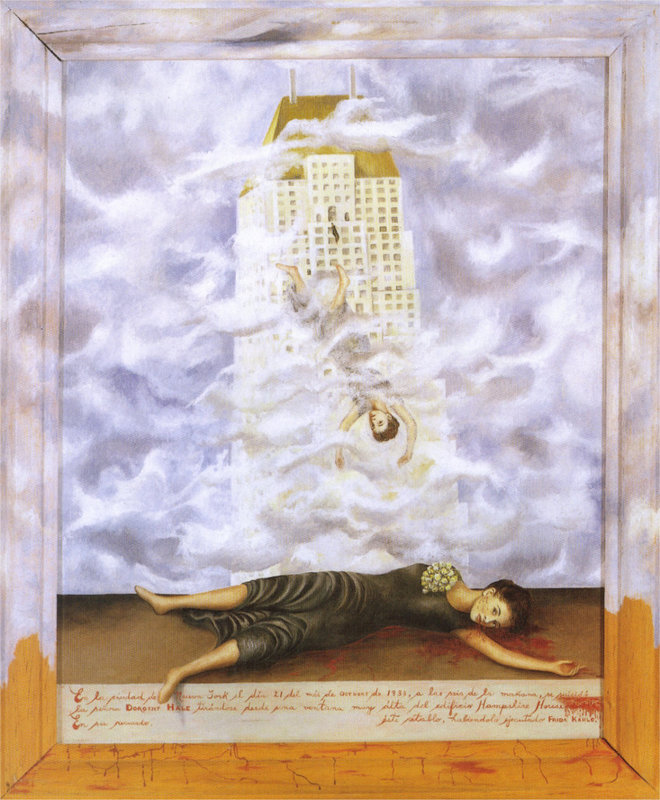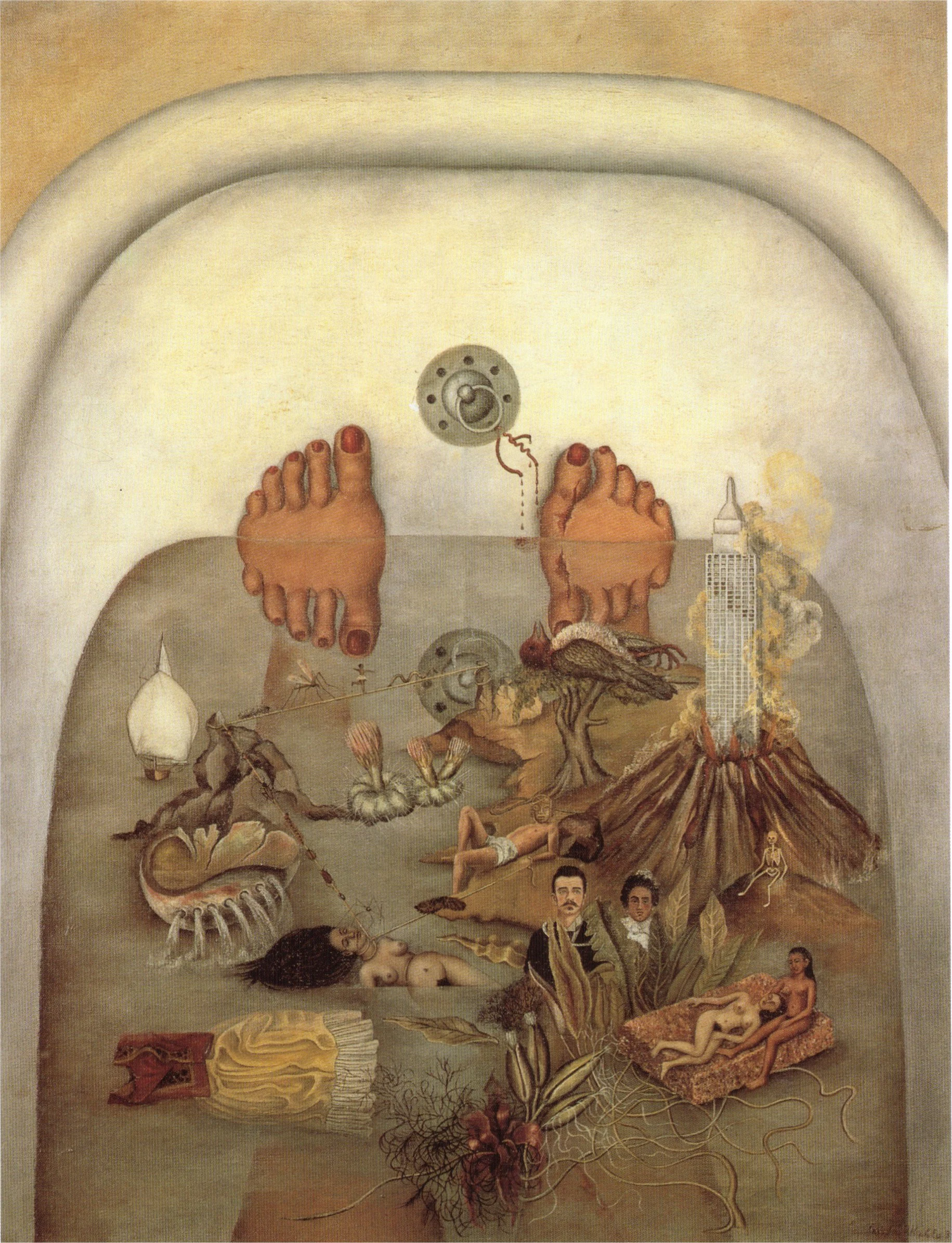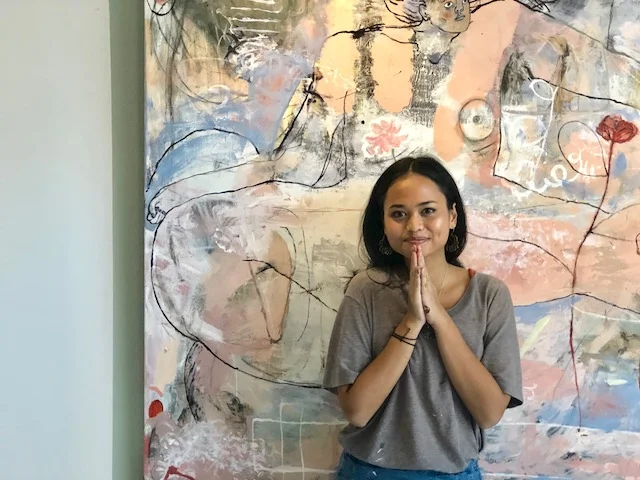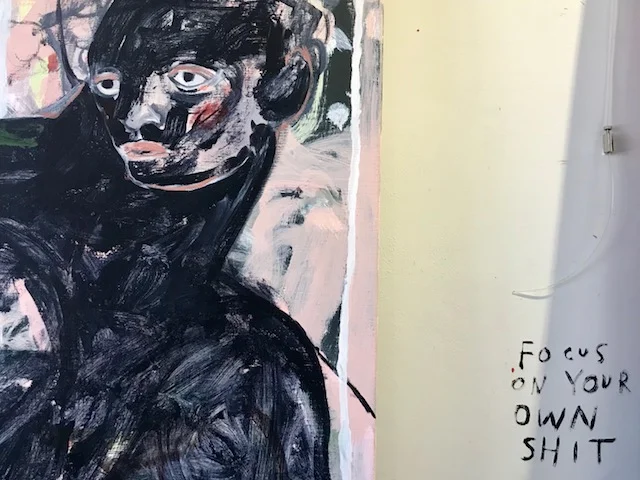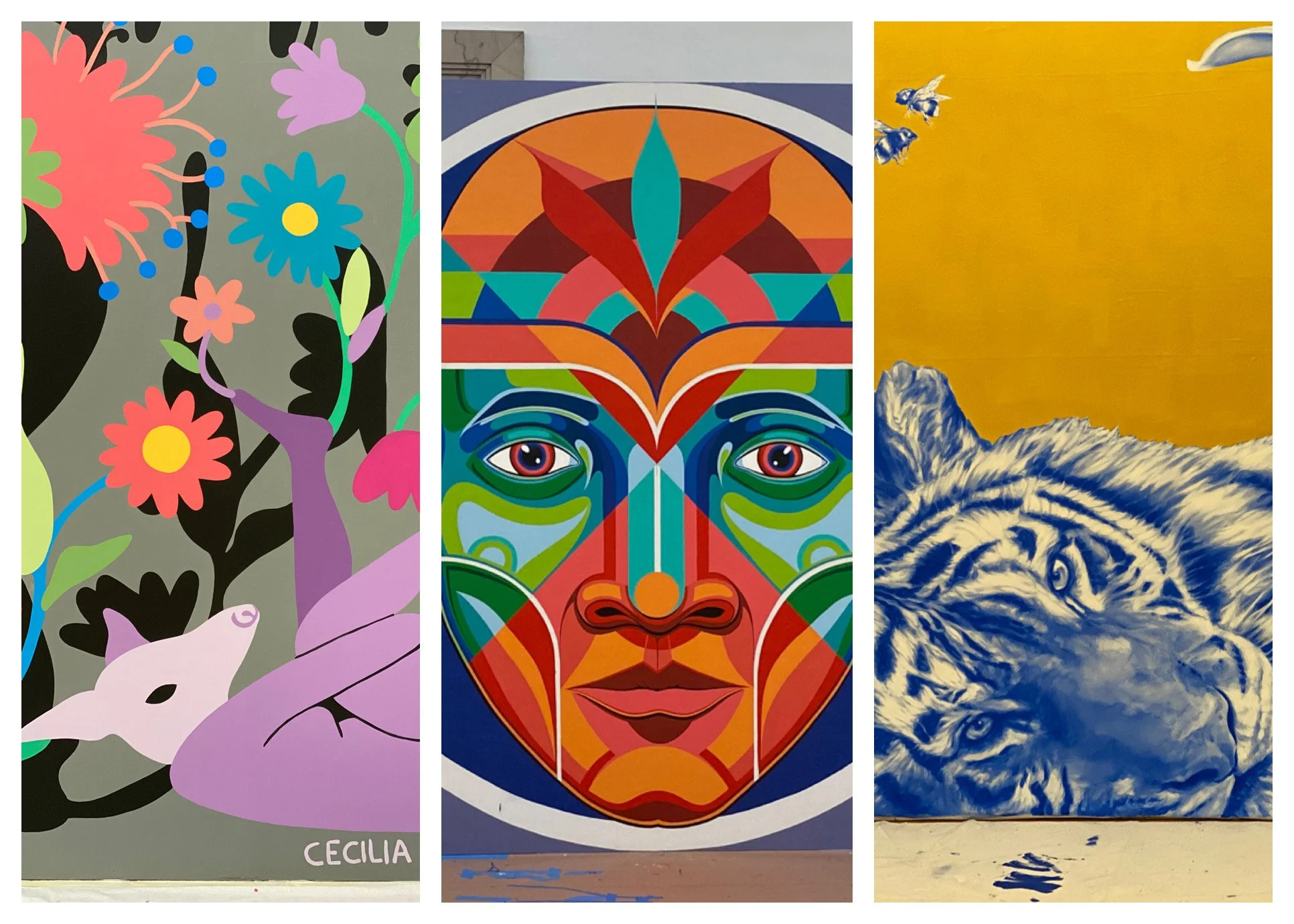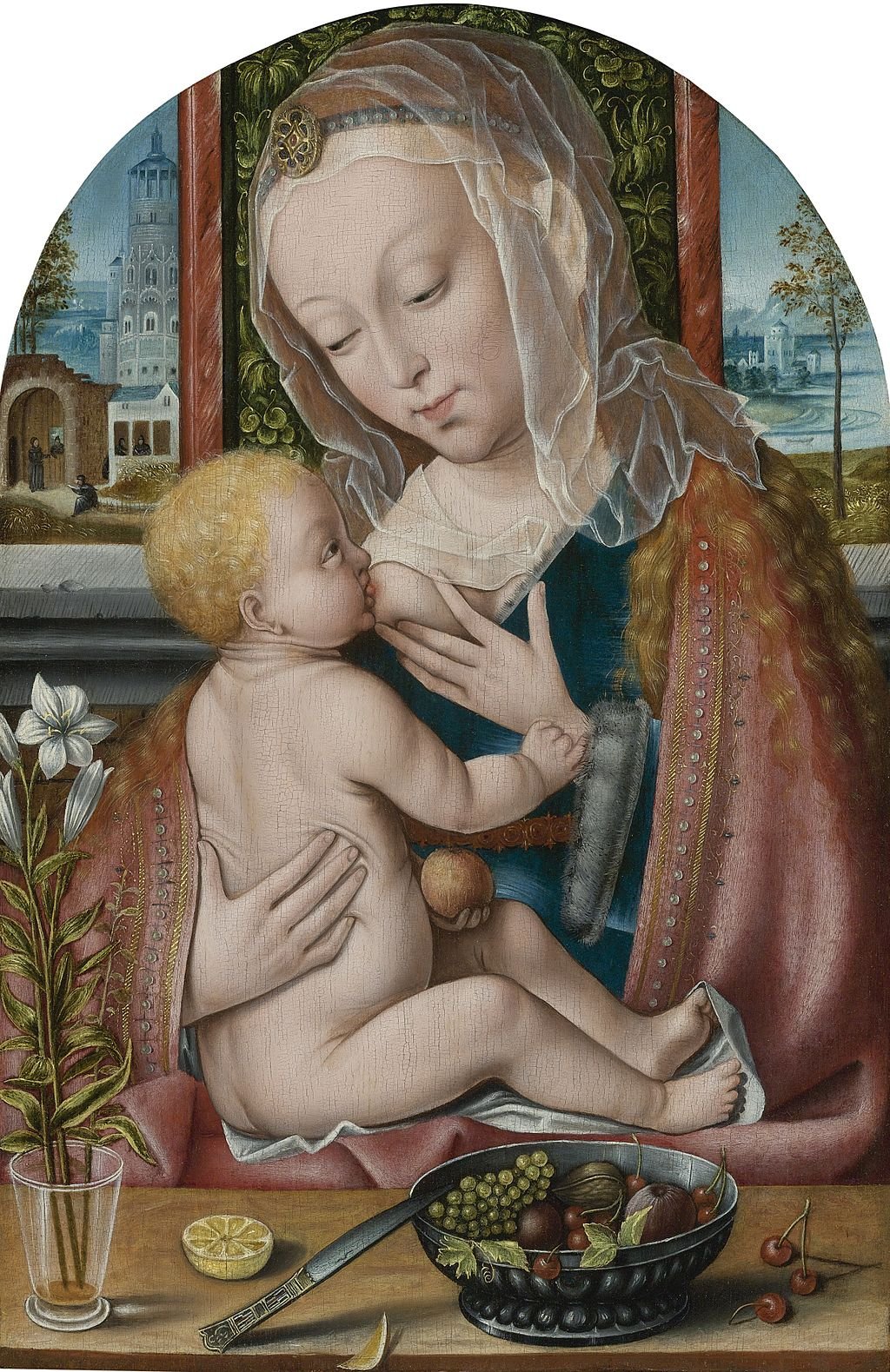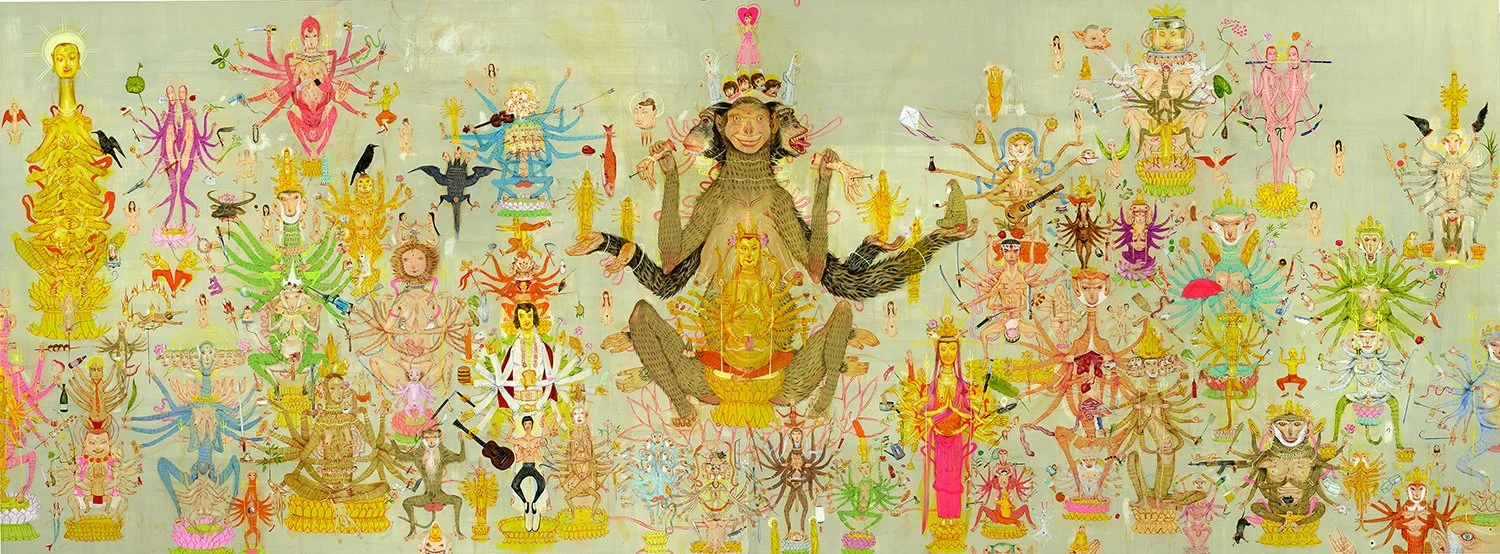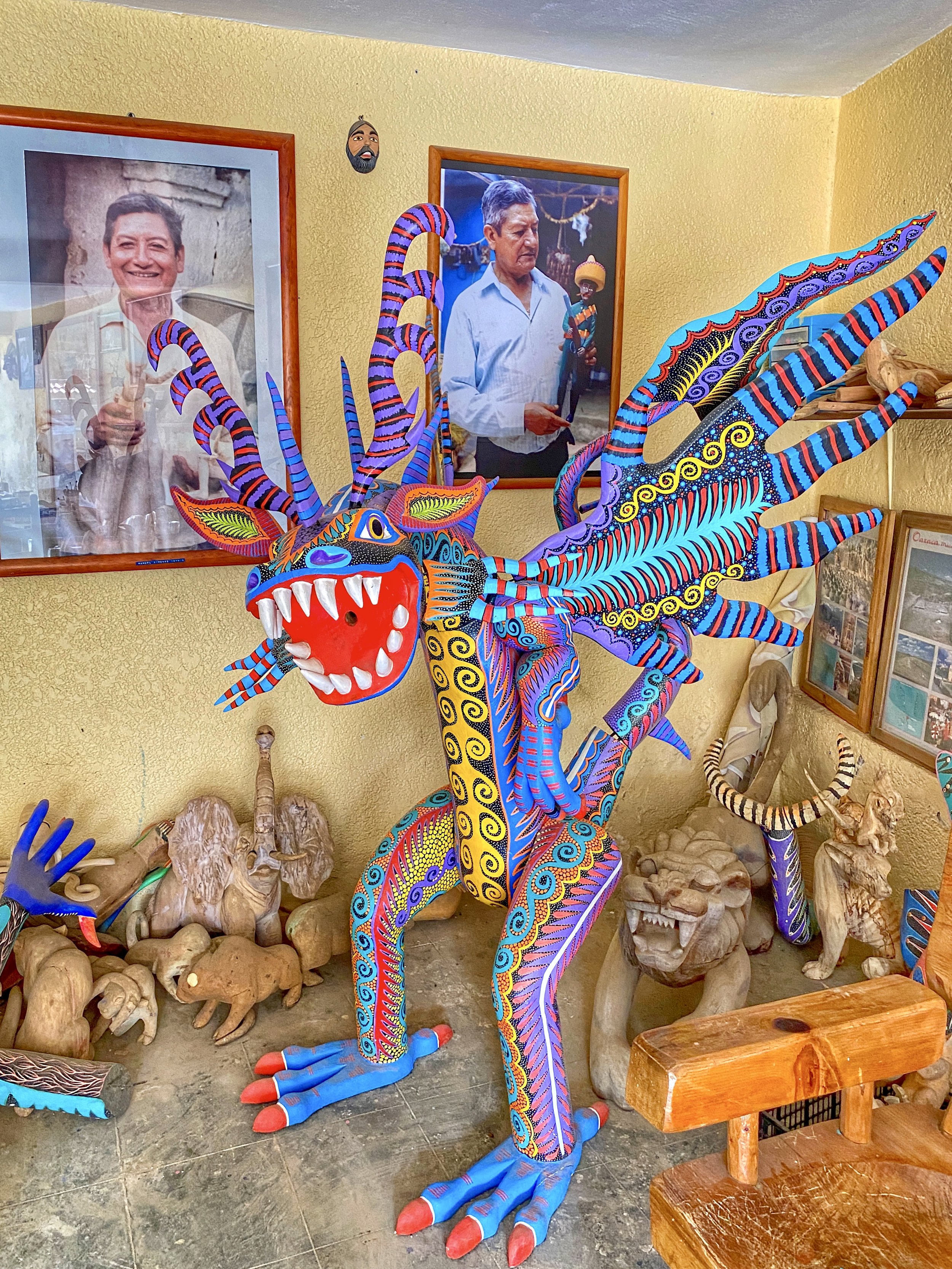Make the rounds at the Palace of Fine Arts in CDMX’s Centro to see works from some of Mexico’s most famous muralists, including Diego Rivera, José Clemente Orozco and David Alfaro Siqueiros.
This provocative mural was being renovated when we visited the Palacio de Bellas Artes and could only be viewed from across the way.
On our first trip to Mexico City, we only admired the Palacio de Bellas Artes from afar — namely, from the Sears across the street, which affords the best view of that gorgeous Art Nouveau dome, glowing in an ombre that starts with bright saffron and fades to pale yellow.
Instead, we followed a scavenger hunt of sorts, rambling around Centro in a search for its most Instagrammable spots.
The Palacio de Bellas Artes is more than just a pretty façade — there’s a gallery of famous murals inside.
This time, we planned to actually enter the Palacio de Bellas Artes, though we had no idea what lay within. Duke and I were pleasantly surprised to discover that the top floor was devoted to a gallery of murals from some of Mexico’s most famous artists.
The inside of the Palace of Fine Arts in Mexico City isn’t too shabby, either. Be sure to get tickets for the mural museum when you visit.
We purchased our tickets on the ground floor, then climbed the grand staircases up two flights. The murals form a ring around the space, with the center open, letting you look down at the palace’s lobby or admire the murals from afar. When we visited, one of the murals was being restored and we could only see it from across the way.
Sit and admire Diego Rivera’s kooky mural — which Rockefeller rejected.
El Hombre en el Cruce de Caminos o El Hombre Controlador del Universo
Translation: Man at the Crossroads, or Man, Controller of the Universe
Date: Date: 1934
Artist: Diego Rivera
It’s a battle between capitalism, as represented by figures including Charles Darwin (the fellow with a white beard surrounded by animals)…
…and Communism, depicted on the righthand side, with Leon Trotsky, Karl Marx and Friedrich Engels all making appearances.
Fascinating fact: The original Man at the Crossroads was commissioned for the Rockefeller Center in New York City. But when Nelson Rockefeller got wind that it included a depiction of Vladimir Lenin and a Soviet May Day parade, he ordered it destroyed — before it was even completed.
González Camarena’s mural moves from slavery to spiritual liberation.
Liberación o La Humanidad Se Libera de la Miseria
Translation: Liberation, or Humanity Frees Itself From Misery
Date: 1963
Artist: Jorge González Camarena
Fascinating facts: This is a re-creation of a no-longer-existing mural that had been painted on the Edificio Guardiola, where the Bank of Mexico placed its vaults. The first part shows a man tied up in a coffin and a nude tattooed woman to protest agrarian policies after the Mexican Revolution and slavery. The last section to the far right depicts a mestizo woman (someone of indigenous and European blood) — a radiant symbol of spiritual liberation.
Siqueiros’ mural presents revisionist history, where an Aztec ruler isn’t conquered by the conquistadors.
Apoteosis de Cuauhtémoc o Cuauhtémoc Redivivo and Tormento de Cuauhtémoc
(Díptico Monumento a Cuauhtémoc)
Translation: Apotheosis of Cuauhtémoc, or Cuauhtémoc Resurrected and Torment of Cuauhtémoc (Monumental Diptych to Cuauhtémoc)
Date: 1951
Artist: David Alfaro Siqueiros
The Aztec ruler Cuauhtémoc had his feet burned until he caved and told the Spanish where to find a treasure trove.
Fascinating facts: One panel shows a revisionist history, what the artist wishes had happened — that the Aztec emperor Cuauhtémoc had defeated the Spanish conquistadors. The other shows what really happened: The ruler was tortured by the Spanish, who burned his feet until he revealed the location of Montezuma’s treasure.
Note the personifications of the wind blowing in this Art Deco mural fragment.
Alegoría del Viento o El Ángel de la Paz o La Aviación
Translation: Allegory of the Wind, or The Angel of Peace, or Aviation
Date: 1928
Artist: Roberto Montenegro
Fascinating facts: This is the only portion of the original Art Deco work at the former Colegio Máximo de San Pedro y San Pablo that survived the humidity. It’s the oldest mural in the collection.
Man vs. machinery battle it out in Orozco’s bizarre and disturbing mural.
Katharsis o La Eterna Lucha de la Humanidad por un Mundo Mejor
Translation: Catharsis, or Humanity’s Eternal Struggle for a Better World
Date: 1935
Artist: José Clemente Orozco
A detail of La Chata, the infamous pug-nosed prostitute in Orozco’s mural
Fascinating facts: Orozco, like his contemporary Diego, was no stranger to controversy, as evidenced by this horrific vision of dystopia. The naked woman, wearing a massive pearl necklace, grins outward and opens her legs to a piece of machinery. She’s known as La Chata (Pug Nose) and has the dubious honor of being considered one of the most repulsive images in art.
Rivera’s mural panels poked fun at White tourists and played upon circus themes.
México Folclórico y Turístico and Dictadura
(Políptico Carnaval de la Vida Mexicana)
Translation: Folkloric and Touristic Mexico and Dictatorship (Carnival of Mexican Life Polyptych)
Date: 1936
Artist: Diego Rivera
There’s a lot to find offensive in these murals, from an officer depicted as a pig to a flag that sports a swastika.
Fascinating facts: Alberto Pani commissioned the series for his Hotel Reforma. But Diego, ever the shit-stirrer, inserted political motifs and unflattering representations of tourists. Pani “touched up” the offensive bits; Diego sued and won, and was allowed to restore his work. But the hotelier put the work into storage, where it remained hidden away until it was sold to the government in 1963 and installed at Bellas Artes.
Murals are, by their nature, public works of art. If you’re in CDMX’s Centro neighborhood, take a quick spin through the murals of the Palacio de Bellas Artes — and see if you can spot all the controversial sections. –Wally
Palacio de Bellas Artes
Avenida Juárez s/n
Centro
Cuauhtémoc
06050 Ciudad de México
Mexico


